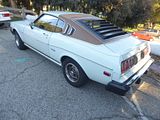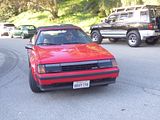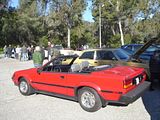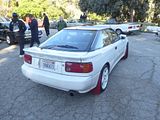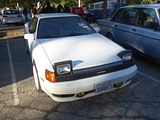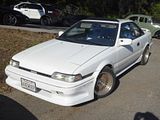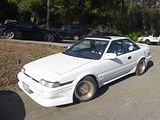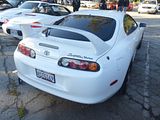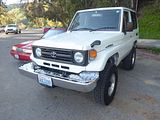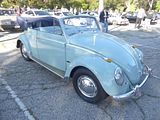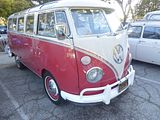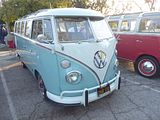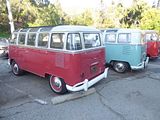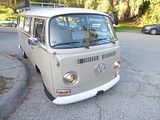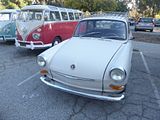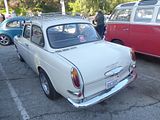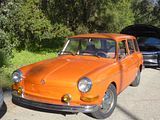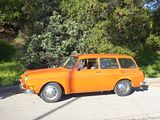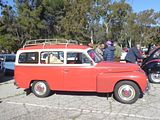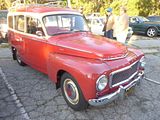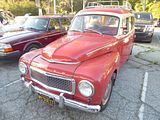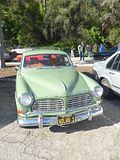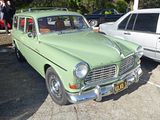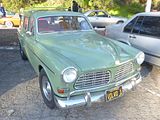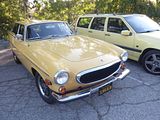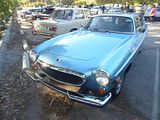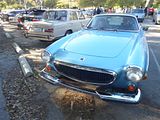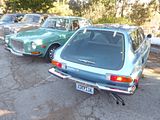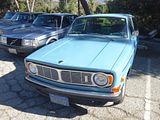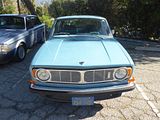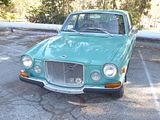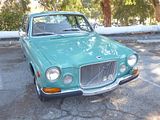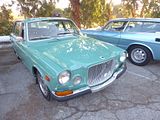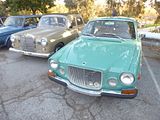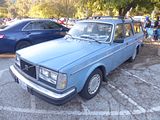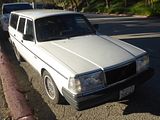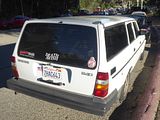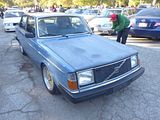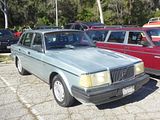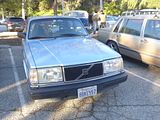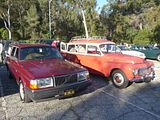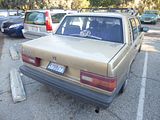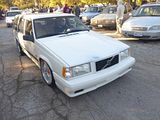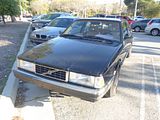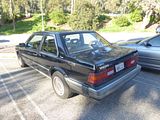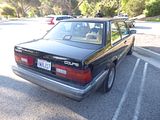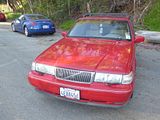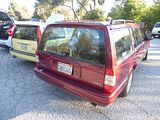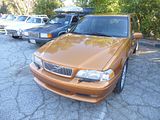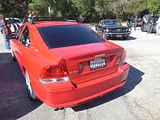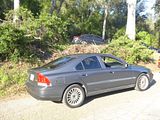What is widely thought to have been the first “Cars and Coffee” event took place in Irvine in Southern California. That event, sadly, has long been closed down, a consequence of a combination of outgrowing the site and also too much reprehensible and plan dangerous behaviour by a small number of attendees. Of course, even before its demise, a number of similar events spring up, not just locally, but right across the USA and beyond into other countries. There are now numerous Cars and Coffee events listed just for the Greater Los Angeles area alone, and of course are the sort of morning activity that any car enthusiast will enjoy. One difference between the US events and those held in the UK that I have noticed, is that the US ones tends to start very early, often even before sunrise, and many attendees do not tend to stay that long, so if you get there at 8:30 or 9am, you may find quite a lot of empty spaces where cars have been and gone. In practical terms, therefore, that means that I need to try to find one of these events that is not too far from my chosen hotel, which is usually by the Los Angeles LAX airport. The events held in Malibu fitted the bill perfectly, and I went along there a couple of times, but when looking at schedules for this Spring 2023 trip I found that events there had ceased in mid 2022 with no explanation as to why and no indication whether they would resume. However, I did then find the event that is called the Los Angeles Cars and Coffee, which takes place monthly, in Griffith Park, which is an area which includes LA Zoo and I just north west of downtown, so about 20 – 25 minutes from my hotel when there is no traffic, and early on a Sunday morning that will be the case. The events take place monthly, on the last Sunday of the month, which was perfect, I was that was when I would be in the area, so of course I popped along to have a look. I arrived to find the main parking area that is used was already full and there were cars on the approaches from both sides, so there was plenty to look at, and with cars coming and going over the next couple of hours, there was lots to see. Many of the cars were the sort of things you would be unlikely to see at an UK event, too, reflecting both what has been sold in the US market and what appeals as classic or interesting cars, though there were a few surprises, cars I would not expect to come across in America, at all. Read on to see what attracted my camera:
AC
Original Cobra models from the 1960s are very rare indeed, as there were not that many produced and a lot of those which were made are still in the US. But there have been lots and lots of replicas, recreations and continuation models and there was an example here.
ALFA ROMEO
First of the all-new Giulia models to appear was the Berlina, launched in 1962. The styling was quite straight forward, but great attention was paid to detail. The engine bay, cabin and boot were all square shaped. But the grille, the rooflines and details on the bonnet and boot made for an integrated design from bumper to bumper. Thanks to Alfa Romeo using a wind tunnel during its development, the Giulia was very aerodynamic with a drag coefficient of Cd=0.34, which was particularly low for a saloon of the era and not a bad figure even for cars of today. Couple that with the fact that Alfa Romeo was one of the first manufacturers to put a powerful engine in a light-weight car (it weighed about 1,000 kilograms) and thanks to an array of light alloy twin overhead camshaft four-cylinder engine, similar to that of the earlier Giulietta models range, the car had a lively performance which bettered that of many sports cars of the day. The Tipo 105.14 was the first model, with a 1,570 cc Twin Cam engine with single down-draft carburettor generating 91 hp at 6500 rpm. The “TI” nomenclature referred to a class of Italian saloon car racing known as “Turismo Internazionale”, and had previously been applied to higher-performance versions of the 1900 and Giulietta saloons in the 1950s. However, for the Giulia saloon, the Ti was at first the only version available, and later, with the introduction of the TI Super and Super, the TI became the base version for the 1,600 cc engine class. The steering column gearchange (the only one in the Giulia range) was replaced with a floor change for 1964 (Tipo 105.08). Right hand drive cars, available from 1964, only ever had a floor change (Tipo 105.09). Brakes were by drums all around at first. Discs were introduced later, first at the front, and later all around. A brake servo was not fitted at first, but was introduced in later cars. The steering wheel featured the only horn ring ever in the Giulia range. The dashboard with a strip speedo is a notable feature, as is the steering wheel with a horn ring. The Giulia TI was phased out in 1968 and re-introduced as the austerity model 1600 S. Tipo 105.16 was a special racing model introduced in 1963. Quadrifoglio Verde stickers on the front wings were a distinguishing feature. Only 501 were made for homologation and today it is very rare and desirable. The 1,570 cc engine was fitted with two double-choke horizontal Weber 45DCOE carburettors for 110 hp at 6500 rpm. The body was lightened and a floor gearchange was fitted as standard, as were alloy wheels of very similar appearance to the standard steel ones of the TI. The TI’s instrument cluster with its strip speedometer was replaced with a three-instrument binnacle comprising speedometer, tachometer and a multi-gauge instrument (fuel, water temperature, oil temperature and pressure) – these instruments were similar to those fitted to the contemporary Giulia Sprint and Sprint Speciale coupes and Spider convertibles. The steering wheel was a three-spoke item with centre hornpush, also similar to that of the more sporting models. Braking was by discs all around, although the first cars used drums and early disc models lacked a servo which was introduced later. The police cars seen in The Italian Job were of this type. Tipo 105.06 was an austerity model made from 1964 to 1970 with a 1,290 cc single-carburettor engine for 77 hp at 6000 rpm. Four-speed gearbox with floor change fitted as standard (the 1300 was the only Giulia model not fitted with a five-speed gearbox). Though the engine was given a 105 series type number, it was basically the engine from the 101 series Giulietta Ti. This model appears not to have been exported to many markets outside Italy, if at all. Braking was by discs all around, without a servo at first, later with a servo. Tipo 105.26 was introduced in 1965. It transferred the technology from the racing TI Super to a road car, to make the most successful Giulia saloon. 1,570 cc engine with two double-choke Weber 40DCOE carburettors for a milder, but torquier tune than the TI Super – 97 hp at 5500 rpm. There was a new dashboard with two large round instruments (speedo and tacho) and clock, a sportier steering wheel with three aluminium spokes and centre horn push, similar to that of the Ti Super, later changed for one with the horn pushes in the spokes. All-around disc brakes with servo were fitted as standard from the outset. The serpent crest of the Sforza family appears in a badge on the C-pillar and is a distinguishing feature of the Super. For 1968, there was a suspension update, including revised geometry and a rear anti-roll bar. The wheels were changed in size from 5J x 15 to 5J x 14, and tyres from 155/15 to 165/14. For 1970, updates included dual-circuit brakes, centre-mounted handbrake lever to replace under-dash “umbrella handle”, larger external doorhandles, and top-hinged pedals (the latter in left hand drive models only; right hand drive continued with bottom-hinged pedals to the end of production). In 1972, Tipo 105.26 was rationalised into the Giulia 1.3 – Giulia 1.6 range. Tipo 105.39 built from 1965 to 1972. Right hand drive model replaced in 1970 by the 1300 Super. 1,290 cc engine with single down-draft carburettor for 81 hp at 6000 rpm. Unlike the re-deployed 101-series Giulietta engine of the austerity-model 1300, the 1300 ti motor was a 105 series engine, basically that of the sportier GT1300 Junior coupe with different camshaft timing (but the same camshafts) and induction system. Five-speed gearbox. Three-spoke bakelite steering wheel with plastic horn push covering the centre and spokes. Dashboard initially with strip speedo like that of the TI. For 1968, updates included a dashboard based on that of the Super, but with a simpler instrument binnacle, still featuring two large round instruments (speedo and tacho) and a separate fuel gauge, and the same suspension, wheel and tyre updates applied to the Giulia Super in the same year. For 1970, updates included dual-circuit brakes, centre handbrake, larger external doorhandles and top-hinged pedals (on left hand drive cars only), again as applied to the Super for that year. Tipo 105.85 was basically a Giulia TI re-introduced in 1968 as a lower-level model to come between the 1300 and 1300 ti on one hand, and the Super on the other. It had a re-interpretation of the 1,570 cc single-carburettor engine for 94 hp at 5500 rpm and similar trim to the 1300 ti. Replaced in 1970 by the 1300 Super which offered similar performance in a lower tax bracket. The last cars from 1970 featured the top-hinged pedals, centre handbrake and dual-circuit brakes as for the Super and 1300 ti. Tipo 115.09 was introduced in 1970. It was basically a 1300 ti fitted with the engine from the GT 1300 Junior coupe that featured two double-choke horizontal carburettors; the engine actually had the GT 1300 Junior type number. This model was rationalised into the Giulia Super 1.3 – Giulia Super 1.6 range in 1972. In 1972 a rationalisation of the Giulia range saw the Super 1300 (Tipo 115.09) and the Super (Tipo 105.26) re-released as the Super 1.3 and Super 1.6. The two models featured the same equipment, interior and exterior trim, differing only in engine size and final drive ratio. The 1300 ti was dropped. A small Alfa Romeo badge on the C-pillar is a distinguishing feature, as are hubcaps with exposed wheel nuts. In December 1972 Alfa-Romeo South Africa released the 1600 Rallye. This locally developed more powerful 1600 cc version of the 1300 Super used the 1300’s single-headlight body shell. The car was largely ready for competition and was only planned to be built in limited numbers, and was fitted with racing-style rear-view mirrors, rally lamps, fully adjustable seats, and a limited-slip differential. Claimed power was 125 hp. The Giulia Super range was re-released in 1974 as the Nuova Super range, including the Giulia Nuova Super 1300 and 1600 This featured a new black plastic front grille and a flat boot lid without the characteristic centre spine. Otherwise the cars differed little from their Giulia Super predecessors and bore the same Tipo numbers with an S suffix. A Nuova Super fitted with a Perkins 1,760 cc diesel with 54 hp at 4000 rpm, was the firm’s first attempt at diesel power. The same Perkins diesel was used also in Alfa Romeo F12 van. The diesel version was slow, 138 km/h (86 mph), and the engine somehow unsuitable for a sport sedan so it was not big seller, only around 6500 examples were made in 1976 and the car was not sold in the UK. Production of the Giulia ceased in 1977.
Alfa replaced the Giulia-based Spider model with an all-new design which finally made its debut in 1966 together with the Giulia Sprint GT Veloce at an event organised in Gardone Riviera. With its boat tailed styling, it quickly found favour, even before taking a starring role in the film “The Graduate”. The original 1600cc engine was replaced by a more powerful 1750cc unit at the same time as the change was made to the rest of the range, and the car continued like this until 1970, when the first significant change to the exterior styling was introduced on the 1750 Spider Veloce, with the original’s distinctive elongated round tail changed to a more conventional cut-off tail, called the “Kamm tail”, as well as improving the luggage space. Numerous other small changes took place both inside and out, such as a slightly different grille, new doorhandles, a more raked windscreen, top-hinged pedals and improved interior trim. 1971 saw the Spider Veloce get a new, larger powerplant—a 1962 cc, 132 hp unit—and consequently the name was changed from 1750 Spider Veloce to 2000 Spider Veloce. The 1600 Spider restarted production a year later as the Spider 1600 Junior, and was visually identical to the 1300. 1974 saw the introduction of the rare, factory request, Spider-Targa. Based upon the Spider, it featured a Porsche style solid rear window and lift out roof panels, all made out of black GRP type material. Less than 2,000 models of such type were ever made and was the only part solid roof Spider until the introduction of the factory crafted hard top. The 1300 and 2000 cars were modified in 1974 and 1975 respectively to include two small seats behind the front seats, becoming a “two plus two” four seater. The 1300 model was discontinued in 1977. Also, between 1974 and 1976, the early-style stainless-steel bumpers were discontinued and replaced with black, rubber-clad units to meet increasingly stringent North American crash requirements. 4,557 examples of the 1300 Junior were made and 4,848 of the 1600 Junior as well as 16,320 2000 Spider Veloces and 22,059 of 2000 Spider Veloce US version. There were also 4,027 1750 Spider Veloces produced.
ALPINA
The first C2 combined the wider bore of the M20B25 with the slightly larger 76.8 mm (3.02 in) crankshaft of an M20B23, to create a torquier engine of 2552 cc. This version put out 185 PS and 265 Nm (195 lb/ft), 74 units were built between 1985 and November 1986. After the C2 2.7 appeared in the spring of 1986, the 2.5 was slightly upgraded and gained 5 horsepower. However, to indicate its “little brother” position in the lineup, the name was changed to C1 2.5. When the September 1987 facelift model of the E30 was introduced, the 2.5 litre C1 was discontinued, although a few cars were finished into 1988. The larger yet 2.7 litre unit was introduced in February 1986 in uncatalyzed C2/1 form. This engine, sharing the dimensions of the M20B27, develops 210 PS at 5800 rpm and shows what the engine was really capable of. Originally installed in the E30-based Alpina C2 2.7, with available four-wheel drive, the catalyzed C2/2 appeared in the interim C2 2.7 Kat in March 1987. This was then renamed “B3 2.7” five months later, by which time the “C2” labelled cars were discontinued. The B3 2.7 continued to be available until June 1992, in all body variants and drivetrain configurations (excepting automatics) in which the E30 was offered. Around 1986, 67 “B6 2.7”-labelled C2-engined E30s were built for export to Japan, where the larger 3.0 L B6 3.5 had a hard time passing emissions regulations. Aside from the C2 drivetrain, the B6 2.7 is cosmetically identical to the B6 3.5. Later C2 2.5 models (C2 /3 2.5) were based on the 325i. Alpina used the M20B25 engine with very few modifications compared to earlier models. Again the cylinder head was decked to increase compression ratio, and it was ported and polished. The ECU was also remapped. Max power is 188 hp, with 235 Nm (173 lb/ft) of torque. 0–100 km/h (62 mph) was achieved in 7.2 seconds. Top speed is 220 km/h (137 mph). Only 50 cars were built. The C2 /1 2.7 used the 325e eta model engine block, crank and rods, but with custom flat head pistons provided by Mahle. Originally Alpina modified the “200” casting number cylinder head specific to the 325e with bigger intake valves, larger air intake ports, and redesigned the valve chamber for better flow. A more aggressive camshaft was used, with higher lift and duration, and harder valve springs were installed. Compression ratio was increased to 10.2:1. The C2/1 2.7 made 210 bhp with 267 Nm (197 lb/ft) of torque and was the fastest E30 available at the time[citation needed] (227 km/h (141 mph) top speed). 108 cars were built. Later C2 /2 2.7 (and early 1987 B3 2.7) used the M20B25 block with ETA (325e) crank and rods. The intake manifold was also redesigned for better flow. The head was decked to improve compression ratio (10.1:1 for models with the 731 head, 9.6:1 for later “885” head models with catalytic converter) and matched with custom pistons – flat Mahle pistons for engines equipped with the 731 head, and domed KS pistons for engines equipped with the 885 head. Larger throttle bodies were installed (the C2/2 version uses the same throttle body as the M20B25 325i). A total of 309 cars were built between 1986 and 1987. The C2/2 2.7 makes 204 bhp and 266 Nm (196 lb/ft) of torque. Top speed is 224 km/h (139 mph) and 0–100 km/h (62 mph) is achieved in 7.5 seconds. The B3 2.7 is similar to late C2/2 2.7 cars. It uses the M20B25 block with M20B27 crank and custom rods. The 885 head is exclusively used for the B3 model. The head is decked ~ 1 mm to improve CR to 9.6:1 and matched with custom domed KS or Mahle pistons. Intake and cylinder head are ported and polished. Custom ECU mapping is used. Engine management is Bosch Motronic 1.3. The B3 2.7 is equipped with a catalytic converter to conform to emission standard of the time. Performance numbers are similar to the later C2/2 2.7 cars. 254 cars were built from 1987 to 1992.
ASTON MARTIN
Following the unveiling of the AMV8 Vantage concept car in 2003 at the North American International Auto Show designed by Henrik Fisker, the production version, known as the V8 Vantage was introduced at the Geneva Motor Show in 2005. The two seat, two-door coupé had a bonded aluminium structure for strength and lightness. The 172.5 inch (4.38 m) long car featured a hatchback-style tailgate for practicality, with a large luggage shelf behind the seats. In addition to the coupé, a convertible, known as the V8 Vantage Roadster, was introduced later in that year. The V8 Vantage was initially powered by a 4.3 litre quad-cam 32-valve V8 which produced 380 bhp at 7,300 rpm and 409 Nm (302 lb/ft) at 5,000 rpm. However, models produced after 2008 had a 4.7-litre V8 with 420 bhp and 470 Nm (347 lbft) of torque. Though based loosely on Jaguar’s AJ-V8 engine architecture, this engine was unique to Aston Martin and featured race-style dry-sump lubrication, which enabled it to be mounted low in the chassis for an improved centre of gravity. The cylinder block and heads, crankshaft, connecting rods, pistons, camshafts, inlet and exhaust manifolds, lubrication system and engine management were all designed in house by Aston Martin and the engine was assembled by hand at the AM facility in Cologne, Germany, which also built the V12 engine for the DB9 and Vanquish. The engine was front mid-mounted with a rear-mounted transaxle, giving a 49/51 front/rear weight distribution. Slotted Brembo brakes were also standard. The original V8 Vantage could accelerate from 0 to 60 mph in 4.8 seconds before topping out at 175 mph. In 2008, Aston Martin introduced an aftermarket dealer approved upgrade package for power and handling of the 4.3-litre variants that maintained the warranty with the company. The power upgrade was called the V8 Vantage Power Upgrade, creating a more potent version of the Aston Martin 4.3-litre V8 engine with an increase in peak power of 20 bhp to 400 bhp while peak torque increased by 10 Nm to 420 Nm (310 lb/ft). This consists of the fitting of the following revised components; manifold assembly (painted Crackle Black), valved air box, right and left hand side vacuum hose assemblies, engine bay fuse box link lead (ECU to fuse box), throttle body to manifold gasket, intake manifold gasket, fuel injector to manifold seal and a manifold badge. The V8 Vantage had a retail price of GB£79,000, US$110,000, or €104,000 in 2006, Aston Martin planned to build up to 3,000 per year. Included was a 6-speed manual transmission and leather-upholstery for the seats, dash board, steering-wheel, and shift-knob. A new 6-speed sequential manual transmission, similar to those produced by Ferrari and Lamborghini, called Sportshift was introduced later as an option. An open-topped model was added to the range in 2006 and then in the quest for more power a V12 Vantage joined the range not long after. All told, there were no fewer than 18 different versions of the car before its replacement with a new and quite different looking model in 2017.
BENTLEY
The success of the Mulsanne Turbo and Turbo R brought new life to Bentley, changing the position of the preceding 15 years where sales of the marque’s badge-engineered Rolls Royce cars had been only a very small percentage of the company’s sales. The obvious next step would be further to enhance the distinctive sporting nature of the Bentley brand and move away from a Bentley that was merely a re-badged Rolls Royce. Bentley appointed stylists John Heffernan and Ken Greenley to come up with ideas for a new, distinctive, Bentley coupé. The fibreglass mock up was displayed at the 1984 Geneva Motor Show in Rolls-Royce’s “Project 90″ concept of a future Bentley coupé. The concept was met with an enthusiastic reception, but the Project 90 design was largely shelved as the company began to work towards a replacement for the Rolls-Royce Corniche. During this process, Graham Hull, chief stylist in house at Rolls Royce, suggested the designs before the board for the Corniche, would suit a Bentley coupé better. From this point it was decided the Corniche could continue as it was, and efforts would once again be channelled into a new Bentley coupé. In 1986 Graham Hull produced a design rendering of a new Bentley coupé which became the Continental R. Based on the Rolls Royce SZ platform (which was an evolution of the SY platform), an aerodynamically shaped coupé body had been styled. John Heffernan and Ken Greenley were officially retained to complete the design of the Continental R. They had run the Automotive Design School at the Royal College of Art and headed up their own consultancy, International Automotive Design, based in Worthing, Southern England. Greenley and Heffernan liaised constantly throughout the styling process with Graham Hull. The interior was entirely the work of Graham Hull and the small in house styling team at Rolls Royce. The shape of the car was very different from the somewhat slab sided four door SZ Rolls-Royce and Bentley vehicles of the time and offered a much improved 0.37 coefficient of drag. The Continental R also featured roof-cut door frames, a necessity to allow easier access into the car which had a lower roof line than its 4-door contemporaries. A subtle spoiler effect was also a feature of the rear. The finished car is widely acknowledged as a very cleverly styled vehicle, disguising its huge dimensions (The Continental R is around 4” longer than a 2013 long wheelbase Mercedes S Class) and a very well proportioned, extremely attractive, car. The “Continental” designation recalls the Bentley Continental of the post-war period. The “R” was meant to recall the R Type Bentleys from the 1950s as well as the Turbo R of the 1980s and 90’s where the “R” refers to “roadholding”. 1504 Continental R and 350 Continental T models were made before production finally ceased in 2003. The revival of the Bentley marque following the introduction of the Bentley Mulsanne Turbo, and then the Continental R, is widely acknowledged to have saved Rolls Royce Motor cars and formed the groundwork which led to the buyout and parting of the Rolls Royce and Bentley brands in 1998. Bentley was once again capable of standing alone as a marque in its own right.
BMW
During the 1950s, the BMW line-up consisted of luxury cars with displacements of two litres or greater, economy cars powered by motorcycle engines, and motorcycles. With their luxury cars becoming increasingly outdated and unprofitable and their motorcycles and economy cars becoming less attractive to an increasingly affluent society, BMW needed a car in the 1.5 to 2 litre class to become competitive. Prototypes powered by a 1.6 L engine based on one bank of the BMW OHV V8 engine were built and evaluated without a convincing result. In 1960, Herbert and Harald Quandt invested heavily in BMW, and gained a controlling interest in the company. That year, the “Neue Klasse” project was begun. Led overall by Fritz Fiedler, the project had Eberhard Wolff in charge of chassis design, Wilhelm Hofmeister in charge of styling and body engineering, and Alex von Falkenhausen in charge of engine design. The team was to produce a new car with a new engine, which BMW had not done since the 303 in 1933. The prototype was introduced in September 1961 at the Frankfurt Motor Show as the BMW 1500 four-door saloon, alongside the BMW 3200 CS, the last BMW with the OHV V8. The term New Class referred to the 1.5–2–litre class from which BMW had been absent since World War II. Introduced in September 1961 at the Frankfurt Motor Show, the BMW 1500 entered regular production in October 1962 and was manufactured until December 1964. The M10 4-cylinder engine used oversquare dimensions of 82 mm bore and 71 mm stroke produced 80 hp in the BMW 1500. Contemporary reports praised the all-round visibility and the commanding driving position while recording that it was necessary to lean forward a little to engage first and third gears due to the long travel distance of the gear lever. The large 40 cm tall luggage compartment was also commended. The 1500 could accelerate to 100 km/h (62 mph) in approximately 15 seconds. The performance was at the time considered lively in view of the engine size, and although the engine needed to be worked hard in order to achieve rapid progress, it ran smoothly even at speeds above 6,000 rpm. The firm suspension and correspondingly harsh ride surprised those conditioned by the BMW 501 to anticipate a more comfort-oriented suspension setup. Notable problems that developed with the 1500 included separation of the semi-trailing arm mounts from the body, rear axle failure, and gearbox problems. These were resolved in later versions of the New Class sedan. The 1500 was replaced in 1964 by the 1600, but it was still made available in markets where capacities greater than 1500 cc incurred higher tax rates. Introduced in September 1963, the BMW 1800 was the second member of the New Class family. This model had an M10 engine with a 84 mm bore and 80 mm stroke, giving a displacement of 1,773 cc. It produced 90 hp at 5,250 rpm and 130 Nm (96 lb/ft) at 3,000 rpm. The 1800 TI (Turismo Internazionale) model featured components developed for the 1800 by the tuning company Alpina. The upgrades included dual Solex PHH side-draft carburettors and higher-compression pistons for 110 hp at 5,800 rpm and 136 Nm (100 lb/ft) at 4,000 rpm. A homologation special, the 1800 TI/SA, was introduced in 1964. The TI/SA’s engine had dual Weber DCOE-45 carburettors and a 10.5:1 compression ratio. This engine produced 130 hp at 6,100 rpm and 144 N⋅m (106 lb⋅ft) at 5,250 rpm. The TI/SA also had a Getrag five-speed gearbox, stronger anti-roll bars, and larger-diameter brake discs than the TI. 200 examples of the TI/SA were built and were only sold to licensed racing and sports drivers. An automatic transmission option was introduced in 1966 and in 1967 the 1800 was generally updated along with the 2000. The updates included interior changes (a modernized dashboard design and simpler door panels) as well as styling changes to the front grilles. In 1968 the 1,773 cc engine used in the 1800 was replaced by an engine with the 89 mm bore of the 2.0 L engine and the original 71 mm (2.8 in) stroke, which resulted in a displacement of 1,766 cc and a stroke/bore ratio of 0.798:1 (compared with the previous 1800 engine’s ratio of 0.952:1) The 1600, introduced as the replacement to the 1500 in 1964, used the 84 mm bore of the 1800 with the 1500s 71 mm stroke, resulting in a displacement of 1,573 cc, a power output of 83 hp at 5,500 rpm and 113 N⋅m (83 lb⋅ft) at 3,000 rpm. The 1600 was produced until early 1971. The engines from the 2000C and 2000CS coupes were used in the 4-door sedan body for the 2000 and 2000TI models. The 2000 sedan, released in 1965, used the 101 bhp engine from the 2000 C. The 2000TI sedan, released in 1966, used the 121 hp engine from the 2000 CS with twin Solex PHH side-draft carburettors. Intended as an upscale version of the 1800, the 2000 featured distinct wide taillights, more exterior trim, and unique rectangular headlights. The American market 2000 sedans could not have the rectangular headlights due to government regulations. A different grille with four individual round headlights, similar to the design that BMW later used in the 2500 sedan, was offered in the US. The 2000TI retained the ‘1800’ taillights and headlights. A more luxurious 2000TI-lux (later “tilux”) featured the sporty TI engine with a more high-grade interior and accessories, including a wood dashboard and optional leather seats. In 1969, BMW introduced the 2000tii (‘touring international, injected’), BMW’s first fuel-injected model, featuring Kugelfischer mechanical fuel injection. The 2000tii produced 130 hp at 5,800 rpm and 178 Nm (131 lb/ft) at 4,500 rpm. 1,952 2000tii cars were built of this final New Class sedan model.
The 1600-2, as the first “02 Series” BMW was designated, was an entry-level BMW, and was smaller, less expensive, and less well-appointed than the New Class Sedan on which it was based. BMW’s design director Wilhelm Hofmeister assigned the two-door project to staff designers Georg Bertram and Manfred Rennen. The 9.1 in shorter length and wheelbase and lighter weight of the two-door sedan made it more suitable than the original New Class sedan for sporting applications. As a result, the two door sedan became the basis of the sporting 02 Series. The 1600-2 (the “-2” meaning “2-door”) made its debut at the Geneva Show in March 1966 and was sold until 1975, with the designation being simplified to “1602” in 1971. The 1.6 litre M10 engine produced 84 hp at 5,700 rpm and 96 lb·ft. A high performance version, the 1600 TI, was introduced in September 1967. With a compression ratio of 9.5:1 and the dual Solex PHH side-draft carburettor system from the 1800 TI, the 1600 TI produced 110 hp at 6,000 rpm. Also introduced in September 1967 was a limited-production cabriolet, which would be produced by Baur from 1967 through 1971. A hatchback 1600 Touring model was introduced in 1971 but was discontinued in 1972. It was what came next which was more significant. Helmut Werner Bönsch, BMW’s director of product planning, and Alex von Falkenhausen, designer of the M10 engine, each had a two litre engine installed in a 1600-2 for their respective personal use. When they realised they had both made the same modification to their own cars, they prepared a joint proposal to BMW’s board to manufacture a two litre version of the 1600-2. At the same time, American importer Max Hoffman was asking BMW for a sporting version of the 02 series that could be sold in the United States. As per the larger coupe and 4-door saloon models, the 2.0 engine was sold in two states of tune: the base single-carburettor 2002 producing 101 hp and the dual-carburettor high compression 2002 ti producing 119 hp. In 1971, the Baur cabriolet was switched from the 1.6 litre engine to the 2.0 litre engine to become the 2002 cabriolet, the Touring hatchback version of the 02 Series became available with all engine sizes available in the 02 Series at the time and the 2002 tii was introduced as the replacement for the 2002 ti. The 2002 tii used the fuel-injected 130 hp engine from the 2000 tii, which resulted in a top speed of 185 km/h (115 mph). A 2002 tii Touring model was available throughout the run of the tii engine and the Touring body, both of which ended production in 1974. The 2002 Turbo was launched at the 1973 Frankfurt Motor Show. This was BMW’s first turbocharged production car and the first turbocharged car since General Motors’ brief offerings in the early 1960s. It produced 170 hp. The 2002 Turbo used the 2002 tii engine with a KKK turbocharger and a compression ratio of 6.9:1 in order to prevent engine knocking. Kugelfischer mechanical fuel injection was used, with a sliding throttle plate instead of the usual throttle butterfly. The 2002 Turbo was introduced just before the 1973 oil crisis, therefore only 1,672 were built. The 1802 was introduced in 1971 and was available with either the original 2-door sedan body or the 3-door Touring hatchback introduced that year. Production of the Touring model continued until 1974, with the 1802 sedan ending production the following year. The 1502, an economy model with an engine displacement of 1573 cc was introduced in 1975. This engine had a lower compression ratio of 8.0:1, therefore standard-octane petrol could be used. While the rest of the 02 Series was replaced in 1975 by the E21 3 Series, the 1502 was continued until 1977.
The first car to bear the 6 Series nomenclature was the E24, which was launched in 1976, as a replacement for the E9 model 3.0 CS and CSL coupés first produced in 1965. The 3.0 CS was almost changed by adding a few centimeters in height to make it easier for customers to get into the car. However, Bob Lutz rebelled against the decision and rough drafted an alternative version that soon became the 6 series. Production started in March 1976 with two models: the 630 CS and 633 CSi. Originally the bodies were manufactured by Karmann, but production was later taken in-house to BMW. In July 1978 a more powerful variant, the 635 CSi, was introduced that featured as standard a special close-ratio 5-speed gearbox and a single piece black rear spoiler. The bigger bore and shorter stroke facilitated max 218 hp at 5200rpm and a better torque curve. For the first year, the 635 CSi was offered in three colours (Polaris, Henna Red, Graphite), and could also be spotted by the front air dam that did not have attached fog lights. These simple cosmetic changes reportedly worked to reduce uplift on the car at high speeds by almost 15% over the non-spoiler body shape. This early model shared suspension components with the inaugural BMW 5-series, the E12. In 1979 the carburettor 630 CS was replaced with the 628 CSi with its fuel injected 2.8 litre engine taken from the BMW 528i. In 1980 the 635 CSi gained the central locking system that is also controlled from the boot. Also, the E24 body style converted from L-jetronic injection to a Bosch Motronic DME. In 1982 (Europe) and 1983 (US), the E24 changed slightly in appearance, with an improved interior and slightly modified exterior. At the same time, the 635 CSi received a new engine, a slightly smaller-bored and longer-stroked 3430 cc six to replace the former 3453 cc engine and became available with a wide-ratio 5-speed manual or an automatic. This slight change was in fact a major change as pre-1982 cars were based on the E12 5-series chassis; after mid-1982, E24s shared the improved E28 5-series chassis. The only parts that remained the same were some of the exterior body panels. E24s produced after June 1987 came with new, ellipsoid headlamps which projects beam more directly onto road surface (newly introduced E32 7-series also sporting them). The sleeker European bumpers were also discontinued. Previous cars had either a European-standard bumper or a larger, reinforced bumper to meet the US standard requiring bumpers to withstand impact at 5 mph without damage to safety-related components. 1989 was the last year for the E24 with production stopping in April. The E24 was supplanted by the considerably heavier, more complex, and more exclusive 8 Series. BMW Motorsport introduced the M 635 CSi in Europe at the Frankfurt Motor Show in 1983. It is essentially an E24 powered by the powerplant of the BMW M1 – the M88 with 286 PS). Most of the cars were equipped with special metric 415 mm diameter wheels requiring Michelin TRX tyres. A catalysed, lower compression ratio version of the car with the S38 engine (260 PS ) was introduced in the U.S. in 1987. All M6 cars came standard with a 25% rear limited slip differential. U.S. models included additional comforts that were usually optional on models sold in Europe such as Nappa leather power seats and a dedicated rear A/C unit with a centre beverage chiller. 4,088 M635CSi cars were built between 1983 and 1988 with 1,767 U.S. M6 built.
The BMW E28 was produced from 1981 to 1988 and replaced the E12 5 Series. The E28 has a self-supporting body that is welded to the body platform. The passenger cell is a safety passenger cell with deformation elements both in the front and rear of the vehicle. Unlike its E12 predecessor and E34 successor, the E28 has a rear-hinged bonnet. The boot has a volume of 460 litres. Most models have a fuel tank capacity of 70 L with some models having a smaller tank of 63 litres. The kerb weight is 1,140–1,410 kg (2,513–3,109 lb). Cruise control, an ‘on-board computer’ (to display trip information) and a “check control” panel (to alert the driver about fluid levels and lighting faults) were introduced to the 5 Series on the E28. The glazing is made of single-pane safety glass, the windscreen has laminated glass. As part of developing the air-conditioning system for the E28, several of the BMW engineers in charge of this program drove a previous generation E12 5 Series during the middle of summer in Texas. The E12 528i was painted black with a black interior, and driven 500 mi (805 km) in one day. The styling was developed under BMW’s chief designer Claus Luthe, with development of the E28 beginning in 1975. At the time that BMW was designing the E28, the company had only one computer, which was used for payroll management and spare parts logistics. Wolfgang Matschinsky and his team borrowed that computer to perform the calculations necessary to develop the new drivetrain and chassis. This was due to the fact that the addition of an ABS system necessitated a redesign from the previous model due to excessive vibrations under heavy braking. The four models available at the launch of the E28 were the 518, 520i, 525i and 528i, with the 518 using a straight-four petrol engine and the other three models using a straight-six petrol engine. Over the course of the E28 model, the following models were added: the 524d and 524td using diesel engines, the 518i (a fuel-injected version of the 518), the 525e/528e as fuel-economy models, and the upper-specification 533i, 535i, M535i, and M5 models. Production ceased at the end of 1987 in readiness for the E34 generation. A total of 722,328 cars were built.
The BMW E30 is the second generation of BMW 3 Series, which was produced from 1982 to 1994 and replaced the E21 3 Series, and was the car which really saw the popularity of the 3 Series increase dramatically. . Development of the E30 3 Series began in July 1976, with styling being developed under chief designer Claus Luthe with exterior styling led by Boyke Boyer. In 1978, the final design was approved, with design freeze (cubing process) being completed in 1979. BMW’s launch film for the E30 shows the design process including Computer-aided design (CAD), crash testing and wind-tunnel testing. The car was released at the end of November 1982. Externally, the E30’s appearance is very similar to twin headlight versions of its E21 predecessor, however there are various detail changes in styling to the E30. Major differences to the E21 include the interior and a revised suspension, the latter to reduce the oversteer for which the E21 was criticised. At launch, the car had a 2 door style like its predecessor and just four engines, all of them petrol: the 316 and 318 four cylinder units and the 320 and 323i 6 cylinders. This last was soon upgraded to a 2.5 litre unit. Diesel models were added during the 80s and there was an all-wheel drive 325iX option for continental European markets. In addition to the 2 door saloon and Baur convertible body styles of its E21 predecessors, the E30 became available by early 1984 as a four-door sedan and later a five-door station wagon (marketed as “Touring”). The Touring body style began life as a prototype built by BMW engineer Max Reisböck in his friend’s garage in 1984 and began production in 1987. The factory convertible version began production in 1985, with the Baur convertible conversions remaining available alongside it. Following the launch of the E36 3 Series in 1990, the E30 began to be phased out.
Produced initially purely as a homologation special, the E30 generation M3 achieved far greater levels of interest than ever imagined, and the rest, as they say, is history. Based on the 1986 model year E30 3 Series, the car was initially available with the 2 door body and was later offered as a convertible bodies. The E30 M3 used the BMW S14 engine. The first iteration of the road car engine produced 195 PS with a catalytic converter and 200 PS without a catalytic converter in September 1989 power was increased to 215 PS with a catalytic converter. The “Evolution” model (also called “EVO2”) produced 220 PS. Other Evolution model changes included larger wheels (16 X 7.5 inches), thinner rear and side window glass, a lighter bootlid, a deeper front splitter and additional rear spoiler. Later the “Sport Evolution” model production run of 600 (sometimes referred as “EVO3”) increased engine displacement to 2.5 litres and produced 238 PS. Sport Evolution models have enlarged front bumper openings and an adjustable multi-position front splitter and rear wing. Brake cooling ducts were installed in place of front foglights. An additional 786 convertibles were also produced. The E30 M3 differed from the rest of the E30 line-up in many other ways. Although using the same basic unit-body shell as the standard E30, the M3 was equipped with 12 different and unique body panels for the purposes of improving aerodynamics, as well as “box flared” wheel-arches in the front and rear to accommodate a wider track with wider and taller wheels and tyres. The only exterior body panels the standard model 3 Series and the M3 shared were the bonnet, roof panel, sunroof, and door panels. The E30 M3 differed from the standard E30 by having a 5×120 wheel bolt pattern. The E30 M3 had increased caster angle through major front suspension changes. The M3 had specific solid rubber offset control arm bushings. It used aluminium control arms and the front strut tubes were changed to a design similar (bolt on kingpins and swaybar mounted to strut tube) to the E28 5 Series. This included carrying over the 5 series front wheel bearings and brake caliper bolt spacing. The rear suspension was a carry over from the E30. The E30 M3 had special front and rear brake calipers and rotors. It also has a special brake master cylinder. The E30 M3 had one of two Getrag 265 5-speed gearboxes. US models received an overdrive transmission while European models were outfitted with a dogleg version, with first gear being down and to the left, and fifth gear being a direct 1:1 ratio. Rear differentials installed included a 4.10:1 final-drive ratio for US models. European versions were equipped with a 3.15:1 final drive ratio. All versions were clutch-type limited-slip differentials with 25% lockup. To keep the car competitive in racing following year-to-year homologation rules changes, homologation specials were produced. These include the Evo 1, Evo 2, and Sport Evolution, some of which featured less weight, improved aerodynamics, taller front wheel arches (Sport Evolution; to further facilitate 18-inch wheels in DTM), brake ducting, and more power. Other limited-production models (based on evolution models but featuring special paintwork and/or unique interior schemes commemorating championship wins) include the Europa, Ravaglia, Cecotto, and Europameister. Production of the original E30 M3 ended in early 1992.
Development of the E36 began in 1981 and the exterior design was heavily influenced by aerodynamics, specifically the overall wedge shape, headlight covers and smaller wing mirrors. The lead designers were Pinky Lai and Boyke Boyer. The production version of the E36 was launched in October 1990, with press release in November and market launch in early 1991. The initial models were of the four-door sedan body style, and these were soon followed by the coupe, convertible and Touring, to replace their equivalent E30 generation cars. The early models had a mixed reception, with many feeling that the build quality was not as good as previously and the grey plastic bumpers drew particular criticism, but BMW steadily evolved the car to make among the best available in its class and sales rocketed still further beyond E30 levels. The number of engines offered during the model’s life was greater than ever before, and this was the first 3 Series to be available with a six-speed manual transmission (in the 1996 M3), a five-speed automatic transmission and a four-cylinder diesel engine. The multi-link rear suspension was also a significant upgrade as compared to the previous generations of the 3 Series. All-wheel drive was not available for the E36, unlike the previous (E30) and successive (E46) generations. Following the introduction of its successor, the E46 3 Series in 1998, the E36 began to be phased out and was eventually replaced in 1999.
The BMW has been offered in three different generations, of which this is the first, consisting of the BMW E85 (roadster version) and BMW E86 (coupe version) sports cars. The E85/E86 generation was produced from 2002 to 2008. The E85/E86 replaced the Z3 and is the third model in the BMW Z Series. Initial models were in the roadster (E85) body style, with the coupé (E86) body style being added in 2006. As per the Z3, the E85/E86 was manufactured solely in Greer, South Carolina. The E85 was designed by Danish BMW-designer Anders Warming from mid-1998 to the summer of 1999. The coupe models were designed by Tomasz Sycha. The E85 designs were frozen on March 1, 2000. The Z4 was introduced at the Paris Motor Show in 2002, and North American models went on sale in November of the same year (as the 2003 model year). European sales began in March 2003. The Z4 Roadster was launched in 2002 with the 2.5i and 3.0i six-cylinder models. Transmission choices were a five-speed manual, six-speed manual, five-speed automatic and a six-speed SMG-II automated manual transmission. A four-cylinder model, the Z4 2.0i Roadster, was introduced for the European market in May 2005. The drag coefficient is maximum of Cd=0.35. BMW unveiled a concept coupé version of the Z4 at the 2005 Frankfurt Motor Show The design of the Z4 and Z4 coupé has variously been ascribed to Anders Warming, Chris Bangle, the controversial former BMW Head of Design, and Adrian van Hooydonk, former BMW chief designer, and BMW designer Tomasz Sycha. The design was approved in Summer of 2004 and frozen in December 2004. The company announced in 2005 that the two-door coupé would be available for production including the return of the M Coupé. The production car was introduced at the New York Auto Show in April 2006 and was available for sale in late May 2006. Thanks to its hatch design, the Z4 Coupé offers 10.1 cu ft (0.29 m3) of trunk space, compared with 8.5 cu ft (0.24 m3) for the roadster. The Coupe’s fixed roof increases torsional rigidity, resulting in a stiffness of 32,000 Nm (24,000 lb/ft) per degree of body twist on the coupe (compared to 14,500 N⋅m (10,700 lb⋅ft) per degree on the roadster), which improves turn-in and overall handling response. The roof has a “double-bubble” contour which serves as an aerodynamic aid and offers more headroom than the roadster with the soft top closed. The Coupé has a sleek fastback rear window that slopes down to an integrated spoiler which is shaped to deliver downforce to the rear axle at high-speed. The model range for the Coupé was more limited than the roadster, and consisted of the six-cylinder 3.0si and Z4 M model only. Transmission choices were a 6-speed manual and a 6-speed automatic with shift paddles mounted on the steering column. In February 2009, the BMW Z4 (E89) began production as the successor to the E85/E86.
BUICK
Buick reintroduced the Century using the same formula of mating the smaller, lighter Buick Special body to its largest and most powerful 322 cu in (5.3 L) “Fireball” OHV V8 engine mated with a Dynaflow automatic transmission, with the intent of giving Buick a performance vehicle. Included in the model lineup during this period was a station wagon model, a body style that had been unavailable during the Century’s first production period of 1936 until 1942. In 1953 The Buick-Berle Show introduced product placement commercials on TV, and later in 1955 The Honeymooners was one of the sponsors. Introduced in the middle of the 1955 model year, the four-door Buick Century Riviera along with the four-door Special Riviera, the four-door Oldsmobile 98 Holiday, and four-door 88 Holiday, were the first four-door hardtops ever produced. For the first time, the Century was repositioned below the C-body Buick Super and priced lower. It continued to feature four “VentiPorts” on the front fenders like the larger Buick Roadmaster indicating its status equal to the Super, denoting it was a junior level Buick using the shorter B-body. It also introduced the “Panoramic” one-piece wrap around windshield on all GM cars for 1955. In 1955, the California Highway Patrol placed a large fleet order for 270 Century two-door sedans, a body style unavailable to the general public. It combined the Special two-door sedan body shell with Century powertrain, of which 135 were Dynaflow automatics and 135 were manual transmissions. Broderick Crawford was shown driving a two-door Century sedan during the first season of his popular syndicated TV series Highway Patrol. These Century two-door sedans were actual police vehicles owned by the California Highway Patrol and were loaned to the TV production company, the CHP door emblems were changed to a generic highway patrol emblem. (In later seasons, he drove a four-door Century but these were not California Highway Patrol owned vehicles.) Power brakes were optional. Tubeless tires were new. The Century remained Buick’s performance line, with engine power rising from 200 hp (SAE gross) in 1954, to 236 hp in 1955, to 255 hp in 1956, and topping out at 300 hp from a bored-out 364 cu in (6.0 L) engine in 1957 and 1958, the last model years for the full-sized Century line. In 1956, the Century’s base price was US$2,963. Power windows were standard in the convertible. A padded safety dash became optional. For 1957, Buick styling was notable for its three-piece rear window design. This was a feature in all series fixed-roof body-styles, (excluding wagons and convertibles). Oldsmobile also used this 3-piece rear window design that year, marketed as the “Twin-Strutted Rear Window.” Because the Century was considered the senior “small Buick”, the model received a version of GM’s hardtop station wagon, the Century Caballero Estate for the 1957 and 1958 model years and was not continued for 1959. For 1959, Buick renamed the Century the Invicta.
In the late 1950s, GM lacked a personal luxury car to compete with the highly successful Ford Thunderbird—a uniquely styled, two-door that had dramatically increased in popularity when expanded from a two-seater to a four-passenger car and the Chrysler 300C. To fill this gap, an experimental Cadillac design, the XP-715, was created, dubbed the “LaSalle” after a former GM luxury marque. Its angular look was reportedly inspired by GM styling chief Bill Mitchell’s visit to London during the period, when he was struck by the sight of a custom-bodied Rolls Royce. He later said that “knife-edged” styling was what he wanted for the new model, but with a lower profile. The design itself was penned by stylist Ned Nickles. When Cadillac passed on the venture in 1960 the project was thrown open for competition by the other GM Divisions. Buick, desperate to revive its flagging sales, won the competition by enlisting the aid of the McCann-Erickson advertising agency to create its presentation. Initially referred to as the “Buick LaSalle” and later “Buick Riviera” concept cars, the finished design was adapted to a shortened version of Buick’s existing cruciform frame. It was again introduced as a concept car in 1963 called the Buick Riviera Silver Arrow. The production Riviera was introduced on October 4, 1962, as a 1963 model, its distinctive bodyshell was unique to the marque, unusual for a GM product. The design was substantially the same as the original, less expensively hidden headlights concealed in the fender grilles. The elegant ground-up styling sported the new “Coke bottle look” introduced the year before on the arresting Studebaker Avanti, with a tapered midsection surrounded by flaring fenders. There was no trace of the “Sweepspear” used on beltlines of earlier Buicks with the Riviera package, It rode a cruciform frame similar to the standard Buick frame, but shorter and narrower, with a 2.0 in (51 mm) narrower track. Its wheelbase of 117 in (3,000 mm) and overall length of 208 in (5,300 mm) were 6.0 inches (150 mm) and 7.7 in (200 mm) shorter, respectively, than a Buick LeSabre, but slightly longer than a contemporary Thunderbird. At 3,998 lb (1,813 kg), it was about 390 pounds (180 kg) lighter than either. It shared the standard Buick V8 engines, with a displacement of either 401 cu in (6.57 L) or 425 cu in (6.96 l), and the unique continuously variable design twin turbine automatic transmission. Power brakes were standard, using Buick’s massive “Al-Fin” (aluminum finned) drums of 12 in (300 mm) diameter. Power steering was standard equipment, with an overall steering ratio of 20.5:1, giving 3.5 turns lock-to-lock. The Riviera’s suspension used Buick’s standard design, with double wishbones in the front and a live axle located by trailing arms and a lateral track bar in the rear, but the roll centrebs were lowered to reduce body lean. Although its coil springs were actually slightly softer than other Buicks, the Riviera’s lighter weight made its ride somewhat firmer. While still biased towards understeer, contemporary testers considered it one of the most driveable American cars, with an excellent balance of comfort and agility. Buick’s 325 hp 401 cu in (6.6 l) “Nailhead” V-8 was initially the only available engine, fitted with dual exhaust as standard equipment, and the turbine drive the only transmission. Base price was $4,333, running upwards of $5,000 delivered with typical options. Buick announced an optional 340 hp 425 cu in (7.0 l) version of the Nailhead in December 1962. Total production was deliberately limited to 40,000 vehicles (in a year that Buick sold 440,000 units overall) to emphasize the Riviera’s exclusivity and to increase demand; only 2,601 were delivered with the delayed availability larger engine in the 1963 model year. With the same power as the bigger Buicks and less weight, the Riviera had improved all-around performance: Motor Trend recorded 0–60 mph (0–97 km/h) in 8 seconds or less, the standing quarter mile in about 16 seconds, and an observed top speed of 115 miles per hour (185 km/h). Fuel economy was a 13.2 miles per US gallon (17.8 L/100 km; 15.9 mpg‑imp). Front leg room was 40.1 inches. Inside, the Riviera featured a luxurious four-place cabin with front bucket seats and bucket-style seats in the rear. A centre console with floor shifter and storage compartment built into the instrument panel divided the front. Upholstery choices included all-vinyl, cloth and vinyl, or optional leather. A deluxe interior option included real walnut inserts on the doors and below the rear side windows. Extra-cost options included a tilt steering wheel, power windows, power driver’s seat, air conditioning, a remote-controlled side-view mirror, and white sidewall tyres. Minimal trim and mechanical changes were made for 1964, with the most identifiable distinguishing features being a raised stylized “R” hood emblem and “R” emblems replacing the Buick crests in the taillight lenses. The interior is distinguished by moving the heater controls from controls under the dashboard eyebrow to slide controls in the forward fairing of the centre console. Leather was dropped as an option, and the Dynaflow-based twin-turbine transmission was replaced by a new three-speed Super Turbine 400. This was a GM Turbo Hydra-Matic with a variable pitch torque converter like the Dynaflow’s. It used a two-speed “D” and ‘L” selector, but could automatically downshift from third to second until the car reached a suitable speed to downshift to first. This was the first year of the stylized “R” emblem, a trademark that would continue throughout the remainder of Riviera’s 36-year production run. The engine was upgraded to the previously optional 340 hp 425 cu in (7.0 l) V8. A 360 hp ‘Super Wildcat’ version was available, with dual Carter AFB four-barrel carburettors. In 1965 the 401 cu in (6.6 l) V8 returned as the standard engine, and the “Gran Sport” version made its debut, powered by the Super Wildcat V8 and outfitted with a more aggressive 3.42 axle ratio and stiffer, heavy-duty suspension. The Super Turbine 400 transmission retained its variable pitch torque converter, but was fitted with a three-speed gear selector. The stock dual exhaust pipes were increased from 2.0 inches (51 mm) to 2.25 inches (57 mm) inside diameter and had fewer turns to reduce backpressure. Externally, the headlamps, now vertically arranged, were hidden behind clamshell doors in the leading edges of each fender, as had been in the original design. The non-functional side scoops between the doors and rear wheel arches were removed, and the taillights moved from the body into the rear bumper. A vinyl roof became available as an option, initially offered only in black, and the tilt steering wheel optional in previous years was now standard equipment. Total sales for the 1963–1965 model years was a respectable 112,244. The Riviera was extremely well received from all quarters and considered a great success, giving the Thunderbird its first real competition as America’s preeminent personal luxury car. It has since earned Milestone status from the Milestone Car Society. Jaguar founder and designer Sir William Lyons remarked that Mitchell had done “a very wonderful job,” and Sergio Pininfarina declared it “one of the most beautiful American cars ever built; it has marked a very impressive return to simplicity of American car design.” At its debut at the Paris Auto Show, Raymond Loewy said the Riviera was the most handsome American production car—apart from his own Studebaker Avanti, in his view the Riviera’s only real competition for 1963. The first-generation Riviera is considered a styling landmark and has become a collectible car.
CHEVROLET
Chevrolet introduced a longer El Camino in 1968, based on the Chevelle station wagon/four-door sedan wheelbase (116 in (2,946 mm), overall length: 208 in (5,283 mm)); it also shared Chevelle Malibu exterior and interior trims. The interior was revamped including cloth and vinyl or all-vinyl bench seats and deep twist carpeting. All-vinyl Strato bucket seats and center console were an $111 option. Power front disc brakes and Positraction were optional. A new, high-performance Super Sport SS396 version was launched. The Turbo-Jet 396 was offered in 325 bhp or 350 bhp versions. Returning to the official options list for the first time since late 1966 was the 375 bhp L78. It had solid lifters, big-port heads, and an 800 cfm Holley four-barrel on a low-rise aluminium manifold. A three-speed manual was standard with all engines, and a four-speed or automatic was optional. In 1968, the SS was a separate model (the “SS-396”). The 1969 models showed only minor changes, led by more-rounded front-end styling. A single chrome bar connected quad headlights, and a slotted bumper held the parking lights. New round instrument pods replaced the former linear layout. For the first time, the Chevrolet 350 V8 was used in an El Camino. The Super Sport group included a 265 or 325 hp 396-cubic-inch V8 beneath a double-domed hood, along with a black-out grille displaying an SS emblem. More potent editions of the 396 engine, developing 350 or 375 hp also made the options list. Options included power windows and locks. Curiously, back-up lights moved from the rear bumper to the tailgate, where they were ineffective when the gate was down. The 1970 models received sheet metal revisions that gave the bodies a more squared-up stance, and interiors were also redesigned. The new SS396, which actually displaced 402 cu in (6.6 L) (although all emblems read 396) was available. Chevrolet’s largest and most-powerful engine of the time was also put into a select few El Caminos. The LS6 454 CID engine, rated at 450 hp and 500 lb⋅ft (678 N⋅m) of torque, gave the El Camino 1/4-mile times in the upper 13-second range at around 106 mph (171 km/h). The 1971 El Camino got fresh front-end styling (again shared with the Chevelle) that included large Power-Beam single-unit headlights, a reworked grille and bumper, and integral park/signal/marker lights. For 1971, mandated lower-octane unleaded fuel necessitated a reduction in engine compression, and GM’s A.I.R. system, a “smog pump”, was added to control tailpipe emissions. Power and performance were reduced. Engine offerings for 1971 included the 250-6, small-block V8s of 307 and 350 cubic inches; and big block V8s of 402 and 454-cubic-inch displacements. Horsepower ratings of those engines for 1971 ranged from 145 for the six to 365 for the RPO LS5 454 – all in gross figures. The LS6 454 V8 was gone forever. A rebadged El Camino, the GMC Sprint debuted in 1971. It shared the same engine and transmission offerings as its Chevrolet counterpart. The 1972 El Caminos wore single-unit parking and side marker lights on their front fenders, outside of a revised twin-bar grille, but little changed. For 1972, horsepower measurements were switched to the “net” figures as installed in a vehicle with all accessories and emission controls hooked up. Engine offerings included the 110 hp 250-6, a 307 V8, a 175 hp 350-cubic-inch V8, and big block V8s of 402 and 454 cubic-inch displacements. The 402-cubic-inch (still known as a 396) produced 240 hp; the 454 managed to put out 270 hp under the net rating system. Super Sport equipment could now be ordered with any V8 engine, including the base 307-cubic-inch version. All 1972 El Caminos with the 454 ci engine have a “W” as the fifth digit in the VIN, and the 454 was only available with Super Sport trim.
There was a nice example of the first generation Camaro here. The Camaro was GM’s very definite response to the huge success of Ford’s Mustang, which had been codenamed Panther. Although there had been rumours that GM was doing something, this was an era when even the journalists were surprised. and on June 21, 1966, around 200 automotive journalists of them were when they received a telegram from General Motors stating, “…please save noon of June 28 for important SEPAW meeting. Hope you can be on hand to help scratch a cat. Details will follow…(signed) John L. Cutter – Chevrolet public relations – SEPAW secretary.” The following day, the same journalists received another General Motors telegram stating, “Society for the Eradication of Panthers from the Automotive World will hold first and last meeting on June 28…(signed) John L. Cutter – Chevrolet public relations SEPAW secretary.” These telegrams were something of a puzzle at the time. On June 28, 1966, General Motors held a live press conference in Detroit’s Statler-Hilton Hotel. It was to be the first time in history that 14 cities were connected in real time for a press conference via telephone lines. Chevrolet general manager Pete Estes started the news conference stating that all attendees of the conference were charter members of the Society for the Elimination of Panthers from the Automotive World and that this would be the first and last meeting of SEPAW. Estes then announced a new car line, project designation XP-836, with a name that Chevrolet chose in keeping with other car names beginning with the letter C such as the Corvair, Chevelle, Chevy II, and Corvette. He claimed the name, suggests the comradeship of good friends as a personal car should be to its owner and that to us, the name means just what we think the car will do… go. The Camaro name was then unveiled. Automotive press asked Chevrolet product managers, what is a Camaro? and were told it was a small, vicious animal that eats Mustangs. According to the book “The Complete Book of Camaro: Every Model Since 1967”, the name Camaro was conceived by Chevrolet merchandising manager Bob Lund and General Motors vice president Ed Rollett, while they were reading the book Heath’s French and English Dictionary by James Boïelle and by de V. Payen-Payne printed in 1936. Lund and Rollett found the word “camaro” in the French-English dictionary to mean friend, pal, or comrade. The article further repeated Estes’s statement of what the word camaro was meant to imply, that the car’s name “suggests the comradeship of good friends, as a personal car should be to its owner”. In fact, the actual French word that has that meaning is “camarade”, from which the English word “comrade” is derived, and not “camaro”. “Camaro” is not a recognised word in the French language. Be that as it may, the Camaro was first shown at a press preview in Detroit, Michigan, on September 12, 1966, and then later in Los Angeles, California, on September 19, 1966. Public introduction of the new model was on September 26, 1966. The Camaro officially went on sale in dealerships on September 29, 1966, for the 1967 model year It was an instant success. The first generation model ran for three years before an all new second generation car premiered (late) for the 1970 model year.
I would not have been surprised to find significant numbers of Corvette models here, but in fact there was only this latest and still current generation C8 that caught my eye. g
The second-generation C/K was introduced for the 1967 model year. Designated the “Action Line” generation by General Motors, the C/K largely carried over its drop-center ladder frame and its coil-sprung rear axle, but the body was redesigned from the ground up to improve its capability as a multi-purpose vehicle. Alongside a utilitarian vehicle intended for work or farm use, the C/K was also offered with optional features carried over from Chevrolet sedans, including automatic transmissions, AM/FM radio, carpet, and two-tone paint. While the Action Line would not undergo a definitive model revision through its production, the series underwent gradual changes on a biannual basis. The drivetrain line underwent multiple revisions, as a large-block V8 was offered for the first time in 1968. After 1969, GM switched entirely to Chevrolet-produced engines for C/K pickup trucks. This generation marks the debut of the Chevrolet Cheyenne and GMC Sierra nameplates; introduced in 1971 and 1972, respectively, General Motors still uses both nameplates for full-size pickups in current production. The Action-Line pickup also served as the basis of ancestors of modern full-size SUVs, including the Chevrolet K5 Blazer, an open-body off-road vehicle, and the Chevrolet Suburban truck-based station wagon. For 1973, GM replaced the Action Line trucks with the long-running Rounded Line series; the Action Line trucks are the final C/K trucks offered solely with a two-door cab.
CITROEN
It was quite a surprise to see an example of the legendary 2CV here, as this car was never sold new in the US. There is a long history to this car, but it was only really with the relaunch of the model to the UK market in 1974 when interest here took off. Sales of the 2CV were reinvigorated by the 1974 oil crisis. The 2CV after this time became as much a youth lifestyle statement as a basic functional form of transport. This renewed popularity was encouraged by the Citroën “Raid” intercontinental endurance rallies of the 1970s where customers could participate by buying a new 2CV, fitted with a “P.O.” kit (Pays d’Outre-mer—overseas countries), to cope with thousands of miles of very poor or off-road routes. Because of new emission standards, in 1975 power was reduced from 28 hp to 25 hp. The round headlights were replaced by square ones, adjustable in height. A new plastic grille was fitted. In July 1975, a base model called the 2CV Spécial was introduced with the 435 cc engine. Between 1975 and 1990 under the name of AZKB “2CV Spécial” a drastically reduced trim basic version was sold, at first only in yellow and with an untreated black roof. Slimmer bumpers with stick-on tape rather than plastic strips and no overriders were fitted. It also had the earlier round headlights, last fitted in 1974. In order to keep the price as low as possible, Citroën removed the third side window, the ashtray, and virtually all trim from the car, while that which remained was greatly simplified, such as simple vinyl-clad door cards and exposed door catches rather than the plastic moulded trims found on the 2CV Club. Other 2CVs shared their instruments with the Dyane and H-Van but the Spécial had a much smaller square speedometer also incorporating the fuel gauge, originally fitted to the 2CV in the mid-1960s and then discontinued. The model also had a revised (and cheaper-to-make) plastic version of the 1960s two-spoke steering wheel instead of the one-spoke item from the Dyane, as found on the Club. From the 1978 Paris Motor Show the Spécial regained third side windows, and was available in red and white; beginning in mid-1979 the 602 cc engine was installed.[58] In June 1981 the Spécial E arrived; this model had a standard centrifugal clutch and particularly low urban fuel consumption. By 1980 the boost to 2CV sales across Europe delivered by the 1973 Energy Crisis had begun to wear off and there was a whole new generation of superminis and economy cars available from European and Japanese manufacturers. Citroën itself now had the Visa available. Peak annual production for 2CVs was reached in 1974 (163,143 cars) but by 1980 this had dropped to 89,994 and by 1983 would stand at just 59,673. Nonetheless the car remained profitable for PSA to produce on account of its tooling and set-up costs being amortised many years before and it could share major parts with more popular or profitable models such as the Visa and Acadiane. As part of this rationalisation in 1981 the Spécial was fitted as standard with the 602 cc engine, although the 435 cc version remained available to special order in some European countries until stocks were used up. Also in 1981 a yellow 2CV6 was driven by James Bond (Roger Moore) in the 1981 film For Your Eyes Only. The car in the film was fitted with the flat-4 engine from a Citroën GS which more than doubled the power. In one scene the ultra light 2CV tips over and is quickly righted by hand. Citroën launched a special edition 2CV “007” to coincide with the film; it was fitted with the standard engine and painted yellow with “007” on the front doors and fake bullet hole stickers. In 1982 all 2CV models got inboard front disc brakes, which also used LHM fluid instead of conventional brake fluid—the same as was found in the larger Citroën models with hydropneumatic suspension. In late 1986 Citroën introduced the Visa’s replacement, the AX. This was widely regarded as a superior car to the Visa and took many of the remaining 2CV sales in France following its introduction. From 1986 to 1987 2CV production fell by 20 per cent to just 43,255 cars. Of that total over 12,500 went to West Germany and 7212 went to the UK. France was now the third-largest market for 2CVs, taking 7045 cars that year. It was estimated that Citroën was now selling the 2CV at a loss in the French market, but that it was still profitable in other European countries. The peak of 2CV sales in the United Kingdom would be reached in 1986, thanks to the introduction of the popular Dolly special edition (see below)—7520 new 2CVs were registered in Britain that year. This year saw the discontinuation of the Club, which was by then the only 2CV model to retain the rectangular headlamps. This left the Spécial as the only regular 2CV model, alongside the more fashion-orientated Dolly, Charleston and the other special editions. In 1988, production ended in France after 40 years. The factory at Levallois-Perret had been the global centre for 2CV production since 1948 but was outdated, inefficient and widely criticised for its poor working conditions. The last French-built 2CV was made on February 25. In recognition of the event, the last 2CV built at Levallois was a basic Spécial in a non-standard grey colour—the same shade as worn by the very first 2CVs. Production of the 2CV would continue at the smaller-capacity but more modern Mangualde plant in Portugal. In 1989 the first European emission standards were introduced voluntarily by a number of European nations, ahead of the legal deadline of July 1992. This meant that the 2CV was withdrawn from sale in Austria, Denmark, Italy, Spain, Sweden, Switzerland and The Netherlands—the latter one of the car’s largest remaining markets. That year the three leading markets for the 2CV were West Germany (7866), France (5231) and the UK (3200). The last 2CV was built at Mangualde on 27 July 1990—it was a specially-prepared Charleston model. Only 42,365 2CVs were built in Portugal in the two years following the end of French production. Portuguese-built cars, especially those from when production was winding down, have a reputation in the UK for being much less well made and more prone to corrosion than those made in France. According to Citroën, the Portuguese plant was more up-to-date than the one in Levallois near Paris, and Portuguese 2CV manufacturing was to higher quality standards.
FERRARI
Produced by Ferrari from 1980 through 1993, the Mondial replaced the 208/308 GT4. The “Mondial” name came from Ferrari’s history — the 500 Mondial race car of the early 1950s. Despite its predecessor being Bertone styled, the Mondial saw Ferrari return to Pininfarina for styling. Sold as a mid-sized coupe and, eventually a cabriolet, it was conceived as a ‘usable’ model, offering the practicality of four seats and the performance of a Ferrari. The car had a slightly higher roofline than its stablemates, with a single long door either side, offering easy access and good interior space, reasonable rear legroom while all-round visibility was excellent. The cabriolets also hold the distinction of being the only production automobile in history that has four seats, is rear mid-engined, and is a full convertible. The car body was not built as a monocoque in the same way as a conventional car. The steel outer body produced by the famous Italian coachbuilder Carrozzeria Scaglietti, in nearby Modena, was built over a lightweight steel box-section space frame. The engine cover and rear luggage compartment lids are in light alloy. The seats and interior were trimmed in Connolly hide, contrasting with the body colour. Most cars were painted rosso red, but some were black or silver, and a few were dark blue. The Mondial was the first Ferrari car where the entire engine/gearbox/rear suspension assembly is on a detachable steel subframe. This design made engine removal for a major rebuild or cylinder head removal much easier than it was on previous models. Unusually, the handbrake is situated between the driver’s seat and the inner sill. Once the handbrake is set it drops down so as, not to impede egress and ingress. Instead of the conventional “H” shift pattern, the gearbox has 1st gear situated in a “dog leg” to the left and back, behind reverse. This pattern, otherwise known as a “reverse h-gate”, allows quicker gear shifts between 2nd and 3rd gear, and also between 4th and 5th. The Mondial underwent many updates throughout production. There were four distinct iterations (8, QV, 3.2, and t), with the latter 3 having two variations each. (coupe and cabriolet). The first car was introduced as the Mondial 8 at the 1980 Geneva Auto Salon. It was the first Ferrari to depart from the company’s simple 3-digit naming scheme, and some reviews found it relatively mild, compared to other Ferraris, regarding performance, drawing criticism from some in the motoring press. It used a mid/rear-mounted Bosch K-Jetronic fuel injection V8, shared with the 308 GTBi/GTSi, mounted transversely. The engine used in the 1973 Dino 308 GT4. The K-Jetronic system is mechanical, with a high-pressure pump which streams fuel continuously to the injectors; it does not have a computer, just a few relays to handle the cold start sequence etc. The chassis was also based on the 308 GT4, but with a 3.9 inch longer wheelbase at 104.3 in. The suspension was the classic layout of unequal-length double wishbones and Koni dampers all around. Today, the Mondial 8 is considered one of the marque’s most “practical” vehicles, due to its 214 hp, proven drivetrain, four seats, and relatively low cost of maintenance (major services can be performed without removing the entire engine/transmission subframe). 703 examples were made. The first Mondial engine, although a DOHC design, used just two valves per cylinder. The 1982 Quattrovalvole or QV introduced a new four-valve head; the combustion chamber design purportedly based on the early eighties Formula 1 engine. Again, the engine was shared with the contemporary 308 GTB/GTS QV, and produced a much more respectable 240 hp. Appearance was largely as per the Mondial 8, although with red engine heads and prominent “quattrovalvole” script at the rear. 1,145 coupés built between 1982 and 1985. A new Cabriolet body style added for 1983. Body styling remained the same as the coupé variant, with the roof maintaining the ‘buttress’ design of the roof, though the Cabriolet required the rear seats to be mounted closer together laterally. The introduction of the Cabriolet saw the popularity of the Mondial rise, particularly in the American market, where the convertible body style was highly desirable. The Cabriolet has the added distinction of being the only four-seat, mid-rear engine, convertible automobile ever manufactured in regular production. 629 units were produced between 1983 and 1985, making this the rarest version of the Mondial. Like the Ferrari 328, the Mondial’s engine grew in both bore and stroke to 3,185 cc in 1985. Output was now 270 PS. The Mondial 3.2 was first presented at the 1985 Frankfurt Auto Show in September that year. Available in both Coupé and Cabriolet forms, styling refreshed with restyled and body-coloured bumpers, similar to the 328 with more integrated indicators and driving lamps, and new alloy wheels with a more rounded face. The 3.2 also boasted a major interior update, with a more ergonomic layout and a more rounded instrument binnacle. Later cars, from 1987 onwards, also sported ABS brakes. Fuel injection remained the primarily mechanical Bosch K-Jetronic (CIS) with an O2 sensor in the exhaust providing feedback to a simple computer for mixture trimming via a pulse modulated frequency valve that regulated control fuel pressure. The ignition system was Marelli Microplex, with electronic advance control and one distributor per bank of the V8. The 1988 Mondial 3.2 would be the final model year that retained the relatively low maintenance costs of the 308/328 drivetrain, allowing major service items like timing belt and clutch replacement performed with the engine/transmission package still in the car. The final Mondial evolution was 1989’s Mondial t, which was a substantially changed model. It was visually different from preceding Mondial models, the most recognizable being the redesign of the air intakes to a smaller rectangular shape. Additionally, the door-handles were of a visually different design, as were the front and rear bumpers which became body coloured. New front and rear wings cover wider tracks and are re-profiled to a fuller shape compared to previous models, which feature a rolled lip. The ‘t’ called attention to the car’s new engine/transmission layout: the previously-transverse engine mounted longitudinally while the gearbox remained transverse, thus forming a ‘t’. By adopting this layout, a longer engine could be mounted lower in the chassis, improving handling dramatically. The ‘t’ configuration was used by Ferrari’s Formula One cars of the 1980s, and would be the standard for the marque’s future mid-engined V8 cars, beginning with the 348, introduced later in the year. The transverse manual gearbox fitted with a Limited Slip Differential with a twin-plate clutch design with bevel gears driving the wheels. Later in production, a Semi-automatic transmission termed “Valeo” was available as an option; while shifting was using a traditional gear lever, the clutch was actuated automatically without a clutch pedal. The engine was up to 3405 cc and 300 hp, controlled by Bosch Motronic DME 2.5 (later DME 2.7) electronic engine management that integrated EFI and ignition control into a single computer unit. Two of these used in the car: one for each bank of the engine. Engine lubrication upgraded to a dry-sump system. The Mondial’s chassis would underpin a new generation of 2-seat Ferraris, right up to the 360, but the 2+2 Mondial would end production just four and a half years later in 1993. However, the “t” layout of the engine and transaxle, adapted from Ferrari’s Formula One cars, continues to be used in mid-engined V8 model Ferraris to date, albeit with a more sophisticated chassis. The new layout saw the engine and transmission mounted on a removable subframe; the assembly removed from the underside of the vehicle for maintenance. This process is necessary for timing belt replacement, making this a costly procedure for the owner who does not have a lift. On the other hand, the clutch was now located at the very rear of the drive train. This arrangement makes clutch replacement and service a simple, inexpensive, and readily owner-do-able proposition. The “t” was home to other Ferrari firsts: It used power assisted steering for the first time and had a 3-position electronically controlled suspension for a variable trade-off between ride quality and road holding. It also had standard ABS. Total production of the t Coupe was 858 (45 Right Hand Drive), and the t Cabriolet of 1,017 (51 Right Hand Drive, meaning that around 6000 Mondial cars were produced over those 13 years, making it one of the most commercially significant Ferraris to date.
FIAT
In the US, the 500 Abarth is badged as a Fiat, as this avoided the need to set up a new marque for what would be a relatively low volume car. The US market Abarths are made in Mexico and although looking very similar to the cars seen in the rest of the world are more different than you think. The most significant of the changes is that the car uses as 160 bhp version of the MultiAir engine, as opposed to the T-Jet that the rest of the world receives. The car did not really change from launch, a fact which continually frustrated the American owners, who wanted the changes they could see in the 595 and 695 models, and there was only ever one model, with just the choice of hatch or cabrio body.
FORD
Edsel Ford first used the term “Falcon” for a more luxurious Ford he designed in 1935. He decided the new car did not fit with Ford’s other offerings, so this design eventually became the Mercury. Historically, the “Big Three” auto manufacturers (GM, Ford, and Chrysler), focused purely on the larger and more profitable vehicles in the US and Canadian markets. Towards the mid-1950s, all three manufacturers realized that this strategy would no longer work. Large automobiles were becoming increasingly expensive, making smaller cars such as Fiats, Renaults, Toyotas, and Volkswagens increasingly attractive. Furthermore, many American families were now in the market for a second car, and market research showed women especially thought the full-size car had grown too large and cumbersome. At the same time, research showed many buyers would prefer to buy US or Canadian if the domestic manufacturers offered a smaller car with lower cost of ownership. Thus, all three introduced compacts: the Valiant from Chrysler (becoming the Plymouth Valiant in 1960, and joined by a downsized Dodge Dart in 1961), GM’s Chevrolet Corvair, and the Ford Falcon. Studebaker also introduced the Lark, and Rambler downsized its near-compact American in 1959. Ford United Kingdom had begun production of the Ford Anglia in 1939, and the earlier Ford Model Y in 1932, followed by the Ford Zephyr, but they were not sold in North America. Ford of Germany built the Ford Eifel, followed by the Ford Köln, which was mechanically similar to the British Model Y, followed later by the Ford Taunus in 1939, but were also not sold in North America. The European Fords, Anglia, Zephyr, and Taunus, were in production at the same time the Falcon was introduced. The project which became the Falcon was started and sponsored by Ford General Manager Robert S. McNamara, who commissioned a team to create what by American standards of the time would be a small car, but elsewhere in the world considered a mid-size. McNamara, who was promoted to Group Vice President of Cars and Trucks by the time the Falcon was launched, was intimately involved in development, insisting on keeping the costs and weight of the car as low as possible. Engineer Harley Copp employed a unibody atop a standard suspension and sourced parts from Ford’s existing bin to keep the price low, while providing room for six passengers in reasonable comfort. The sales success of the conventional Falcon along with slow sales of GM’s rear-engined Corvair led General Motors to introduce their own compact car based on the Falcon’s principles, the Chevy II. The 1960 Falcon was powered by a small, lightweight 95-hp 144 CID (2.4 L) Mileage Maker straight-six with a single-barrel carburetor. Unibody construction, which had previously been introduced by Ford on the luxurious 1958 Ford Thunderbird and Lincoln Continental, accommodated coil spring front suspension, leaf spring rear suspension, and drum brakes front and rear. A three-speed manual column shift was standard, and the two-speed Ford-O-Matic automatic was optional. It had room for six passengers. Body styles included two- and four-door sedans, two- or four-door station wagons, and the Ranchero car-based pickup, transferred onto the Falcon platform for 1960 from the Fairlane. The Comet, originally intended for the defunct Edsel marque and based on the 1960 Falcon, was launched in the US in March 1960. (By 1962, the Comet adopted more Mercury-based styling and was folded into the Mercury line as the Mercury Comet.) The market shift that spurred the development of the Falcon and its competitors also precipitated the demise of several well-established marques in the late-1950s and early-1960s. Besides the infamous tale of the Edsel, DeSoto, and Packard nameplates all disappeared from the marketplace, while the Nash and Hudson companies were merged to become American Motors Corporation and Studebaker survived until 1967. In 1960, Ford’s Canadian subsidiary introduced the Falcon-based Frontenac. It was designed to give Mercury-Meteor dealers a smaller model to sell, since the Comet was originally intended as an Edsel, which was sold by Ford-Monarch dealers. Produced for the 1960 model year only, the Frontenac was essentially a rebadged 1960 Falcon with its own unique grille, tail lights, and external trim, including red maple-leaf insignia. Despite strong sales (5% of Ford’s total Canadian output), the Frontenac was discontinued and replaced by the Comet for 1961. Robert McNamara, a Ford executive who became Ford’s president briefly before being offered the job of U.S. Defense Secretary, is regarded by many as “the father of the Falcon”. McNamara left Ford shortly after the Falcon’s introduction, but his faith in the concept was vindicated with record sales; over half a million sold in the first year and over a million sold by the end of the second year. The 1961 model year introduced an optional 101-hp, 170-CID (2.8-L) six, and two new models were introduced; a bucket-seat and console sedan model in a higher trim level called the Futura, and a sedan delivery. The Ford Falcon brochure featured Charlie Brown and Lucy from the Peanuts comic strip, who remained until 1965. The television marketing of the model line featured the first animated appearances of the characters from Charles Schulz’s acclaimed comic strip, Peanuts, with announcer contribution from Paul Frees. Ford boasted of the good fuel economy achieved by the six-cylinder Ford Falcon models in advertising. The fuel economy was good, a claimed 30 mpg‑US, compared to other American cars at the time. The 1962 model year had a Squire model of the four-door station wagon with faux wood trim on the sides. The bucket-seat “Futura” model was offered with a slightly upgraded interior, factory-installed safety belts, different side trim (spears), and different emblems. Halfway through the model year, Ford changed the roof line at the back window to more of a Thunderbird design and offered a four-speed transmission for the first time. The two-door Futura sedan (also referred to as an illusion hardtop’ because of the chrome trim around the side window opening) sported a flat rear window in place of the panoramic (wrap-around) window on earlier models to bring its design in line with other Ford cars of the era. In 1962, Ford introduced the Ford Falcon Club Wagon and Deluxe Club Wagon, an eight-passenger, Ford Econoline cab over engine van. Ford also promoted that in a Mobilgas economy run, the Falcon got 32.5 mpg‑US. In 1963, even more models were available. Now a four-door Futura and a Deluxe wagon were available. Futura Convertible and Futura Sports Convertible models were also included in the 1963 range. Later, hardtops, and the new “Sprint” model were introduced. Halfway through the model year (February 1963), the Fairlane’s 164-hp “Challenger” 260-CID (4.3-L) V8 engine was offered for the first time. The only time a V8 option was available in a first-generation Falcon was the 1963½ model, and these cars were produced in very limited numbers (Sprint two-door hardtop (bucket seats) 10,479 produced and Sprint convertible (bucket seats) 4,602 produced). These first-generation Falcon Sprint cars were the basis for the 1964½ Mustangs released by Ford one year later. Many (if not most) of the interior, chassis, suspension, and drivetrain components were derived from those used on the 1963½ Ford Falcon Sprint and/or Fairlane models. In simplest terms, the 1963½ Falcon Sprint is nearly mechanically identical to the 1964½ Mustang, while being aesthetically different.
Drawing on inspiration from the mid-engined Ford Mustang I concept vehicle, Lee Iacocca ordered development of a new “small car” to vice-president of design at Ford, Eugene Bordinat. Bordinat tasked Ford’s three design studios (Ford, Lincoln-Mercury, and Advanced Design) to create proposals for the new vehicle. The design teams had been given five goals for the design of the Mustang: It would seat four, have bucket seats and a floor mounted shifter, weigh no more than 2,500 pounds (1,100 kg) and be no more than 180 inches (4,572 mm) in length, sell for less than $2,500, and have multiple power, comfort, and luxury options. The Lincoln–Mercury design studio ultimately produced the winning design in the intramural contest, under Project Design Chief Joe Oros and his team of L. David Ash, Gale Halderman, and John Foster. Development of the Mustang was completed in a record 18 months from September 1962 to March 1964. and Iacocca himself championed the project as Ford Division general manager. The styling is often credited to one person, and that is not accurate, as this was very much a team effort, it has been reported by those involved. To decrease developmental costs, the Mustang used chassis, suspension, and drivetrain components derived from the Ford Falcon and Fairlane. It used a unitised platform-type frame from the 1964 Falcon, and welded box-section side rails, including welded crossmembers. Although hardtop Mustangs accounted for the highest sales, durability problems with the new frame led to the engineering of a convertible first, which ensured adequate stiffness. Overall length of the Mustang and Falcon was identical, although the Mustang’s wheelbase was slightly shorter. With an overall width of 68.2 in (1,732 mm), it was 2.4 in (61 mm) narrower, yet the wheel track was nearly identical. Shipping weight, approximately 2,570 lb (1,166 kg) with the straight six-cylinder engine, was also similar to the Falcon. A fully equipped V8 model weighed approximately 3,000 lb (1,361 kg). Although most of the mechanical parts were from the Falcon, the Mustang’s body was completely different; sporting a shorter wheelbase, wider track, lower seating position and lower overall height. An industry first, the “torque box” was an innovative structural system that greatly stiffened the Mustang’s construction and helped contribute to better handling. The car was launched in 17th April 1964, as a hardtop and a convertible, with the fastback version following in August. It was an instant sensation, with demand massively exceeding supply. Since it was introduced four months before the normal start of the 1965 production year and manufactured alongside 1964 Ford Falcons and 1964 Mercury Comets, the earliest Mustangs are widely referred to as the 1964½ model. Nevertheless, all “1964½” cars were given 1965 U.S. standard VINs at the time of production, and – with limited exception to the earliest of promotional materials – were marketed by Ford as 1965 models. The low-end model hardtop used a “U-code” 170 cu in (2.8 litre) straight-6 engine borrowed from the Falcon, as well as a three-speed manual transmission and retailed for US$2,368. Standard equipment for the early 1965 Mustangs included black front seat belts, a glove box light, and a padded dash board. Production began in March 1964 and official introduction following on April 17 at the 1964 World’s Fair. V8 models got a badge on the front fender that spelled out the engine’s cubic inch displacement (“260” or “289”) over a wide “V.” This emblem was identical to the one on the 1964 Fairlane. Several changes to the Mustang occurred at the start of the “normal” 1965 model year in August 1964, about four months after its introduction. These cars are known as “late 65’s”. The engine lineup was changed, with a 200 cu in (3.3 litre) “T-code” engine that produced 120 hp. Production of the Fairlane’s “F-code” 260 cu in (4.3 litre) engine ceased when the 1964 model year ended. It was replaced with a new 200 hp “C-code” 289 cu in (4.7 litre) engine with a two-barrel carburettor as the base V8. An “A-code” 225 hp four-barrel carburettor version was next in line, followed by the unchanged “Hi-Po” “K-code” 271 hp 289. The DC electrical generator was replaced by a new AC alternator on all Fords (a way to distinguish a 1964 from a 1965 is to see if the alternator light on the dash says “GEN” or “ALT”). The Mustang GT version was introduced as the “GT Equipment Package” and included a V8 engine (most often the 225 hp 289), grille-mounted fog lamps, rocker panel stripes, and disc brakes. In the interior the GT option added a different instrument panel that included a speedometer, fuel gauge, temp. gauge, oil pressure gauge and ammeter in five round dials (the gauges were not marked with numbers, however.) A four-barrel carburettor engine was now available with any body style. Additionally, reverse lights were an option added to the car from August 1964 production. In 1965, the Shelby Mustang was born, it was available only in newly introduced fastback body version with its swept-back rear glass and distinctive ventilation louvres. The standard interior features of the 1965 Mustang included adjustable driver and passenger bucket seats, an AM radio, and a floor mounted shifter in a variety of colour options. Ford added additional interior options during the 1965 model year. The Interior Decor Group was popularly known as “Pony Interior” due to the addition of embossed running ponies on the seat fronts, and also included integral armrests, woodgrain appliqué accents, and a round gauge cluster that would replace the standard Falcon instrumentation. Also available were sun visors, a (mechanical) remote-operated mirror, a floor console, and a bench seat. Ford later offered an under-dash air-conditioning unit, and discontinued the vinyl with cloth insert seat option, offered only in early 1965 models. One option designed strictly for fun was the Rally-Pac. Introduced in 1963 after Ford’s success at that year’s Monte Carlo Rally and available on other Ford and Mercury compacts and intermediates, the Rally-Pac was a combination clock and tachometer mounted to the steering column. It was available as a factory ordered item for US$69.30. Installed by a dealer, the Rally-Pac cost US$75.95.A 14″ rim option was available for Rally-pac and GT350R vehicles widening front and rear track to 57.5″. Reproductions are presently available from any number of Mustang restoration parts sources. A compass, rear seat belts, A/C, and back-up lights were also optional. The 1966 Mustang debuted with moderate trim changes including a new grille, side ornamentation, wheel covers and filler cap. Ford’s new C-4 “cruise-o-matic” three-speed auto transmission became available for the 225 hp V8. The 289 “HiPo” K-code engine was also offered with a c4 transmission, but it had stronger internals and can be identified by the outer casing of the servo which is marked with a ‘C’. The long duration solid-lifter camshaft that allowed the high revving 289 to make the horsepower it was known for, was not friendly for a low stall speed automatic torque converter. The “HiPo” could be spotted very easily by the 1-inch-thick vibration damper, (as compared to 1/2 inch on the 225-hp version) and the absence of a vacuum advance unit on the dual point distributor. With the valve covers off, there is a large letter “K” stamped between the valve springs, along with screw in studs (vs. a pressed in stud for other 289s) for the adjustable rocker arms. A large number of new paint and interior color options, an AM/eight-track sound system, and one of the first AM/FM mono automobile radios were also offered. It also removed the Falcon instrument cluster; the previously optional features, including the round gauges and padded sun visors, became standard equipment. The Mustang would be the best-selling convertible in 1966, with 72,119 sold, beating the number two Impala by almost 2:1. The 1965 and 1966 Mustangs are differentiated by variations in the exterior, despite similar design. These variations include the emblem on the quarter-panels behind the doors. From August 1964 production, the emblem was a single vertical piece of chrome, while for 1966 models the emblem was smaller in height and had three horizontal bars extending from the design, resembling an “E”. The front intake grilles and ornaments were also different. The 1965 front grille used a “honeycomb” pattern, while the 1966 version was a “slotted” style. While both model years used the “Horse and Corral” emblem on the grille, the 1965 had four bars extending from each side of the corral, while on the 1966, these bars were removed. The 1966 model year saw introduction of ‘High Country Special’ limited edition, 333 of them were sold in Colorado, Wyoming, and Nebraska. When Ford wanted to introduce the Mustang in Germany, they discovered that Krupp company had already registered the name for a truck. The German company offered to sell the rights for US$10,000. Ford refused and removed Mustang badges from exported units, instead naming the cars as T-5 (a pre-production Mustang project name) for the German market until 1979 when Krupp copyrights expired. In 1965, Harry Ferguson Research purchased 3 Mustang notchbacks and converted them to 4×4 in an attempt to sell potential clients on their FF AWD system. A similar system was used in the Ferguson P99 Formula One car, and would go on to be featured in the Jensen FF, widely considered the first AWD passenger car. As in the Jensen FF, the AWD Mustangs also featured an ABS braking system, long before such a feature was commonplace. Ford Australia organised the importation and conversion of 1966 Mustang to right-hand-drive for the Australian market. This coincided with the launch of new XR Falcon for 1966, which was marketed as “Mustang-bred Falcon”. To set the official conversion apart from the cottage industry, the RHD Mustangs were called “Ford Australia Delivered Mustang” and had compliance plates similar to XR Falcon. About 209 were imported to Australia with 48 units were converted in 1965 while the further 161 were done in 1966. The 1967 model year Mustang was the first redesign of the original model. Ford’s designers began drawing up a larger version even as the original was achieving sales success, and while “Iacocca later complained about the Mustang’s growth, he did oversee the redesign for 1967 .” The major mechanical feature was to allow the installation of a big-block V8 engine. The overall size, interior and cargo space were increased. Exterior trim changes included concave taillights, side scoop (1967 model) and chrome (1968 model) side ornamentation, square rear-view mirrors, and usual yearly wheel and gas cap changes. The high-performance 289 option was placed behind the newer 335 hp 6.4 litre FE engine from the Ford Thunderbird, which was equipped with a four-barrel carburettor. During the mid-1968 model year, a drag racer for the street could be ordered with the optional 428 cu in (7.0 litre) Cobra Jet engine which was officially rated at 335 hp. All of these Mustangs were issued R codes on their VIN’s. The 1967 Deluxe Interior was revised, discontinuing the embossed running horse motif on the seat backs (the source for the “pony interior” nickname) in favor of a new deluxe interior package, which included special colour options, brushed aluminium (from August 1966 production) or woodgrain dash trim, seat buttons, and special door panels. The hardtop also included upholstered quarter trim panels, a carryover from the 1965-66 deluxe interior. The 1967 hardtop also had the chrome quarter trim caps, carried over from 1965-66, but these were painted to match the interior in 1968 models. The 1967 deluxe interior included stainless steel-trimmed seat back shells, similar to those in the Thunderbird. These were dropped at the end of the 1967 model year, and were not included in the woodgrain-trimmed 1968 interior. The deluxe steering wheel, which had been included in the deluxe interior for the 1965-66, became optional, and could also be ordered with the standard interior. The 1968 models that were produced from January 1968 were also the first model year to incorporate three-point lap and shoulder belts (which had previously been optional, in 1967-68 models) as opposed to the standard lap belts. The air-conditioning option was fully integrated into the dash, the speakers and stereo were upgraded, and unique center and overhead consoles were options. The fastback model offered the option of a rear fold-down seat, and the convertible was available with folding glass windows. Gone was the Rally-Pac, since the new instrument cluster had provisions for an optional tachometer and clock. Its size and shape also precluded the installation of the accessory atop the steering column. The convenience group with four warning lights for low fuel, seat belt reminder, parking brake not released, and door ajar were added to the instrument panel, or, if one ordered the optional console and A/C, the lights were mounted on the console. Changes for the 1968 model increased safety with a two-spoke energy-absorbing steering wheel, along with newly introduced shoulder belts. Other changes included front and rear side markers, “FORD” lettering removed from hood, rearview mirror moved from frame to windscreen, a 302 cu in (4.9 litre) V8 engine was now available, and C-Stripe graphics were added. The California Special Mustang, or GT/CS, was visually based on the Shelby model and was only sold in Western states. Its sister, the ‘High Country Special’, was sold in Denver, Colorado. While the GT/CS was only available as a coupe, the ‘High Country Special’ model was available in fastback and convertible configurations during the 1966 and 1967 model years, and as a coupe for 1968. The 1968 Ford Mustang GT Fastback reached iconic status after it was featured in the 1968 film Bullitt, starring Steve McQueen. In the film, McQueen drove a modified 1968 Mustang GT 2+2 Fastback chasing a Dodge Charger through the streets of San Francisco. There were further annual updates until the model’s replacement in 1973, but with each the car got steadily bigger and less overtly sporty. Sales reduced, too, suggesting that Ford were losing their way. Mustang II did not fix that, of course, but gradually, the legendary nameplate has returned to delivering the same sort of promise as those early and much loved cars were able to do.
The idea behind the Bronco began with Ford product manager Donald N. Frey in the early 1960s (who also conceived the Ford Mustang) and was engineered by Paul G. Axelrad, with Lee Iacocca approving the final model for production in February 1964, after the first clay models were built in mid-1963. Developed as an off-road vehicle (ORV), the Bronco was intended as a competitor for the Jeep CJ-5, International Harvester Scout and Toyota Land Cruiser. Today a compact SUV in terms of size, Ford marketing shows a very early example of promoting a civilian off-roader as a “Sports Utility” (the two-door pickup version). Initially selling well, following the introduction of the Chevrolet Blazer, Jeep Cherokee, and International Scout II (from 1969 to 1974), demand shifted towards SUVs with better on-road capability, leading to a decline in demand for the Bronco. The first-generation Bronco is built upon a chassis developed specifically for the model range, shared with no other Ford or Lincoln-Mercury vehicle. Built on a 92-inch wheelbase (sized between the CJ-5 and Scout; only an inch shorter than the later CJ-7), the Bronco used box-section body-on-frame construction. To simplify production, all examples were sold with four-wheel drive; a shift-on the-fly Dana 20 transfer case and locking hubs were standard. The rear axle was a Ford 9-inch axle, with Hotchkiss drive and leaf springs; the front axle was a Dana 30, replaced by a Dana 44 in 1971. In contrast to the Twin I-Beams of larger Ford trucks, the Bronco used radius arms to locate the coil-sprung front axle, along with a lateral track bar, allowing for a 34-foot turning circle, long wheel travel, and antidive geometry (useful for snowplowing). A heavier-duty suspension system was an option, along with air front springs. At its August 1965 launch, the Bronco was offered with a 170-cubic-inch inline six. Derived from the Ford Falcon, the 105-hp engine was modified with solid valve lifters, a 6-US-quart (6 L) oil pan, heavy-duty fuel pump, oil-bath air cleaner, and carburettor with a float bowl compensated against tilting. In March 1966, a 200-hp 289-cubic-inch V8 was introduced as an option. For the 1969 model year, the 289 V8 was enlarged to 302 cubic inches, remaining through the 1977 model year. For 1973, a 200 cubic-inch inline six became the standard engine, offered through 1977. To lower production costs, at its launch, the Bronco was offered solely with a three-speed, column-shifted manual transmission and floor-mounted transfer case shifter (with a floor-mounted transmission shifter later becoming a popular modification). In 1973, in response to buyer demand, a three-speed automatic transmission was offered as an option. In a central theme of the first-generation Bronco, styling was subordinated to simplicity and economy, so all glass was flat, bumpers were straight C-sections, and the left and right door skins were symmetrical (prior to the fitment of door-mounting hardware). For 1966, three Bronco body configurations were offered, including a two-door wagon, a half-cab pickup, and an open-body roadster. With a base price of $2,194, the Bronco included few amenities as standard. However, a large number of options were offered through both Ford and its dealers, including front bucket seats, a rear bench seat, a tachometer, and a CB radio, as well as functional items such as a tow bar, an auxiliary gas tank, a power take-off, a snowplow, a winch, and a posthole digger. Aftermarket accessories included campers, overdrive units, and the usual array of wheels, tires, chassis, and engine parts for increased performance. For 1967, Ford introduced the Sport option package for the Bronco wagon. Consisting primarily of chrome exterior trim and wheel covers, the Sport package was distinguished by red-painted “FORD” grille lettering. For 1970, the Bronco Sport became a freestanding model rather than an option package. To comply with federal regulations, the Bronco was fitted with back-up lights and side marker lamps in 1967 and 1968, respectively. After struggling with sales, the open-body Bronco roadster was withdrawn after the 1968 model year. After 1972, the Bronco half-cab was withdrawn; along with its lower sales compared to the wagon, Ford had introduced the larger Ford Courier compact pickup. In a minor revision, for 1977, the exterior-mounted fuel tank caps were replaced behind hinged doors (as on all other Ford trucks). A second generation model was launched for 1978.
This from the fifth generation of the Ford F-Series is a line of pickup trucks and commercial trucks that were produced by Ford from the 1967 to 1972 model years. Built on the same platform as the fourth generation F-series trucks, the fifth generation had sharper styling lines, a larger cab, and expanded engine options. Three trim levels were available during the production of the fifth generation F-series, though the names were changed in 1970. The “Base” trim became the “Custom” and the “Custom Cab” became the “Sport Custom” joining “Ranger” as optional levels of equipment and trim. Late in production the Ranger trim level was upgraded with the additional “Ranger XLT” option. 1967 saw the introduction of fifth-generation F-Series in 1966 for the 1967 model year. Cab is 3 inches (7.6 cm) wider than predecessor and frame is heavier. Grille, exterior trim, interior cab fittings and engine choices are unique to this year. Trim levels are “Base”, “Custom Cab”, and “Ranger”. For 1968, as federal regulations required all automotive manufacturers to install side marker reflectors or lights, Ford redesigned the hood emblems to incorporate reflectors as well as added reflectors to the rear of the bed. Interior fittings changed due to new safety standards. New versions of the FE-Series engine added (360 truck and 390). First year of factory-installed air conditioning (air conditioning was installed by the dealer before 1968). In 1969 there was a new grille design, new 302 Windsor V8 engine option. In 1970, the mid-cycle update with many detail changes including a completely new grille including wraparound front turn signals, exterior trim changes, and new side marker lights. “Sport Custom” trim replaces “Custom Cab”, and “Ranger XLT” added as top trim level.
HONDA
The second-generation Prelude was released in Japan on 25 November 1982 and worldwide in the spring of 1983. Riding on an all-new platform, the Prelude was initially available with an A18A or ET-2, 1.8 L 12-valve twin carburettor engine, producing 105 PS. In Japan, Asia and Europe, it later became available with a 2-litre DOHC 16-valve PGM-FI engine (JDM = BA1, EU = BA2) although this engine was not released in Europe until 1986. The JDM B20A produced 160 PS at 6300 rpm, while the European B20A1 produced only 137 hp. This was the first generation of Prelude to have pop-up headlights, which allowed for a more aerodynamic front clip, reducing drag. Opening the headlights, however, especially at higher speeds, produced significantly more drag. The design retained nothing of the first generation, being considerably more aerodynamic and with large glass surfaces. As with the predecessor, it was amply equipped, with an air of “mini-gran turismo” rather than that of a sports car. It also offered, as an option, Honda’s new “A.L.B.” anti-lock brakes. In Japan, the Prelude was one of the key models sold at Japanese Honda dealership sales channels, called Honda Verno, which offered performance-oriented products. All Honda Verno products, like the Vigor, initially shared the concealed headlights introduced with this generation Prelude that would help identify “sports” products from Honda in Japan however, the approach was short-lived. The model with the 2.0 litre engine was regarded as the top level car in Japan because Japanese buyers were liable for a higher annual road tax over the car with the 1.8 litre engine. The Japanese 1.8 had CVCC and claimed 125 PS, considerably more than export models. When the 2-litre 16-valve DOHC engine came out the hood had to be slightly modified since the larger engine could not fit under the original hood. The original 1.8-litre engine was developed specifically for the Prelude to allow a low hoodline, even tilting the engine backward to make it lower yet. The European version also saw slight modifications to the rear lights and revised front and rear bumpers which were now colour-matched. Due to the fairly low weight of the car (1,025 kg or 2,260 lb) and high power (the 16-valve engine produced 160 PS in Japanese trim), the car was relatively nimble in comparison to its competitors, which most Preludes had not been up to that time. The North American 1983 model is identifiable by its standard painted steel wheels with bright trim rings (although alloy rims were optional). The 1984-87 base models had Civic-style full wheel covers. In Canada, a “Special Edition” trim was created, which is essentially the same as the USA 2.0Si “sport injected” model. Fuel injection was introduced in the “Si” models in 1985. North American 1.8’s offered 100 hp, while the later 2.0 has 110 hp. This version of the Prelude was far more popular in Britain than its predecessor, and sold well at a time when sports cars were declining in popularity and many manufacturers were withdrawing from this market sector; including Ford, who did not replace the Capri after its 1986 demise, even though it had been one of Britain’s 10 most popular new cars as recently as 1980. The European lineup originally consisted of the base Prelude, without power steering, and the well-equipped EX which was also available with an automatic transmission and the A.L.B. brakes. The third generation model arrived in 1987.
The third-generation Accord was introduced in Japan on 4 June 1985 and in Europe and North America later that year. It had a very striking exterior design styled by Toshi Oshika in 1983, that resonated well with buyers internationally. One notable feature was the hidden headlamps. Because this generation was also sold as the Honda Vigor, the Accord received the hidden headlamps. Honda’s Japanese dealership channel called Honda Verno all had styling elements that helped identify products only available at Honda Verno. As a result, Japanese market Accords had a Honda Verno styling feature but were sold at newly established Japanese dealerships Honda Clio with the all-new, luxury Honda Legend sedan, and international Accords were now visually aligned with the Prelude, the CR-X, and the new Integra. The retractable headlamps of the third generation Accord sedan were in Japan, USA, Canada, Australia, New Zealand, KY region (Arabian countries), and on cars in Taiwan that were imported from the United States. In other countries, the Accord sedan had conventional headlamps, including in Japan from July 1987, on “Accord CA”, with CA standing for “Continental Accord”. Accords in all other bodies (hatchback, AeroDeck, coupe) had only retractable headlamps worldwide. At its introduction in 1985, it won the Car of the Year Japan Award. The third-generation Accord became the first Honda to employ double wishbones at both the front and rear ends. While more expensive than competitors’ MacPherson strut systems, this setup provided better stability and sharper handling for the vehicle. All had front sway bars and upper models had rear sway bars as well. Brakes were either small all-wheel discs with twin-piston calipers (available on the Japanese-market all 2.0-Si models and since May 1987 on other trim levels with optional 4-wheel Anti-Lock Brake System), larger all-wheel discs with single-piston calipers or a front disc/rear drum system. 4-wheel Anti-Lock Brake System was available as an option in Japan and Europe. Base model Accords rode on 13-inch steel wheels with hubcaps with more expensive models having the option of 14-inch alloy wheels. The Accord’s available engines varied depending on its market: Japan received the A18A, A20A, B18A, B20A and A20A3 (US imported cars); Europe received the A16A1, A20A1, A20A2, A20A3, A20A4, B20A2, and B20A8; Australia and New Zealand received A20A2 and A20A4; other regions received A20A2 and/or A16A1; while United States and Taiwan (US imported cars) received the A20A1 and A20A3; Canada received A20A2 and A20A4 in 1987, A20A1 and A20A3 since 1988. On Accord 1986 model year engine block was marked as BS and BT in the United States, BS1 and BT1 in Canada, these cars had chassis code BA. Since 1987 the engine block in Indonesia was marked as NA instead of A20A2. The engine block in Thailand was marked as A. The Accord’s trim levels ranged from spartan to luxurious. In the Japanese home market, the Accord was available with a full power package, heated mirrors (optional), a digital instrument cluster (optional), sunroof (optional), cruise control, and climate control (which was also optional). Some North European export models also had heated front seats and headlight washers. North American and Australian Accords were not available with many of these options, particularly in the US because Honda was seen as a builder of economy cars, and not to cannibalise sales from the recently introduced (1986) Acura line. Throughout the different markets, in addition to the sedan model, the Accord was available with different body styles which included a three-door hatchback, a three-door shooting-brake called Accord AeroDeck, and a two-door coupe which was added in 1987 for the 1988 model year. The coupe, which was built exclusively in Honda’s Marysville, Ohio factory, was “reverse exported” back to Japan where it was known as the US-coupe CA6. In 1989, the last year of production for the third generation, the SE-i trim returned again to the American market in sedan and coupe models. Standard features in the SE-i included leather-trimmed seats and door panel inserts, alloy wheels, power-assisted 4-wheel disc brakes, tinted glass, air conditioning, power steering, power windows, power moonroof (sedan only), dual-outlet exhaust, dual body-coloured power mirrors, and a Bose audio system with steering wheel-mounted controls. Additional standard features included cruise control, fold-down rear seat backs, adjustable steering column, quartz digital clock, remote boot release, rear window defroster and intermittent wipers. Two colour combinations were available for the sedan: Charcoal Granite Metallic with gray leather interior trim or Tuscany Taupe Metallic with beige leather interior trim. For the coupe, two different colour combinations were available: Asturias Gray Metallic with gray leather interior trim and Brittany Blue-Green Metallic with beige leather interior trim.
The first-generation Legend, introduced to Japan on October 22, 1985, was the first production Honda vehicle to offer only a SOHC V6 engine worldwide. The introduction of the Legend also coincided with the launch of a new dealership sales channel in Japan, called Honda Clio. The Legend was the result of a joint venture with Britain’s Austin Rover Group called Project XX that started in November 1981 with the Austin Rover-Honda XX letter of intent signed by the two companies to replace the Rover SD1 and to provide a luxury vehicle for Honda, and was codenamed as HX. The Rover Company had a long established reputation as a luxury car maker in the United Kingdom and Europe, demonstrated with the Rover P5 and Rover P6, and Honda wanted to introduce a luxury car for the Japanese, European and North American markets. Rover also wanted to return to the American market when previously they had reportedly sold only 1,500 cars in 1971, and a brief return in 1980, selling 800 Rover SD1s by offering the Sterling which was also a result of the ARG-Honda partnership. The development work was carried out at Rover’s Canley, Coventry plant and Honda’s Tochigi Prefecture development centre. Design work concluded on the Legend in 1982, with a design patent being filed on September 27, 1982, at the Japan Patent Office under application number 1982-043493 and registered on September 19, 1984, under patent number 0640105. Honda and British Leyland/Rover agreed that Legends would be built at Cowley for the British market. However, few UK built Legends passed Honda’s quality control standards, and many simply ended up being used as in-plant transport. In the end, only 4,409 Legends were built in the UK, from 1986 until 1988. All US-market Legends were built in Japan. The Legend Coupe was introduced February 6, 1987, with a larger displacement 2.7-liter V6 engine featuring a variable intake system for increased torque and a rear double wishbone suspension which wasn’t available on the sedan until 1989 model year. Incidentally, the Japanese coupe was both longer and wider, which increased its tax liability, yet it had a shorter wheelbase by 2.2 in (56 mm). Starting with the introduction of model year 1988, the trim level “Exclusive” was introduced, offering genuine wood trim provided by Tendo Mokko on the dashboard and centre console with a very large selection of available wood type and hues to choose from, automatic headlights, headlight washer/wipers, separate rear passenger climate control, and chrome-plated power folding mirrors and door handles with infrared remote keyless entry. October 14, 1988 saw a minor restyle offered for the interior and dashboard, to provide a more luxurious appearance in comparison to the Nissan and Toyota uplevel sedans the Legend was competing with. Due to the success Honda had with the Legend, it served as an inspiration for many vehicles from multiple manufacturers, including the Subaru Legacy with which it shares many visual resemblances and dimensions both inside and out.
In 1983 for the 1984 model year, Honda introduced an all-new two-seater that shared the drivetrain with the Civic but offered unique styling and interior furnishings. At its introduction, the CR-X was available in Japan through Honda Verno dealership sales channels, and accompanied the Vigor, the Quint, and the Prelude. In North America, the CRX was marketed in two versions: economy and sport. The economy model used a new aluminium 1.3-litre CVCC four-cylinder engine. The sportier model featured an aluminium 1.5-litre 12-valve engine and was available with either a 5-speed manual or a 3-speed automatic transmission. For 1985, Honda North America replaced the economy model with an HF (high fuel) model featuring a 1.5-litre engine which uses an aluminium block but the 1984 CVCC cylinder head (two valves per cylinder) instead of the new aluminium head with three valves per cylinder. In spring 1985, Honda introduced an Si (Sports, injected) model featuring a more powerful 1.5-litre SOHC PGM-FI four-cylinder engine. The Si model included a power sunroof, standard dual remote exterior mirrors, rear wiper, 13-inch alloy wheels and an Si-exclusive ducktail spoiler for the hatch. For 1986, Honda updated the CRX with new aerodynamic headlights. The Si received body colour matched lower cladding, a revised rear spoiler, new bumper covers and 14-inch alloy wheels. The interior was upgraded and added a centre console with cassette tape storage. 1987 was virtually unchanged from 1986 and would be the final year of the first-generation CRX.
In 1995, Honda introduced the Integra Type R to the Japanese domestic market. The Japanese specification Type R came standard with a 197 hp factory-tuned variant of the B18C engine. Power figures varied slightly between markets, with USDM cars putting out 195 hp and UK-spec cars making 187 hp. Equipped with a close-ratio 5-speed manual transmission and a helical-type limited-slip differential, the Integra Type R had significantly improved performance and handling relative to the GS-R/Si/SiR-G Integra. These were the result of extensive changes, including a strengthened chassis with extra spot welds and thicker metal around the rear shock towers and lower subframe, weight reduction (reduced sound insulation, 10 percent thinner windscreen, lighter wheels), more power, rev limiter set at 8,600 rpm JDM (8,500 rpm USDM, 8,700 rpm UKDM), hand-built engine featuring hand-polished and ported intake ports, high-compression pistons, undercut valves and revised intake and exhaust systems, and suspension upgrades. The result was a capable sports liftback which was acclaimed by motoring journalists worldwide. The JDM version was significantly lighter than the SiR Integra (The 96–97 spec model could delete the air bags, air conditioning, rear wiper, radio, centre console, clock, power steering and anti-lock brakes), However, there is only a 33 lb[citation needed] (15 kg) net weight difference between the USDM Integra Type R and the Integra GS-R because the extra metal and cross bracing in the Type R negate much of the 98 lb of weight reductions. The Type R was the only Type R ever sold in North America with the Acura badge. For the European, Australian and New Zealand market, the Integra was sold as a Honda with the four headlight front-end design. The JDM Type R received significant upgrades in 1998 and is known as the ’98 Spec R. Some of the main changes were a redesigned rear bumper, 16-inch wheels with 215/45R16 tyres, 5-lug nut wheel hubs and bigger brakes. Gear ratios for the final drive were higher, making 1st to 3rd gears closer, while 4th and 5th were longer to maintain the ’96 Spec cruising comfort. The engine power remained the same, but use of a new 4–1 long tube header brought torque lower down to 6,200 rpm. A final revision of the JDM Type R known as the ’00 Spec R included a revised intake camshaft, and more finely balanced drive shafts. A final trim version offered in mid-2000 onwards for the JDM market (known as the “Type Rx”) came factory fitted with motorized folding mirrors, dashboard clock, blue-hue carbon trim interiors, and an audio system as part of the standard package. It has been acclaimed by motoring journalists worldwide, including Evo magazine, which named the Type R ‘the greatest front-wheel-drive performance car ever’, and TheAutoChannel.com, which similarly called it ‘the best handling front-wheel drive car ever’.
The first Acty trucks were introduced July 27, 1977, and replaced several Keitoras Honda had previously offered, such as the Honda TN360 (most recently sold as the TN7) and the Honda T360. On 1 September 1975, the Japanese Government revised the rules on Road Trucking Vehicle Law that regulated the dimensions and engine size of vehicles in this class. As a result, the first Acty trucks and vans were available with a “midship” mounted 545 cc 2-cylinder SOHC water-cooled engine, known as the EH engine, which produces 27.6 hp at 5500 rpm and 41 Nm (30 lb/ft) of torque at 4000 rpm. This was about 50% larger than the engine used in the preceding TN7. Export models, with less emissions equipment, claim 30.6 hp at the same engine speed. The van was introduced November 1979, although a truck-based panel van with a boxy rear was available from the beginning (TB). To save money, the van uses the same taillights as the truck and also has side doors with centre mounted handles, meaning that the same pressing can be used for either side of the car. The Acty was exported to a number of markets, including Great Britain, where it is considered to have created an entire new category. The Suzuki Carry/Bedford Rascal was GM’s response to the Acty in the British market. An upper trim level of the Acty van intended mainly for passenger usage went on sale 1 February 1981 and was called the Honda Street (in Japanese); it was produced for two generations of the Acty van. Available with a standard or an all-new high roof design, the high roof was also made available for the Acty van (SDX only). The name was discontinued in 2001 after the Honda Vamos name had been reintroduced as a replacement trim level for the Street, on a shared platform of the Acty van. In March 1983 the four-wheel drive Acty/Street was added. This model receives 12-inch wheels for increased ground clearance and has an engine with an improved cylinder head, increasing power to 28.6 hp at 5300 rpm and torque to 44 Nm (33 lb/ft) at 3500 rpm. This was also the first Acty/Street to receive a five-speed manual gearbox, initially only available on the 4WD models. A larger, 35 L (9.2 US gal) was also part of the 4WD’s equipment. In June 1982, the series received a facelift, with wraparound turn signals. At this time the Hondamatic version was added, as was the “Big Cab” version, with a passenger compartment stretched by 100 mm (4 in). While the Acty has round headlamps, the Street received square units after the facelift. Starting with model year 1985, the Acty/Street was exclusive to a chain of Japanese Honda dealerships established for small and commercial vehicles, called Honda Primo. The first generation Acty was also sold in a few export markets, such as the United Kingdom and Australia. Subsequent models were marketed almost entirely in the Japanese domestic market only. As a bit of an oddity, the Acty was sold during 1982 in Australia, but was made unavailable inside of Sydney due to concerns by Honda that the vehicle was underpowered for the hilly terrain. The model was never sold in the US, so this was another of those surprise cars of the day.
IMPERIAL
Originally, the Chrysler Imperial was introduced in 1926 as Chrysler’s flagship vehicle for much of its history. It was based on extended-length platforms of the company’s full-size cars and competed with the likes of rival Cadillac, Continental, Lincoln, Duesenberg, Pierce Arrow, Cord, and Packard. Production started due to Walter P. Chrysler wanting a share of the luxury car market in the United States, and also expand the company’s lineup since their most expensive car by that time only had a displacement of a six-cylinder engine to offer. The new model called the Imperial shared the same body as the cheaper Chrysler Six but had a slightly larger engine, being a 288.6 cu in (4.7 L). Subsequent generations were based on the Chrysler Royal, Airflow, Saratoga, and New Yorker. In 1954 Chrysler dropped their brand name from the car and renamed it just the Imperial in an effort to better compete with other luxury manufacturers. Lincoln would pull a similar move 2 years later when they made the Continental Division a standalone brand. The car seen here dates from 1966. This was the final year for the Imperial platform that was first introduced in 1956 for the 1957 model year. All subsequent years through 1966 used this same basic platform with annual changes to the body sheetmetal. However, the Imperial still used the wrap-around windshield that had been dropped by most other makes for entry and exit room when they almost all simultaneously downsized for 1961. The 1966 model year saw a change to an egg-crate grille. The glass headlight covers lost the etched lines but gained twin 24k gold bands around the perimeter. The trunk lid bulge became more squared off with a smaller Imperial script off to the side. The backup lights were moved to the lower bumper, nearly doubling taillight size. The Claro Walnut trim that had been introduced the previous year was used more extensively and would be replaced the following year. The 413 cu in (6.8 L) engine that had been standard since 1959 was replaced with a 350 hp (261 kW; 355 PS) 440 cu in (7.2 L) engine. Production totalled 13,752.
ISUZU
The Isuzu VehiCROSS (UGS250) is a compact SUV from Isuzu. Produced from 1997 through 2001 (Japanese market 1997–1999; US market 1999–2001), it shares many of its components with the Trooper, including both its 3.2 L and 3.5 L V6 engine that produces 215 bhp at 5400 rpm and 230 lb/ft (312 Nm) of torque at 3000 rpm. The vehicle also features the Torque on Demand (TOD) 4-wheel-drive system produced by BorgWarner. It is a small, sporty 2-door crossover vehicle with aggressive external styling, including short overhangs, an aggressive forward stance, titanium “teeth” in the grille, a black hood-insert, and black plastic cladding over the entire lower half of the vehicle. The US VehiCROSS came equipped with 16″ polished wheels in 1999 and 18″ chrome wheels during the remainder of production. The Japanese version came equipped with 16″ alloys with chrome centre caps. The VehiCROSS combined a computer-controlled AWD system for on-road driving and a low-gear 4WD system for off-road driving. The Japanese version offered a 2WD non TOD or 4WD TOD option. The US-only constant 4WD TOD, with 12 independent sensors for detecting wheel spin and capable of redirecting power to the wheels with the most traction, gives the VehiCROSS a high level of traction on wet and icy roads. It also has a high level of performance for its height. While possessing on-road nimbleness, its body-on-frame truck construction, suspension and 4WD gearing make it very capable off-road. It appears that Isuzu revisited a limited production approach they used in the mid-1960s with the dramatic 117 Coupe and the later Isuzu Piazza to produce an exclusive two door vehicle. Japanese sales were limited by the fact that the exterior width dimensions were not in compliance with Japanese Government dimension regulations, and the engine displacement obligated Japanese drivers for higher levels of annual road tax. The vehicle had a base price of $28,900. The VehiCROSS was originally unveiled as a concept vehicle at the 1993 Tokyo International Auto Show. Its ultimate Japanese production release in 1997 was notable in that the production vehicle arrived with very few design changes and in a very short time. This feat was accomplished through the use of inexpensive ceramic body-stamping dies and the reuse of readily-available Isuzu parts. The truck was intended to showcase Isuzu’s off-road technology, and is one of the few vehicles to ship with monotube shocks with external heat-expansion chambers, a technology normally reserved for off-road motorcycle racing. Motor Trend featured the VehiCROSS on its May 1999 cover, and included it in its “Top 10 Sport Utilities” for Most Unique Styling. Four Wheeler featured the VehiCROSS as the “First Runner Up” for Four Wheeler of the Year in 2000 behind the Tahoe Z71; when pitted against: Chevrolet Tahoe Z71, GMC Yukon, Nissan Xterra, Ford Excursion and Mitsubishi Montero Sport. The VehiCROSS scored highest of all 6 Mechanically, for Trail Performance and Highway Performance. Both a concept four-door version (VX-4) and a roadster (VX-O2) were shown at the 2000 Los Angeles International Auto Show, but neither reached production. Both of these concepts were donated to the Petersen Automotive Museum in Los Angeles in late 2008. Both were later returned to Isuzu when the Petersen Museum renovated. Isuzu had to destroy the vehicles for legal reasons in 2017. Sales were intentionally limited, with only 5,958 vehicles being produced between 1997 and 2001; 1,805 were produced for the domestic Japanese market and the remaining 4,153 sold in the United States.
JAGUAR
The second generation of the XK debuted in 2005 at the Frankfurt Motor Show in Germany, styled by Jaguar’s chief designer Ian Callum. The X150’s grille was designed to recall the 1961 E-Type. The XK is an evolution of the Advanced Lightweight Coupé (ALC) introduced at the 2005 North American International Auto Show. The XK features a bonded and riveted aluminium chassis shared with the XJ and body panels, both a first for a Jaguar grand tourer. Compared to the XK (X100), the XK (X150) is 61.0 mm (2.4 in) wider and is 162.6 mm (6.4 in) longer. It is also 91 kg (200 lb) lighter resulting in performance and fuel consumption improvements. Unlike the X100, the X150 has no wood trim on the interior offered as standard equipment. The interior featured steering column mounted shift paddles. A more powerful XKR version having a supercharged variant of the engine was introduced in 2007. The XK received a facelift in 2009,[10] with minor alterations to front and rear lights and bumper designs, together with the introduction of a new 5.0-litre V8 for both the naturally aspirated XK and the supercharged XKR. The interior also received some changes, in particular the introduction of the XF style rotary gear selector mated to the new ZF automatic transmission. The XK received a second and more minor facelift in 2011 with new front bumper and light design, which was presented at the New York Auto Show. A higher performance variant of the XKR, the XKR-S, was introduced at the Geneva Motor Show in 2012. The XKR-S gained an additional 40 bhp over the XKR bringing the 0-60 mph acceleration time down to 4.4 seconds and the top speed up to 300 km/h (186 mph). A convertible version of the XKR-S was introduced in 2012. Production of the XK ended in July 2014 without a replacement model.
LOTUS
It is now over 20 years since Lotus launched the Elise, a model which showed a return to the core values of simplicity and light-weight which were cornerstones of Colin Chapman’s philosophy when he founded the marque in 1955. The first generation Elise was produced for just over 4 years, with a replacement model, the Series 2 arriving in October 2000. It came about as the Series 1 could not be produced beyond the 2000 model production year due to new European crash sustainability regulations. Lacking the funding to produce a replacement, Lotus needed a development partner to take a share of investment required for the new car. General Motors offered to fund the project, in return for a badged and GM-engined version of the car for their European brands, Opel and Vauxhall. The result was therefore two cars, which although looking quite different, shared much under the skin: a Series 2 Elise and the Vauxhall VX220 and Opel Speedster duo. The Series 2 Elise was a redesigned Series 1 using a slightly modified version of the Series 1 chassis to meet the new regulations, and the same K-series engine with a brand new Lotus-developed ECU. The design of the body paid homage to the earlier M250 concept, and was the first Lotus to be designed by computer. Both the Series 2 Elise and the Opel Speedster/Vauxhall VX220 were built on the same production line, in a new facility at Hethel. Both cars shared many parts, including the chassis, although they had different drive-trains and power-plants. The VX220 carried the Lotus internal model identification Lotus 116, with the code name Skipton for the launch 2.2 normally aspirated version and Tornado for the 2 litre Turbo which came out in 2004. Fitted with 17 inch over the Elise’s 16 inch front wheels, the Vauxhall/Opel version ceased production in late 2005 and was replaced by the Opel GT for February 2007, with no RHD version for the United Kingdom. The Elise lived on. and indeed production only ceased at the end of 2021 and there have been countless different versions produced in that time. Whilst the first of the Series 2 cars came with the Rover K-Series engine, and that included the 111S model which had the VVC engine technology producing 160 hp , a change came about in 2005 when Lotus started to use Toyota engines. This was initially due to Lotus’ plans to introduce the Elise to the US market, meaning that an engine was needed which would comply with US emissions regulations. The selected 1.8 litre (and later 1.6 litre) Toyota units did, and the K-series did not. that MG-Rover went out of business in 2005 and engine production ceased confirmed the need for the change. Since then, Lotus have offered us track focused Elise models like the 135R and Sport 190, with 135 bhp and 192 bhp respectively, as well as the 111R, the Sport Racer, the Elise S and Elise R. In 2008 an even more potent SC model, with 218 bhp thanks to a non-intercooled supercharger was added to the range. In February 2010, Lotus unveiled a facelifted version of the second generation Elise. The new headlights are now single units; triangular in shape they are somewhat larger than the earlier lights. The cheapest version in Europe now has a 1.6 litre engine to comply with Euro 5 emissions, with the same power output as the earlier 1.8 136bhp car. Lotus has been through some difficult times in recent years, but things are looking more optimistic again, with production numbers having risen significantly in the last couple of years, after a period when next to no cars were made.
LUCID
One of those start-up companies that is totally focused on all-electric cars, Lucid are now getting their much-vaunted luxury saloon, the Air, into production. They had a number of cars here and were offering test drives to those who managed to grab a place.
MAZDA
The Series 1 RX-7 (produced from 1978 until 1980) is commonly referred to as the “SA22C” from the first alphanumerics of the vehicle identification number. Mazda’s internal project number for what was to become the RX-7 was X605. In Japan it was introduced in March 1978, replacing the Savanna RX-3, and joined Mazda’s only other remaining rotary engine-powered products, called the Cosmo which was a two-door luxury coupé, and the Luce luxury sedan. The lead designer at Mazda was Matasaburo Maeda (前田 又三郎, Maeda Matasaburō), whose son, Ikuo, would go on to design the Mazda2 and the RX-7’s successor, the RX-8. The transition of the Savanna to a sports car appearance reflected products from other Japanese manufacturers. The advantage the RX-7 had was its minimal size and weight, and the compact rotary engine installed behind the front axle helped balance the front and rear weight distribution, which provided a low center of gravity. In Japan, sales were enhanced by the fact that the RX-7 complied with the Japanese Government dimension regulations, and Japanese buyers were not liable for yearly taxes for driving a larger car. The rotary engine had financial advantages to Japanese consumers in that the engine displacement remained below 1,500 cc, a significant determination when paying the Japanese annual road tax; this kept the obligation affordable to most buyers while having more power than the traditional engines having a straight cylinder configuration. In May 1980, Mazda introduced a limited production run of special North American models known as the Leathersport Models. This package was essentially an uprated GS model with added LS badges on each B-pillar, special stripes on the exterior, and LS-only gold anodized wheels (with polished outer face and wheel rim). All LS editions came equipped with special LS-only full brown leather upholstery, leather-wrapped steering wheel, leather-wrapped shift knob, removable sunroof, LS-specific four-speaker AM/FM stereo radio with power antenna (though listed as a six-speaker stereo, as the two rear dual voice coil speakers were counted as four speakers in total), remote power door side mirrors, and other standard GS equipment. Two primary options were also available; a three-speed JATCO 3N71B automatic transmission and air conditioning. Other GS options such as cassette tape deck, splash guards, padded center console arm rest and others could be added by the dealer. The LS model was only ever available in three different exterior colours: Aurora White, Brilliant Black, and Solar Gold. No official production records are known to exist or to have been released. This series of RX-7 had exposed steel bumpers and a high-mounted indentation-located rear license plate, called by Werner Buhrer of Road & Track magazine a “Baroque depression.” The Series 2, referred to as the FB (produced from 1981 to 1983), had integrated plastic-covered bumpers, wide black rubber body side moldings, wraparound taillights and updated engine control components. While marginally longer overall, the new model was 135 lb (61 kg) lighter in federalized trim. The four-speed manual option was dropped for 1981 as well, while the gas tank grew larger and the dashboard was redesigned, including a shorter gear stick mounted closer to the driver. In 1983, the 130 mph (209 km/h) speedometer returned for the RX-7. The GSL package provided optional four-wheel disc brakes, front ventilated (Australian model) and clutch-type rear limited-slip differential (LSD). This revision of the SA22 was known in North America as the “FB” after the US Department of Transportation mandated 17 digit Vehicle Identification Number changeover. For various other markets worldwide, the 1981–1985 RX-7 retained the ‘SA22C’ VIN prefix. In the UK, the 1978–1980 series 1 cars carried the SA code on the VIN but all later cars (1981–1983 series 2 and 1984–1985 series 3) carried the FB code and these first-generation RX-7s are known as the “FB” only in North America. In Japan, a very well appointed version similar to the export market GSL arrived late in 1982, called the SE-Limited. This model received two-tone paint, alloy wheels shaped like the Wankel rotor, all-wheel disc brakes, limited-slip differential, and a full leather interior. It also had the latest iteration of the 12A rotary engine, the RE-6PI with variable induction port system and 140 PS. In Europe, the FB was mainly noticed for having received a power increase from the 105 PS of the SA22; the 1981 RX-7 now had 115 PS on tap. European market cars also received four-wheel disc brakes as standard. The Series 3 (produced 1984–1985) featured an updated lower front fascia. North American models received a different instrument cluster. GSL package was continued into this series, but Mazda introduced the GSL-SE sub-model. The GSL-SE had a fuel injected 1,308 cc 13B RE-EGI engine rated at 135 bhp and 133 lb/ft (180 Nm). GSL-SE models had much the same options as the GSL (clutch-type rear LSD and rear disc brakes), but the brake rotors were larger, allowing Mazda to use the more common lug nuts (versus bolts), and a new bolt pattern of 4×114.3mm (4×4.5″). Also, they had upgraded suspension with stiffer springs and shocks. The external oil cooler was reintroduced, after being dropped in the 1983 model-year for the controversial “beehive” water-oil heat exchanger. The 1984 RX-7 GSL has an estimated 29 MPG (8.11 litres/100 km) highway/19 MPG (12.37 L/100 km) city. According to Mazda, its rotary engine, licensed by NSU-Wankel allowed the RX-7 GSL to accelerate from 0 to 80 km/h (50 mph) in 6.3 seconds. In 1985, Mazda introduced the RX-7 Finale in Australia. This was the last of the series and brought out in limited numbers. The Finale featured power options and a brass plaque mentioning the number the car was as well as “Last of a legend” on the plaque. The finale had special stickers and a blacked out section between the window & rear hatch. The handling and acceleration of the car were noted to be of a high caliber for its day. The RX-7 had “live axle” 4-link rear suspension with Watt’s linkage, a 50:50 front and rear weight distribution, and weighed under 1,100 kg (2,425 lb). It was the lightest generation of the RX-7 ever produced. 12A-powered models accelerated from 0–97 km/h (60 mph) in 9.2 seconds, and turned 0.779 g (7.64 m/s²) laterally on a skidpad. The 1,146 cc 12A engine was rated at 100 bhp at 6,000 rpm in North American models, allowing the car to reach speeds of over 190 km/h (120 mph). Because of the smoothness inherent in the Wankel rotary engine, little vibration or harshness was experienced at high engine speeds, so a buzzer was fitted to the tachometer to warn the driver when the 7,000 rpm redline was approaching. The 12A engine has a long thin shaped combustion chamber, having a large surface area in relation to its volume. Therefore, combustion is cool, giving few oxides of nitrogen. However, the combustion is also incomplete, so there are large amounts of partly burned hydrocarbons and carbon monoxide. The exhaust is hot enough for combustion of these to continue into the exhaust. An engine-driven pump supplies air into the exhaust to complete the burn of these chemicals. This is done in the “thermal reactor” chamber where the exhaust manifold would normally be on a conventional engine. Under certain conditions, the pump injects air into the thermal reactor and at other times air is pumped through injectors into the exhaust ports. This fresh air is needed for more efficient and cleaner-burning of the air/fuel mixture. Options and models varied from country to country. The gauge layout and interior styling in the Series 3 was only changed for the North American models. Additionally, North America was the only market to have offered the first generation of the RX-7 with the fuel-injected 13B, model GSL-SE. Sales of the first-generation RX-7 were strong, with a total of 474,565 cars produced; 377,878 (nearly eighty percent) were sold in the United States alone. Following the introduction of the first turbocharged rotary engine in the Luce/Cosmo, a similar, also fuel injected and non-intercooler 12A turbocharged engine was made available for the top-end model of the Series 3 RX-7 in Japan. It was introduced in September 1983. The engine was rated at 165 PS (JIS) at 6,500 rpm. While the peak power figures were only slightly higher than those of the engine used in the Luce/Cosmo, the new “Impact Turbo” was developed specifically to deal with the different exhaust gas characteristics of a rotary engine. Both rotor vanes of the turbine were remodelled and made smaller, and the turbine had a twenty percent higher speed than a turbo intended for a conventional engine. The Savanna Turbo was short-lived, as the next generation of the RX-7 was about to be introduced.
The second-generation RX-7 (sometimes referred to as “FC”, VIN begins JM1FC3 or JMZFC1), still known as the Mazda Savanna RX-7 in Japan, featured a complete restyling much like similar sports cars of the era such as the Nissan 300ZX. Mazda’s development team, led by Chief Project Engineer Akio Uchiyama (内山 昭朗), chose to focus on the American market when designing the FC, where the majority of first-generation of the RX-7 models had been sold. The team drew inspiration from successful sports cars that were popular at the time, such as studying the suspension design of the Porsche 928. While the first-generation RX-7 was a purer sports car, the second-generation RX-7 tended toward the softer sport-tourer trends of its day, sharing some similarities with the HB series Cosmo. Handling was much improved, with less of the oversteer tendencies of the previous version. The rear end design was vastly improved from the SA22’s live rear axle to a more modern, Independent Rear Suspension (rear axle). Steering was more precise, with rack and pinion steering replacing the old recirculating-ball steering of the SA22. Disc brakes also became standard, with some models (S4: Sport, GXL, GTU, Turbo II, Convertible; S5: GXL, GTUs, Turbo, Convertible) offering four-piston front brakes. The rear seats were optional in some models of the FC RX-7, but are not commonly found in the American Market. Mazda also introduced Dynamic Tracking Suspension System (DTSS) in the FC. The revised independent rear suspension incorporated special toe control hubs which were capable of introducing a limited degree of passive rear steering under cornering loads. The DTSS worked by allowing a slight amount of toe-out under normal driving conditions but induced slight toe-in under heavier cornering loads at around 0.5g or more; toe-out in the rear allows for a more responsive rotation of the rear, but toe-in allowed for a more stable rear under heavier cornering. Another new feature was the Auto Adjusting Suspension (AAS). The system changed damping characteristics according to the road and driving conditions. The system compensated for camber changes and provided anti-dive and anti-squat effects. In Japan, a limited edition of the second-generation RX-7 called Infini was available with production limited to only 600 cars for each year. Some special noted features for all Infini series are: infini logo on the rear, upgraded suspension, upgraded ECU, higher power output of the engine, reduced weight, 15-inch BBS aluminiuum alloy wheels, Infini logo steering wheel, aero bumper kits, bronze-colored window glass, floor bar on the passenger side, aluminium bonnet with scoop, flare, and holder. The car was thought as the pinnacle of the RX-7 series (until the introduction of the third generation RX-7). The Infini IV came with other special items such as black bucket seats, 16-inch BBS wheels, Knee pads, and all the other items mentioned before. There are differing years for the Infini, which denoted the series. Series I was introduced in 1987, Series II was introduced in 1988, Series III was introduced in 1989, and Series IV was introduced in 1990. Series I and II came in White or Black exterior colour, Series III came in Shade Green only, and Series IV came in Shade Green or Noble Green exterior colours. There are only minor differences between the Series models, the biggest change which was from the Series I and II being an S4 and the Series III and IV being an S5. The Turbo II model uses a turbocharger with a twin-scroll design. The smaller primary chamber is engineered to cancel the turbo lag at low engine speeds. At higher revolutions, the secondary chamber is opened, pumping out 33 percent more power than the naturally aspirated counterpart. The Turbo II also has an air-to-air intercooler which has a dedicated intake on the hood. The intake is slightly offset toward the left side of the hood. In the Japanese market, only the turbocharged engine was available; the naturally-aspirated version was only available for select export markets. This can be attributed to insurance companies in many Western nations penalizing turbocharged cars (thus restricting potential sales). The Japanese market car produces 185 PS (136 kW) in the original version; this engine was upgraded to 205 PS in April 1989 as part of the Series 5 facelift. The limited edition, two-seater Infini model received a 215 PS version beginning in June 1990, thanks to an upgraded exhaust system and high-octane fuel. Australian Motors Mazda introduced a limited run of 250 ‘Sports’ model Series 4 RX-7s; each with no power steering, power windows or rear wiper as an attempt to reduce the weight of the car. Mazda introduced a convertible version of the RX-7, the FC3C, in 1988 with a naturally aspirated engine—introduced to the US market with ads featuring actor James Garner, at the time featured in many Mazda television advertisements. Only about 22,000 convertibles were built. The convertible featured a removable rigid section over the passengers and a folding fabric rear section with heated rear glass window. Power operated, lowering the top required unlatching two header catches, power lowering the top, exiting the car (or reaching over to the right-side latch), and folding down the rigid section manually. Mazda introduced with the convertible the first integral windblocker, a rigid panel that folded up from behind the passenger seats to block unwanted drafts from reaching the passengers—thereby extending the driving season for the car with the top retracted. The convertible also featured optional headrest-mounted audio speakers and a folding leather snap-fastened tonneau cover. The convertible assembly was precisely engineered and manufactured, and dropped into the ready body assembly as a complete unit—a first in convertible production. Production ceased in 1991 after Mazda marketed a limited run of 500 examples for 1992 for the domestic market only. In markets outside the US, only the turbocharged version of the convertible was available. The Series 4 (produced for the 1986 through the 1988 model years) was available with a naturally aspirated, fuel injected 13B-VDEI producing 146 hp in North American spec. An optional turbocharged model, known as the Turbo II in the American market, was rated at 182 hp and 183 lb/ft (248 Nm) of torque at 3,500 rpm. The turbo model was introduced at the Chicago Auto Show in February 1986, with a target of 20 percent of overall RX-7 sales. The Series 5 (1989–1992) featured updated styling and better engine management, as well as lighter rotors and a higher compression ratio 9.7:1 for the naturally aspirated model, and 9.0:1 for the turbo model. The naturally aspirated Series 5’s 13B-DEI engine was rated at 160 hp, while the Series 5 Turbo was rated at 200 hp at 6,500 rpm and 195 lb/ft (264 Nm) of torque at 3,500 rpm. Mazda sold 86,000 RX-7s in the US alone in 1986, its first model year, with sales peaking in 1988. Mazda introduced the 10th Anniversary RX-7 in 1988 as a limited production model based on the RX-7 Turbo II. Production was limited to 1,500 units. The 10th Anniversary RX-7 features a Crystal White monochromatic paint scheme with matching white body side moldings, tail light housings, mirrors and 16-inch alloy seven-spoke wheels. There were two “series” of 10th Anniversary models, with essentially a VIN-split running production change between the two. The most notable difference between the series can be found on the exterior- the earlier “Series I” cars had a black “Mazda” logo decal on the front bumper cover, whereas most if not all “Series II” cars did not have the decal. Series II cars also received the lower seat cushion height/tilt feature that Series I cars lacked. Another distinctive exterior feature is the bright gold rotor-shaped 10th Anniversary Edition badge on the front fenders (yellow-gold on the Series II cars). A distinctive 10th Anniversary package feature is the all black leather interior (code D7), which included not just the seats, but the door panel inserts as well and a leather-wrapped MOMO steering wheel (with 10th Anniversary Edition embossed horn button) and MOMO leather-wrapped shift knob with integrated boot. All exterior glass is bronze tinted (specific in North America to only the 10th Anniversary), and the windshield was equipped with the embedded secondary antenna also found on some other select models with the upgraded stereo packages. Other 10th Anniversary Edition specific items were headlight washers (the only RX-7 in the US market that got this feature), glass breakage detectors added to the factory alarm system, 10th Anniversary Edition logoed floor mats, 10th Anniversary Edition embroidered front hood protector and accompanying front end mask (or “bra”), and an aluminum under pan.
MERCEDES-BENZ
The Ponton was Daimler-Benz’s first totally new Mercedes-Benz series of passenger vehicles produced after World War II. In July 1953, the cars replaced the pre-war-designed Type 170 series and were the bulk of the automaker’s production through 1959, though some models lasted through 1962. The nickname comes from the German word for “pontoon” and refers to one definition of pontoon fenders — and a postwar styling trend, subsequently called ponton styling. A bewildering array of models were produced, with a mixture of 180 four and 220 six cylinder engines, with Mercedes W numbers of W120 for the 4 cylinder cars, and W180 for the 220s, as well as W105 for the little known or seen 219, a six cylinder model with a smaller engine. Mercedes introduced fuel injection to the 220 model in 1958, creating the W128 220SE, and the company was rare among car makers in the 50s in offering a diesel engine, so 180D models were also offered.
The Mercedes range of the 1960s was quite complex, with body styles and mechanical updates proceeding at a different rate, and even by referring to the cars by their internal development codes (the “W” number), they are still quite hard to define unambiguously. In the W111 family, the Coupe was the first to appear, a replacement for the two-door W120 “Ponton” models, and work on it began in 1957. Since most of the chassis and drivetrain were to be unified with the sedan, the scope was focused on the exterior styling. Some of the mockups and prototypes show that Mercedes-Benz attempted to give the two-door car a front styling almost identical to what would be realised in the Pagoda (W113), but ultimately favoured the work of engineer Paul Bracq. The rear featured small tailfins, subtle compared to the fintails’ and evocative of the later squarish styling of the W108/W109. Production began in late 1960, with the coupe making its debut at the 75th anniversary of the opening of Mercedes-Benz Museum in Stuttgart in February of the next year. The convertible followed at the Frankfurt Auto Show a few months later. Almost identical to the coupe, its soft-top roof folded into a recess behind the rear seat and was covered by a tightly fitting leather “boot” in the same colour as the seats. Unlike the previous generation of two-door ponton series, the 220SE designation was used for both the coupe and convertible; both received the same version of the 2195 cc M127 engine. Options included a sliding sunroof for the coupe, automatic transmission, power steering, and individual rear seats. In March 1962, Mercedes-Benz released the exclusive two-door M189-powered 300SE. Like the 300 sedan, it was based on the W111 chasis but shared both Daimler’s top-range 2996 cc fuel-injected engine and the unique W112 chassis designation, efforts on Mercedes’ part to distance it from the maker’s modest W110 and W111 lineups and link it to the prestigious W188 300S two-door luxury sports tourer. It was distinguished by a chrome strip, and featured air suspension and a higher level of interior trim and finish. In summer of 1965, Mercedes-Benz launched replacements for both W111 and W112 sedans, the W108 and W109 respectively. With the tailfin fashion well eroded by the mid 1960s, the new design was based on the restrained W111 coupe, widened and squared off. Work on a future new chassis that would fully replace the Ponton-derived W111/W112 and W108/W109 was well under way. With a concept car of the first S-Class shown in 1967, Daimler declined to develop a two-door W108/W109 vehicle, instead continuing production of the aging W111/W112 with modest changes. The 220SE was superseded in early autumn 1965 by the 250SE, which featured the new 2496cc M129 engine. Producing 150 hp. it gave the vehicle a significant improvement in top speed, to 120 mph. Visibly the only changes affected the new 14-inch rims, which came with new hub cabs and beauty rings accommodating the larger disk brakes and new rear axle from the W108 family. In November 1967 the 250 SE was superseded by the 280 SE. It was powered by the new 2778 cc M130 engine, which produced 160 hp. The top speed was hardly affected, but acceleration improved to 10.5 seconds. Inside the car received a wood veneer option on the dashboard and other minor changes, including door lock buttons and different heater levers. The hubcaps were changed yet again to a new one piece wheelcover, and the exterior mirror was changed. Despite its smaller engine, the 280 SE could outperform the early 1950s M189 powered 300 SE, resulting in the more expensive model’s retirement. The coupe and cabriolet retained their shared model model designation until replaced by a new-generation chassis in 1968. A final model was added in August 1969, the 280 SE 3.5. The car was fitted with the brand-new M116 3499 cc V8. It produced 200 hp, and had a top speed of 130 mph and a 0-100 km/h at 9.5 seconds. To accommodate the large engine, the car’s front grille was widened; front and rear bumpers were also modified with the addition of rubber strips. The rear lenses changed to a flatter cleaner design. This change was carried across the standard 280 SE. As the top of its range, the 280 SE 3.5 is seen as an ideological successor to the W112 300 SE, though it lacked the W112’s air suspension. The last 280 SE was produced in January 1971, with the 280 SE 3.5 ending in July. The total production over the decade was: 220 SEb – 16,902, 250 SE – 6,213, 280 SE – 5,187, and 280 SE 3.5 – 4,502 units. Not including 3,127 W112 300 SE models, the grand total of 2-door W111 models was 32,804 of which 7,456 were convertibles. These days the cars are much sought after and prices, especially for the convertible, are high and still rising.
This one comes from the W108 family. The car’s predecessor, the Mercedes-Benz W111 (produced 1959–1971) helped Daimler develop greater sales and achieve economy of scale production. Whereas in the 1950s, Mercedes-Benz was producing the coachwork 300 S and 300 SLs and all but hand-built 300 Adenauers alongside conveyor assembled Pontons (190, 190SL and 220) etc., the fintail (German: Heckflosse) family united the entire Mercedes-Benz range of vehicles onto one automobile platform, reducing production time and costs. However, the design fashion of the early 1960s changed. For example, the tail fins, originally intended to improve aerodynamic stability, died out within a few years as a fashion accessory. By the time the 2-door coupé and cabriolet W111s were launched, the fins lost their chrome trim and sharp appearance, the arrival of the W113 Pagoda in 1963 saw them further buried into the boot’s contour, and finally disappeared on the W100 600 in 1964. The upgrade of the W111 began under the leadership of designer Paul Bracq in 1961 and ended in 1963. Although the fins’ departure was the most visible change, the W108 compared to the W111 had a lower body waist line that increased the window area, (the windscreen was 17 percent larger than W111). The cars had a lower ride (a decrease by 60 mm) and wider doors (+15 mm). The result was a visibly new car with a more sleek appearance and an open and spacious interior. The suspension system featured a reinforced rear axle with hydropneumatic compensating spring. The car sat on larger wheels (14”) and had disc brakes on front and rear. The W109 was identical to the W108, but featured an extended wheelbase of 115 mm (4.5 in) and self-levelling air suspension. This was seen as a successor to the W112 300SEL that was originally intended as an interim car between the 300 “Adenauer” (W189) and the 600 (W100) limousines. However, its success as “premium flagship” convinced Daimler to add an LWB car to the model range. From that moment on, all future S-Class models would feature a LWB line. Although the W108 succeeded the W111 as a premium range full-size car, it did not replace it. Production of the W111 continued, however the 230S was now downgraded to the mid-range series, the Mercedes-Benz W110, and marketed as a flagship of that family until their production ceased in 1968. The W108 is popular with collectors and the most desirable models to collect are the early floor shift models with the classic round gear knob and the 300 SEL’s. The car was premièred at the Frankfurt Auto Show in 1965. The initial model lineup consisted of three W108s: 250S, 250SE, and 300SE, as well as a sole W109, the 300SEL. Engines for the new car were carried over from the previous generation, but enlarged and refined. The 250S was the entry-level vehicle fitted with a 2496 cm³ Straight-six M108 engine, with two dual downdraft carburettors, delivering 130 bhp at 5400 rpm which accelerated the car to 100 km/h (62 mph) in 13 seconds (14 on automatic transmission) and gave a top speed of 182 km/h (177 on auto). The 250SE featured an identical straight-six, but with a six-plunger fuel injection (designated M129) with performance improved to 150 bhp (112 kW) at 5500 rpm, which decreased 0-100 acceleration by one second and increased top speed by 11 km/h (7 mph) for both manual and automatic versions. Both the 300SE and 300SEL came with the M189 2996 cm³ engine, originally developed for the Adenauers. It had a modern six-plunger pump that adjusted automatically to accelerator pedal pressure, engine speed, atmospheric pressure, and cooling water temperature, to deliver the proper mixture depending on driving conditions. Producing 170 bhp at 5,400 rpm the cars could accelerate to 200 km/h (195 km/h with automatic transmission) and reach 100 km/h (62 mph) in 12 seconds. The cylinder capacity of the three litre Mercedes engine was unchanged since 1951. From 1965 to 1967, fewer than 3,000 W109s were produced. However, approximately 130,000 of the less powerful 250 S/SE models were built during the first two years of the W108/109’s existence. By 1967 the fuel consumption of the 3 litre unit in this application was becoming increasingly uncompetitive.
With prices of the classic Pagoda model having risen to unaffordable for most people attention has started to switch to it successor, the R107 SL range, which had a long production life, being the second longest single series ever produced by the automaker, after the G-Class. The R107 and C107 took the chassis components of the mid-size Mercedes-Benz W114 model and mated them initially to the M116 and M117 V8 engines used in the W108, W109 and W111 series. The SL variant was a 2-seat convertible/roadster with standard soft top and optional hardtop and optional folding seats for the rear bench. The SLC (C107) derivative was a 2-door hardtop coupe with normal rear seats. The SLC is commonly referred to as an ‘SL coupe’, and this was the first time that Mercedes-Benz had based a coupe on an SL roadster platform rather than on a saloon, replacing the former saloon-based 280/300 SE coupé in Mercedes lineup. The SLC was replaced earlier than the SL, with the model run ending in 1981, with a much larger model, the 380 SEC and 500SEC based on the new S class. Volume production of the first R107 car, the 350 SL, started in April 1971 alongside the last of the W113 cars; the 350 SLC followed in October. The early 1971 350SL are very rare and were available with an optional 4 speed fluid coupling automatic gearbox. In addition, the rare 1971 cars were fitted with Bosch electronic fuel injection. Sales in North America began in 1972, and cars wore the name 350 SL, but had a larger 4.5L V8 with 3 speed auto (and were renamed 450 SL for model year 1973); the big V8 became available on other markets with the official introduction of the 450 SL/SLC on non-North American markets in March 1973. US cars sold from 1972 through 1975 used the Bosch D Jetronic fuel injection system, an early electronic engine management system. From July 1974 both SL and SLC could also be ordered with a fuel-injected 2.8L straight-6 as 280 SL and SLC. US models sold from 1976 through 1979 used the Bosch K Jetronic system, an entirely mechanical fuel injection system. All US models used the 4.5 litre engine, and were called 450 SL/SLC. In September 1977 the 450 SLC 5.0 joined the line. This was a homologation version of the big coupé, featuring a new all-aluminium five-litre V8, aluminium alloy bonnet and boot-lid, and a black rubber rear spoiler, along with a small front-lip spoiler. The 450SLC 5.0 was produced in order to homologate the SLC for the 1978 World Rally Championship. Starting in 1980, the 350, 450 and 450 SLC 5.0 models (like the 350 and 450 SL) were discontinued in 1980 with the introduction of the 380 and 500 SLC in March 1980. At the same time, the cars received a very mild makeover; the 3-speed automatic was replaced by a four-speed unit, returning to where the R107 started in 1971 with the optional 4 speed automatic 350SL. The 280, 380 and 500 SLC were discontinued in 1981 with the introduction of the W126 series 380 and 500 SEC coupes. A total of 62,888 SLCs had been manufactured over a ten-year period of which just 1,636 were the 450 SLC-5.0 and 1,133 were the 500 SLC. Both these models are sought by collectors today. With the exception of the SL65 AMG Black Series, the SLC remains the only fixed roof Mercedes-Benz coupe based on a roadster rather than a sedan. Following the discontinuation of the SLC in September 1981, the 107 series continued initially as the 280, 380 and 500 SL. At this time, the V8 engines were re-tuned for greater efficiency, lost a few hp and consumed less fuel- this largely due to substantially higher (numerically lower) axle ratios that went from 3.27:1 to 2.47:1 for the 380 SL and from 2.72:1 to 2.27:1 for the 500 SL. From September 1985 the 280 SL was replaced by a new 300 SL, and the 380 SL by a 420 SL; the 500 SL continued and a 560 SL was introduced for certain extra-European markets, notably the USA, Australia and Japan. Also in 1985, the Bosch KE Jetronic was fitted. The KE Jetronic system varied from the earlier, all mechanical system by the introduction of a more modern engine management “computer”, which controlled idle speed, fuel rate, and air/fuel mixture. The final car of the 18 years running 107 series was a 500 SL painted Signal red, built on August 4, 1989; it currently resides in the Mercedes-Benz museum in Stuttgart.
Also here was a W126-generation S Class. This premiered in September 1979 at the Frankfurt IAA Show, with sales starting in Europe in March 1980 and October 1980 for the UK. Following the debut of the 1970s generation W116 (which also included the limited-production Mercedes-Benz 450 SEL 6.9), Mercedes-Benz began plans for the next-generation S-Class model in October 1973. Codenamed “project W126,” the project aimed to provide an improved ride, better handling, and improved fuel efficiency, to help retain the model’s marketing position. Mercedes-Benz made fuel efficiency a goal (named “Energy Program”), in the large V8 engined versions of the S-Class. The W126 design team, led by Mercedes-Benz’s Bruno Sacco, sought to produce a car that was more aerodynamic than the previous model. The application of lighter materials and alloys combined with thorough wind tunnel testing to reduce overall drag meant the car consumed about 10% less fuel than its predecessor. The W126 featured the first seatbelt pretensioners. After six years of development, the W126 was introduced at the Internationale Automobil-Ausstellung (International Motor Show, or IAA) in Frankfurt on September 1979. The initial rsnge featured seven models in standard (S S-KLasse-Vergaser, SE S-Klasse-Einspritzmotor, SD S-Klasse-Diesel) and long (SEL, SDL) wheelbase sedan body styles: the 280 S/SE/SEL, 380 SE/SEL, 500 SE/SEL and 300 SD. The long-wheelbase (SEL) variants were internally codenamed V126. In 1981, the coupé version C126 (SEC, acronym for S-Klasse-Einspritzmotor-Coupé) of the W126 S-Class premiered at the IAA with the 500 SEC model. In 1981, Wheels Magazine selected the W126 model 380 SE as its Car of the Year. Although the top of range Mercedes-Benz 450 SEL 6.9 of the previous generation was not directly replaced, the W126 carried forward the hydropneumatic suspension of the 6.9 as an option on the 500 SEL and later on 420 SEL and 560 SEL models. Four years after the introduction of the fuel-efficiency “Energieskonzept” (Energy Concept) in 1981, the model range was extensively revised. In September 1985, again at the IAA in Frankfurt, the revised model range was introduced. Apart from visual changes to the bumpers, side covers and larger 15-inch wheels with a new design on the hubcaps and alloys (optional), there where technical upgrades as well as revised engines available. A new generation of inline-six petrol and diesel engines and new 4.2- and 5.5-litre V8s were added, and other engines were revised. The W126 generation was replaced by the W140 in 1991. Over the twelve years,1979-1991, W126 S-Class production reached 892,123 — including 818,063 sedans and 74,060 coupés.
MERCURY
Introduced in 1964 as the Mercury Comet Cyclone, the Cyclone replaced the S-22 as the performance-oriented version of the Mercury Comet model line. The Cyclone became a distinct nameplate for the 1968 model year, as the Mercury Montego was phased in to replace the Comet. Within Mercury, the Cyclone was positioned between the Cougar pony car and the Marquis/Marauder full-size two-doors. Though largely overshadowed by the Cougar, the Cyclone was positioned as a muscle car, representing the Mercury brand in racing and was a clone of the Ford Fairlane Thunderbolt. Four generations of the Cyclone were produced, with production ending after the 1971 model year. For the 1972 model year, the Cyclone returned as an option package for the Montego; only 30 examples were produced. Within the Mercury line, the Cyclone was not directly replaced. The 1968 models dropped “Comet” from their name. The Cyclones had a mid tire level body tape stripe. The Cyclone GT’s had an upper level body stripe, buckets, wide whitewall tyres, special wheel covers, all vinyl interior, and the special handling package. It was named the fastest car of that year, because it set a world record speed of 189.22 mph (304.52 km/h) at Daytona. Several engines were available for the Cyclones: The 302 cu in (4,949 cc) standard engine was available as either the two-barrel carburettor, which generated 210 hp, or the four-barrel carburettor, which generated 230 hp; the 390 cu in (6,391 cc) optional engine (standard for GT) was available as either the two-barrel carburettor, which generated 265 hp, or the four-barrel carburettor, which generated 325 hp; the limited production 428CJ became available mid year and was rated 335hp. In 1969, the Cyclones had several engine options: The 302 cu in (4,949 cc) engine was available with 220 hp; the 351 cu in (5,752 cc) engine had two versions: one was 250 hp and the other was 290 hp; the 390 cu in (6,391 cc) engine for the GTs was available with 320 hp. There was also a Cyclone Spoiler with a 390 Improved Performance “S” code engine that made 325Hp with the 735cfm Holley Carb. Mercury produced a version of the Cyclone for NASCAR called the Cyclone Spoiler II. The model was available in two flavors. The street version featured a 351 cu in (5,752 cc) Windsor block, and was used to enter into the NASCAR business. The racing version featured a 429 cu in (7,030 cc) Boss block, which was the same engine as the one in the 1969 Boss Mustang. Mercury also added a new model to the Cyclone line: the Cobra Jet (CJ). The Cobra Jet’s engine was a 428 cu in (7,014 cc) which generated 335 hp. The engine had a Ram Air option, a 735 CFM Holley four-barrel carburetor[3] although the option showed no quoted difference in horsepower rating. The Mercury Cyclone CJ had the following enhancements over the Cyclone and Cyclone GT: it had a blacked-out grille; dual exhausts; 3:50:1 axle ratio; engine dress-up kit (chromed parts); hood (bonnet) stripes; and a competition handling package. The fourth generation car was launched for the 1970 model year.
NISSAN
Firs car to attract my attention after I parked up was this rare 100NX. The Nissan NX is a front wheel drive 2-door sports car and was, loosely, an evolution of the Nissan Pulsar NX/Nissan EXA sold from 1987 to 1990 and the Nissan Sunny Coupe lines of the 1970s and 1980s, merging the Nissan B13 and N14 lineages. The NX was released in Japan in 1990. The NX1600 was based on the standard 1.6-litre Sentra (engine code GA16DE), and the NX2000 was based on the 2.0 L SE-R model (engine code SR20DE). Most models were fitted with T-Tops, whilst the remainder were hardtops. Constructed in Japan, it was sold from 1991 to 1993 in the US (mainly competing with the Mazda MX-3, Isuzu Piazza, Toyota MR2, and Honda Civic Del Sol). It was produced for a few more years for other countries. Its body was designed at NDI (Nissan Design International) in San Diego under the direction of NDI President Jerry Hirshberg, Blue Studio Chief Designer Allan Flowers, and staff designers Bruce Campbell and Doug Wilson. The NX2000 model included some mechanical improvements over its SE-R sibling in the form of larger brakes and more aggressive tires on wider 6″ wheels (195/55VR-14 with 14×6″ wheels vs. the 185/60HR-14 with 14×5.5″ wheels and tires in the SE-R). The NX2000 brakes are a common aftermarket upgrade for B13 Sentra SE-Rs. The NX2000 also had a centre armrest, a larger two-core radiator, and slightly lower ride height compared to the SE-R. However, the T-top roof in the NX2000 along with the mechanical upgrades made it slightly heavier than the SE-R. The NX2000, with its light weight, stiff chassis, and limited-slip differential, was considered one of the best-handling front-wheel-drive cars of the time. In 1992, Road & Track magazine included the NX2000 in a test of the world’s best-handling cars against such competition as the Acura NSX, Porsche 911, Nissan 300ZX, Mazda Miata, and Lotus Elan. The cars were sold in Europe from spring 1991 but were very pricey (initially) and found few buyers.
There were a couple of sports cars here, too. The R35 generation GT-R is very familiar as this is a long-running model which has proved consistently popular among enthusiasts and is often seen at events like this. Joining it was the new Z, a replacement for the long-running 370Z that was launched a few months ago, and which sadly will not be sold in the UK.
OLDSMOBILE
A 1970-only offering was the Oldsmobile Rallye 350, a value-priced high-performance model using the 350 engine. It was intended for younger buyers that wanted the performance and looks of a supercar, but might have trouble with the rising insurance premiums associated with 455-engined cars like the 4-4-2. In essence the Rallye 350 was an appearance package (coded W45) tied to mandatory options, and could be ordered on the Cutlass S Holiday or Sports Coupe as well as on the F-85 Sports Coupe. All Rallye 350s were painted in Sebring Yellow with matching urethane-coated bumpers front and rear. The package also included special black and orange decals, blacked out grille and yellow-painted 7″ wide Super Stock II rally wheels without trim rings, wearing G70×14″ bias-belted Wide Oval blackwall tires. The engine was the L74 air-inducted high-compression 350 cu.in. Rocket V8 engine, fitted with a Quadrajet carburettor and producing 310 hp. Required options were the associated “Force-Air” fibreglass vented hood, dual exhaust with 4-4-2-style megaphone outlets, 3.23:1 axle ratio, heavy-duty “Rallye-Sport Suspension.
PACKARD
A relatively late arrival, this imposing 1934 car attracted a lot of attention, as you might expect!
PEUGEOT
Another real surprise was this late model 504 Coupe. Looking very different to the saloon models, the 504 Injection two-door coupé and two-door cabriolet were introduced at the Salon de Geneva in March 1969. The engine produced the same 96 bhp of output as in the fuel-injected saloon, but the final drive ratio was slightly revised to give a slightly higher road speed of 20.6 mph (33.2 km/h) at 1,000 rpm. Unlike the saloons, the coupé and cabriolet received a floor shifter. At the 1974 October Motor Show Peugeot presented a more powerful engine for the 504 coupé and cabriolet, now fitted with a “PRV” 2664 cc V6 unit developed in collaboration with Renault and Volvo. This was the same engine that would be used for the 604 berline, to be introduced at Geneva five months later, in March 1975. The engine incorporated various innovative features such as an aluminium cylinder block, and a fuel-feed system that employed carburettors of differing type, one (type 34 TBIA) featuring a single chamber controlled directly according to the movement of the accelerator pedal, and the second being a twin chamber carburettor (type 35 CEEI) designed to operate simultaneously with the first, using a pneumatic linkage. Maximum output for the 504 coupé and cabriolet fitted with this new V6 engine was given as 136 PS/134 bhp), supporting a top speed of 186 km/h (116 mph). During 1975, the first full year of production, 2643 of these six-cylinder 504 coupés and cabriolet were produced, which was considered a respectable number although dwarfed by the 236,733 four-cylinder 504 berlines (saloons/sedans) and breaks (estates/station wagons) produced by Peugeot in France in the same year.[20] Following the launch of the six-cylinder cars, the four-cylinder versions of the coupé and cabriolet 504s were delisted: they returned to the showrooms in 1978 in response, it was reported, to customer demand, a response to slow sales of the thirsty V6. The V6 coupé gained a five-speed manual transmission and fuel injection for 144 PS/142 bhp, while the V6 cabriolet was discontinued after only 970 examples had been built in three years.
PONTIAC
Pontiac introduced the Firebird in 1967, at the same time as the Chevrolet Camaro, a car whose underpinnings it shared. Although the bodystyles of the two cars were different in detail, the relationship remained obvious through the four generations of the two models, and the pair would evolve in parallel, as direct rivals to Ford’s Mustang, the car from which they took their inspiration. The first generation Firebirds had a characteristic Coke bottle styling. Unlike its cousin the Chevrolet Camaro, the Firebird’s bumpers were integrated into the design of the front end. The Firebird’s rear “slit” taillights were inspired by the Pontiac GTO. Both a two-door hardtop and a convertible were offered through the 1969 model year. Originally, the car was a “consolation prize” for Pontiac, who had wished to produce a two-seat sports car of its own design, based on the original Banshee concept car. However, GM feared such a vehicle would directly compete with Chevrolet’s Corvette, and the decision was made to give Pontiac a piece of the pony car market by having them share the F-body platform with Chevrolet. The base model Firebird came equipped with the OHC inline-6 and a single-barrel carburettor. The next model, the Sprint, had a four-barrel carburettor, developing 215 hp Most buyers opted for one of the V8 engines: the 326 CID (5.3 litre) with a two-barrel carburettor producing 250 hp; the “H.O.” (High Output) engine of the same displacement, but with a four-barrel carburettor and producing 285 hp; or the 400 CID (6.6 litre) from the GTO with 325 hp. A “Ram Air” option was also available in 1968, providing functional hood scoops, higher flow heads with stronger valve springs, and a different camshaft. Power for the Ram Air package was the same as the conventional 400 H.O., but the engine peaked at a higher RPM. The 230 CID (3.8 litre) engines were subsequently replaced by 250 CID (4.1 litre) engines, the first developing 175 hp using a single-barrel carburettor, and the other 215 hp with a four-barrel carburettor. Also for the 1968 model, the 326 CID (5.3 litre) engine was replaced by one with a displacement of 350 cubic inches (5.7 litre). An “H.O.” version of the 350 CID with a revised cam was also offered starting in that year, which developed 320 hp. Power output of the other engines was increased marginally. In 1969, a $725 optional handling package called the “Trans Am Performance and Appearance Package,”, named after the Trans Am Series, which included a rear spoiler, was introduced. Of these first “Trans Ams,” only 689 hardtops and eight convertibles were made. There was an additional Ram Air IV option for the 400 CID engine during that year, complementing the Ram Air III; these generated 345 and 335 hp respectively. The 350 “H.O.” engine was revised again with a different cam and cylinder heads resulting in 330 hp. During 1969 a special 303 cu in (5.0 litre) engine was designed for SCCA road racing applications that was not available in production cars. The styling difference from the 1967 to the 1968 model was the addition of Federally-mandated side marker lights: for the front of the car, the turn signals were made larger and extended to wrap around the front edges of the car, and on the rear, the Pontiac (V-shaped) Arrowhead logo was added to each side. The front door vent-windows were replaced with a single pane of glass. The 1969 model received a major facelift with a new front end design but unlike its big brother the GTO, it did not have the Endura bumper. The instrument panel and steering wheel were revised. The ignition switch was moved from the dashboard to the steering column with the introduction of GM’s new locking ignition switch/steering wheel. Due to engineering problems that delayed the introduction of the all-new 1970 Firebird beyond the usual autumn debut, Pontiac continued production of 1969 model Firebirds into the early months of the 1970 model year
PORSCHE
The 356 was created by Ferdinand “Ferry” Porsche (son of Dr. Ing. Ferdinand Porsche, founder of the German company), who founded the Austrian company with his sister, Louise. Like its cousin, the Volkswagen Beetle (which Ferdinand Porsche Senior had designed), the 356 was a four-cylinder, air-cooled, rear-engine, rear-wheel-drive car utilising unitised pan and body construction. The chassis was a completely new design as was the 356’s body which was designed by Porsche employee Erwin Komenda, while certain mechanical components including the engine case and some suspension components were based on and initially sourced from Volkswagen. Ferry Porsche described the thinking behind the development of the 356 in an interview with the editor of Panorama, the PCA magazine, in September 1972. “….I had always driven very speedy cars. I had an Alfa Romeo, also a BMW and others. ….By the end of the war I had a Volkswagen Cabriolet with a supercharged engine and that was the basic idea. I saw that if you had enough power in a small car it is nicer to drive than if you have a big car which is also overpowered. And it is more fun. On this basic idea we started the first Porsche prototype. To make the car lighter, to have an engine with more horsepower…that was the first two seater that we built in Carinthia (Gmünd)”. The first 356 was road certified in Austria on June 8, 1948, and was entered in a race in Innsbruck where it won its class. Porsche re-engineered and refined the car with a focus on performance. Fewer and fewer parts were shared between Volkswagen and Porsche as the ’50’s progressed. The early 356 automobile bodies produced at Gmünd were handcrafted in aluminium, but when production moved to Zuffenhausen, Germany in 1950, models produced there were steel-bodied. Looking back, the aluminium bodied cars from that very small company are what we now would refer to as prototypes. Porsche contracted with Reutter to build the steel bodies and eventually bought the Reutter company in 1963. The Reutter company retained the seat manufacturing part of the business and changed its name to Recaro. Little noticed at its inception, mostly by a small number of auto racing enthusiasts, the first 356s sold primarily in Austria and Germany. It took Porsche two years, starting with the first prototype in 1948, to manufacture the first 50 automobiles. By the early 1950s the 356 had gained some renown among enthusiasts on both sides of the Atlantic for its aerodynamics, handling, and excellent build quality. The class win at Le Mans in 1951 was clearly a factor. It was always common for owners to race the car as well as drive them on the streets. They introduced the four-cam racing “Carrera” engine, a totally new design and unique to Porsche sports cars, in late 1954. Increasing success with its racing and road cars brought Porsche orders for over 10,000 units in 1964, and by the time 356 production ended in 1965 approximately 76,000 had been produced. The 356 was built in four distinct series, the original (“pre-A”), followed by the 356 A, 356 B, and then finally the 356 C. To distinguish among the major revisions of the model, 356’s are generally classified into a few major groups. 356 coupés and “cabriolets” (soft-top) built through 1955 are readily identifiable by their split (1948 to 1952) or bent (centre-creased, 1953 to 1955) windscreens. In late 1955 the 356 A appeared, with a curved windshield. The A was the first road going Porsche to offer the Carrera 4 cam engine as an option. In late 1959 the T5 356 B appeared; followed by the redesigned T6 series 356 B in 1962. The final version was the 356 C, little changed from the late T6 B cars but with disc brakes to replace the drums.
The 911 traces its roots to sketches drawn by Ferdinand “Butzi” Porsche in 1959. The Porsche 911 was developed as a more powerful, larger and a more comfortable replacement for the 356, the company’s first model. The new car made its public debut at the 1963 Frankfurt Motor Show. The car was developed with the proof-of-concept twin-fan Type 745 flat-six engine, but the car presented at the auto show had a non-operational mockup of the single-fan 901 engine, receiving a working unit in February 1964. It originally was designated as the “Porsche 901” (901 being its internal project number). A total of 82 cars were built as which were badges as 901s. However, French automobile manufacturer Peugeot protested on the grounds that in France it had exclusive rights to car names formed by three numbers with a zero in the middle. Instead of selling the new model with a different name in France, Porsche changed the name to 911. Internally, the cars’ part numbers carried on the prefix 901 for years. Production began in September 1964,[9] with the first 911s exported to the US in February 1965. The first models of the 911 had a rear-mounted 130 hp Type 901/01 flat-6 engine, in the “boxer” configuration like the 356, the engine is air-cooled and displaces 1,991 cc as compared to the 356’s four-cylinder, 1,582 cc unit. The car had four seats although the rear seats were small, thus it is usually called a 2+2 rather than a four-seater (the 356 was also a 2+2). A four or five-speed “Type 901” manual transmission was available. The styling was largely penned by Ferdinand “Butzi” Porsche, son of Ferdinand “Ferry” Porsche. Butzi Porsche initially came up with a notchback design with proper space for seating two rear passengers but Ferry Porsche insisted that the 356’s successor was to use its fastback styling. 7 prototypes were built based on Butzi Porsche’s original design and were internally called the Porsche 754 T7. Erwin Komenda, the leader of the Porsche car body construction department who initially objected, was also involved later in the design. In 1966, Porsche introduced the more powerful 911S with Type 901/02 engine having a power output of 160 PS. Forged aluminium alloy wheels from Fuchsfelge, with a 5-spoke design, were offered for the first time. In motorsport at the same time, the engine was developed into the Type 901/20 and was installed in the mid-engine 904 and 906 with an increased power output of 210 PS, as well as fuel injected Type 901/21 installed in later variants of the 906 and 910 with a power output of 220 PS. In August 1967, the A series went into production with dual brake circuits and widened (5.5J-15) wheels still fitted with Pirelli Cinturato 165HR15 CA67 tyres. and the previously standard gasoline-burning heater became optional. The Targa version was introduced. The Targa had a stainless steel-clad roll bar, as automakers believed that proposed rollover safety requirements by the US National Highway Traffic Safety Administration (NHTSA) would make it difficult for fully open convertibles to meet regulations for sale in the US, an important market for the 911. The name “Targa” came from the Targa Florio sports car road race in Sicily, Italy in which Porsche had several victories until 1973. The last win in the subsequently discontinued event was scored with a 911 Carrera RS against prototypes entered by Ferrari and Alfa Romeo. The road going Targa was equipped with a removable roof panel and a removable plastic rear window (although a fixed glass version was offered from 1968). The 110 PS 911T was also launched in 1967 with Type 901/03 engine. The 130 PS model was renamed the 911L with Type 901/06 engine and ventilated front disc brakes. The brakes had been introduced on the previous 911S. The 911R with 901/22 engine had a limited production (20 in all), as this was a lightweight racing version with thin fibreglass reinforced plastic doors, a magnesium crankcase, twin overhead camshafts, and a power output of 210 PS. A clutchless semi-automatic Sportomatic model, composed of a torque converter, an automatic clutch, and the four-speed transmission was added in Autumn 1967. It was cancelled after the 1980 model year partly because of the elimination of a forward gear to make it a three-speed. The B series went into production in August 1968, replacing the 911L model with 911E with fuel injection. It remained in production until July 1969. The 911E gained 185/70VR15 Pirelli Cinturato CN36.[16] and 6J-15 wheels. The C series was introduced in August 1969 with an enlarged 2.2-litre engine. The wheelbase for all 911 and 912 models was increased from 2,211–2,268 mm (87.0–89.3 in), to help as a remedy to the car’s nervous handling at the limit. The overall length of the car did not change, but the rear wheels were relocated further back. Fuel injection arrived for the 911S (901/10 engine) and for a new middle model, 911E (901/09 engine). The D series was produced from Aug. 1970 to July 1971. The 2.2-litre 911E (C and D series) had lower power output of the 911/01 engine (155 PS) compared to the 911S’s Type 911/02 (180 PS, but 911E was quicker in acceleration up to 160 km/h. The E series for 1972–1973 model years (August 1971 to July 1972 production) consisted of the same models, but with a new, larger 2,341 cc engine. This is known as the “2.4 L” engine, despite its displacement being closer to 2.3 litres. The 911E (Type 911/52 engine) and 911S (Type 911/53) used Bosch mechanical fuel injection (MFI) in all markets. For 1972 the 911T (Type 911/57) was carbureted, except in the US and some Asian markets where the 911T also came with (MFI) mechanical fuel injection (Type 911/51 engine) with power increase over European models (130 hp) to 140 hp commonly known as a 911T/E. With power and torque increase, the 2.4-litre cars also got a newer, stronger transmission, identified by its Porsche type number 915. Derived from the transmission in the 908 race car, the 915 did away with the 901 transmission’s “dog-leg” style first gear arrangement, opting for a traditional H pattern with first gear up to the left, second gear underneath first, etc. The E series had the unusual oil filler behind the right side door, with the dry sump oil tank relocated from behind the right rear wheel to the front of it in an attempt to move the center of gravity slightly forward for better handling. An extra oil filler/inspection flap was located on the rear wing, for this reason it became known as an “Oil Klapper”, “Ölklappe” or “Vierte Tür (4th door)”. The F series (August 1972 to July 1973 production) moved the oil tank back to the original behind-the-wheel location. This change was in response to complaints that gas-station attendants often filled gasoline into the oil tank. In January 1973, US 911Ts were switched to the new K-Jetronic CIS (Continuous Fuel Injection) system from Bosch on Type 911/91 engine. 911S models also gained a small spoiler under the front bumper to improve high-speed stability. The cars weighed 1,050 kg (2,310 lb). The 911 ST was produced in small numbers for racing (the production run for the ST lasted from 1970 to 1971). The cars were available with engines of either 1,987 cc or 2,404 cc, having a power output of 270 PS at 8,000 rpm. Weight was down to 960 kg (2,120 lb). The cars had success at the Daytona 6 Hours, the Sebring 12 Hours, the 1000 km Nürburgring, and the Targa Florio. The G Series cars, with revised bodies and larger impact-absorbing bumpers arrived in the autumn of 1973 and would continue in production with few visual changes but plenty of mechanical ones for a further 16 years.
The 911 continued to evolve throughout the 1960s and early 1970s, though changes initially were quite small. The SC appeared in the autumn of 1977, proving that any earlier plans there had been to replace the car with the front engined 924 and 928 had been shelved. The SC followed on from the Carrera 3.0 of 1967 and 1977. It had the same 3 litre engine, with a lower compression ratio and detuned to provide 180 PS . The “SC” designation was reintroduced by Porsche for the first time since the 356 SC. No Carrera versions were produced though the 930 Turbo remained at the top of the range. Porsche’s engineers felt that the weight of the extra luxury, safety and emissions equipment on these cars was blunting performance compared to the earlier, lighter cars with the same power output, so in non-US cars, power was increased to 188 PS for 1980, then finally to 204 PS. However, cars sold in the US market retained their lower-compression 180 PS engines throughout. This enabled them to be run on lower-octane fuel. In model year 1980, Porsche offered a Weissach special edition version of the 911 SC, named after the town in Germany where Porsche has their research centre. Designated M439, it was offered in two colours with the turbo whale tail & front chin spoiler, body colour-matched Fuchs alloy wheels and other convenience features as standard. 408 cars were built for North America. In 1982, a Ferry Porsche Edition was made and a total of 200 cars were sold with this cosmetic package. SCs sold in the UK could be specified with the Sport Group Package (UK) which added stiffer suspension, the rear spoiler, front rubber lip and black Fuchs wheels. In 1981 a Cabriolet concept car was shown at the Frankfurt Motor Show. Not only was the car a true convertible, but it also featured four-wheel drive, although this was dropped in the production version. The first 911 Cabriolet debuted in late 1982, as a 1983 model. This was Porsche’s first cabriolet since the 356 of the mid-1960s. It proved very popular with 4,214 sold in its introductory year, despite its premium price relative to the open-top targa. Cabriolet versions of the 911 have been offered ever since. 911 SC sales totalled 58,914 cars before the next iteration, the 3.2 Carrera, which was introduced for the 1984 model year. Coupe models outsold the Targa topped cars by a big margin.
It was only really with the launch in 1989 of the 964 that a truly “new” model would appear. Designed by Benjamin Dimson in 1986, it featured significant styling revisions over previous 911 models, most prominently the more integrated bumpers. The 964 was considered to be 85% new as compared to its predecessor. The first 964s available in 1989 were all wheel drive equipped “Carrera 4” models; Porsche added the rear wheel drive Carrera 2 variant to the range in 1990. Both variants were available as a coupe, Targa or Cabriolet. The 964 Carrera was the last generation sold with the traditional removable Targa roof until the 2011 991. A new naturally aspirated engine called the M64 was used for 964 models, with a flat-6 displacement of 3.6 litres. Porsche substantially revised the suspension, replacing torsion bars with coil springs and shock absorbers. Power steering and ABS brakes were added to the 911 for the first time; both were standard. The exterior bumpers and fog lamps became flush with the car for better aerodynamics. A new electric rear spoiler raised at speeds above 50 mph and lowered down flush with the rear engine lid at lower speeds. A revised interior featured standard dual airbags beginning in 1990 for all North American production cars. A new automatic climate control system provided improved heating and cooling. Revised instrumentation housed a large set of warning lights that were tied into the car’s central warning system, alerting the driver to a possible problem or malfunction.
During the 1990s, Porsche was facing financial troubles and rumours of a proposed takeover were being spread. The signature air-cooled flat-6 of the 911 was reaching the limits of its potential as made evident by the 993. Stricter emissions regulations world wide further forced Porsche to think of a replacement of the air-cooled unit. In order to improve manufacturing processes, Porsche took the aid of leading Japanese car manufacturer Toyota whose consultants would assist in the overhaul of the Zuffenhausen manufacturing facility introducing mass production techniques which would allow Porsche to carry out production processes more efficiently. Porsche had realised that in order to keep the 911 in production, it would need radical changes. This led to the development of the 996. The sharing of development between the new 911 and the entry level Boxster model allowed Porsche to save development costs. This move also resulted in interchangeable parts between the two models bringing down maintenance costs. The Porsche 996 was a new design developed by Pinky Lai under Porsche design chief Harm Lagaay from 1992 to 1994; it was the first 911 that was completely redesigned, and carried over little from its predecessor as Porsche wanted the design team to design a 911 for the next millennium. Featuring an all new body work, interior, and the first water-cooled engine, the 996 replaced the 993 from which only the front suspension, rear multi-link suspension, and a 6-speed manual transmission were retained in revised form. The 996 had a drag coefficient of Cd=0.30 resulting from hours spent in the wind tunnel. The 996 is 185 mm (7 in) longer and 40 mm (2 in) wider than its predecessor. It is also 45% stiffer courtesy of a chassis formed from high-strength steel. Additionally, it is 50 kg (110 lb) lighter despite having additional radiators and coolant. All of the M96 engines offered in the 996 (except for the variants fitted to the Turbo and GT2/GT3 models) are susceptible to the Porsche Intermediate Shaft Bearing issue which can potentially cause serious engine failure if not addressed via a retrofit. The 996 was initially available in a coupé or a cabriolet (Convertible) bodystyle with rear-wheel drive, and later with four-wheel drive, utilising a 3.4 litre flat-6 engine generating a maximum power output of 296 bhp. The 996 had the same front end as the entry-level Boxster. After requests from the Carrera owners about their premium cars looking like a “lower priced car that looked just like theirs did”, Porsche redesigned the headlamps of the Carrera in 2002 similar to the high performance Turbo’s headlamps. The design for the initial “fried egg” shaped headlamps could be traced back to the 1997 911 GT1 race car. In 2000, Porsche introduced the 996 Turbo, equipped with a four-wheel-drive system and a 3.6-litre, twin-turbocharged and intercooled flat-six engine generating a maximum power output of 420 bhp, making the car capable of accelerating from 0–60 mph in 4.2 seconds. An X50 option which included larger turbochargers and intercoolers along with revised engine control software became available from the factory in 2002, increasing power output to 451 bhp. In 2005, Porsche introduced the Turbo S, which had the X50 option included as standard equipment, with the formerly optional Carbon fibre-reinforced Silicon Carbide (C/SiC) composite ceramic brakes (PCCB) also included as standard. In 2000, power output on the base Carrera model was increased to 300 bhp. 2001 marked the final year of production for the base Carrera 4 Coupé in narrow body format. In 2002, the standard Carrera models underwent the above-mentioned facelift. In addition, engine capacity was also increased to 3.6-litres across the range, yielding gains of 15 bhp for the naturally aspirated models. 2002 also marked the start of the production of the 996 based Targa model, with a sliding glass “green house” roof system as introduced on its predecessor. It also features a rear glass hatch which gave the driver access to the storage compartment. Also in 2002, the Carrera 4S model was first introduced.
In February 2006, Porsche unveiled the second generation of GT3, the 997 commonly now known as the 997.1 GT3. In addition to a new 415 PS 3.6 litre flat-six engine, the vehicle featured “zero lift” aerodynamics, meaning the car creates only aerodynamic downforce and no grip-diminishing “lift” upwards and away from the road surface. The GT3 made use of a modified, track oriented version of Porsche’s active PASM suspension making it the first of Porsche’s RS or GT3 versions to feature an electronically adjustable suspension system. Also available was a navigation system and Porsche’s “sports chrono” gauge package. The car went to sale in summer of 2006. A total of 917 units were sold in the United States and 46 units in Canada. The 997 GT3 has a rated 0–60 mph acceleration time of 4.1 seconds and has a top speed of 311 km/h (193 mph). Road and Track was able to achieve a 0–60 mph acceleration time of 3.8 seconds. Porsche’s official test-driver Walter Röhrl completed the Nürburgring Nordschleife in 7 minutes 42 seconds with the 997 GT3 in 2006. In 2009, Porsche launched the 2nd Generation 997 GT3 (commonly known as the 997.2 GT3), with an enlarged 3.8 litre engine rated at 435 PS. It also featured a number of new options including dynamic engine mounts and a pneumatically lifting front axle to compensate for the low ground clearance. The rear spoiler was also modified along with other parts of the bodywork. Deliveries in Europe commenced in November the same year. A total of 654 units were sold in the United States and 58 units in Canada.
There was also a current 992-generation model here, in Targa form.
Although rare in the UK, you are more likely to see a 914 here, as the vast majority of these cars were sold new into the US. Accordingly, there was a 914 2.0 here. The 914 was born of a joint need that Porsche had for a replacement for the 912, and Volkswagen’s desire for a new range-topping sports coupe to replace the Karmann Ghia. At the time, the majority of Volkswagen’s developmental work was handled by Porsche, part of a setup that dated back to Porsche’s founding; Volkswagen needed to contract out one last project to Porsche to fulfill the contract, and decided to make this that project. Ferdinand Piëch, who was in charge of research and development at Porsche, was put in charge of the 914 project. Originally intending to sell the vehicle with a flat four-cylinder engine as a Volkswagen and with a flat six-cylinder engine as a Porsche, Porsche decided during development that having Volkswagen and Porsche models sharing the same body would be risky for business in the American market, and convinced Volkswagen to allow them to sell both versions as Porsches in North America. On March 1, 1968, the first 914 prototype was presented. However, development became complicated after the death of Volkswagen’s chairman, Heinz Nordhoff, on April 12, 1968. His successor, Kurt Lotz, was not connected with the Porsche dynasty and the verbal agreement between Volkswagen and Porsche fell apart. In Lotz’s opinion, Volkswagen had all rights to the model, and no incentive to share it with Porsche if they would not share in tooling expenses. With this decision, the price and marketing concept for the 914 had failed before series production had begun. As a result, the price of the chassis went up considerably, and the 914/6 ended up costing only a bit less than the 911T, Porsche’s next lowest price car. The 914/6 sold quite poorly while the much less expensive 914/4 became Porsche’s top seller during its model run, outselling the Porsche 911 by a wide margin with over 118,000 units sold worldwide. Volkswagen versions originally featured an 80 PS fuel-injected 1.7 L flat-4 engine based on the Volkswagen air-cooled engine. Porsche’s 914/6 variant featured a carburettor 110 PS 2.0 litre flat-6 engine from the 1969 911T, placed amidships in front of a version of the 1969 911’s “901” gearbox configured for a mid-engine car. Karmann manufactured the rolling chassis at their plant, completing Volkswagen production in-house or delivering versions to Porsche for their final assembly. 914/6 models used lower gear ratios and high brake gearing in order to try to overcome the greater weight of the 6 cylinder engine along with higher power output. Suspension, brakes, and handling were otherwise the same. A Volkswagen-Porsche joint venture, Volkswagen of America, handled export to the U.S., where both versions were badged and sold as Porsches, except in California, where they were sold in Volkswagen dealerships. The four-cylinder cars were sold as Volkswagen-Porsches at European Volkswagen dealerships. Slow sales and rising costs prompted Porsche to discontinue the 914/6 variant in 1972 after producing 3,351 of them; its place in the lineup was filled by a variant powered by a new 100 PS 2.0 litre, fuel-injected version of Volkswagen’s Type 4 engine in 1973. For 1974, the 1.7 L engine was replaced by a 85 PS 1.8 litre, and the new Bosch L-Jetronic fuel injection system was added to American units to help with emissions control. 914 production ended in 1976. The 2.0 litre flat-4 engine continued to be used in the 912E, which provided an entry-level model until the 924 was introduced.
Looking a bit different to European spec cars because of the federalisation changes was this 944. Whilst its precursor, the 924, had received largely positive reviews, it was criticised by many including Porsche enthusiasts for its Audi-sourced engine and although the Turbo model had increased performance, this model carried a high price, which caused Porsche to decide to develop the 924, as they had with generations of the 911. They re-worked the platform and a new all-alloy 2.5 litre inline-four engine, that was, in essence, half of the 928’s 5.0 litre V8, although very few parts were actually interchangeable. Not typical in luxury sports cars, the four-cylinder engine was chosen for fuel efficiency and size, because it had to be fitted from below on the Neckarsulm production line. To overcome roughness caused by the unbalanced secondary forces that are typical of four-cylinder engines, Porsche included two counter-rotating balance shafts running at twice engine speed. Invented in 1904 by British engineer Frederick Lanchester, and further developed and patented in 1975 by Mitsubishi Motors, balance shafts carry eccentric weights which produce inertial forces that balance out the unbalanced secondary forces, making a four-cylinder engine feel as smooth as a six-cylinder. The engine was factory-rated at 150 hp in its U.S. configuration. Revised bodywork with wider wheel arches, similar to that of the 924 Carrera GT, a fresh interior and upgrades to the braking and suspension systems rounded out the major changes and Porsche introduced the car as the 944 in 1982. It was slightly faster (despite having a poorer drag co-efficient than the 924), the 944 was better equipped and more refined than the 924; it had better handling and stopping power, and was more comfortable to drive. The factory-claimed 0-60 mph time of less than 9 seconds and a top speed of 130 mph which turned out to be somewhat pessimistic, In mid-1985, the 944 underwent its first significant changes. These included : a new dash and door panels, embedded radio antenna, upgraded alternator, increased oil sump capacity, new front and rear cast alloy control arms and semi-trailing arms, larger fuel tank, optional heated and powered seats, Porsche HiFi sound system, and revisions in the mounting of the transaxle to reduce noise and vibration. The “cookie cutter” style wheels used in the early 944s were upgraded to new “phone dial” style wheels (Fuchs wheels remained an option). 1985 model year cars incorporating these changes are sometimes referred to as “1985B”, “85.5” or “1985½” cars. For the 1987 model year, the 944 Motronic DME was updated, and newly incorporated anti-lock braking and air bags. Because of the ABS system, the wheel offset changed and Fuchs wheels were no longer an option. In early 1989 before the release of the 944S2, Porsche upgraded the 944 from the 2.5 to a 2.7 litre engine, with a rated 162 hp and a significant increase in torque. For the 1985 model year, Porsche introduced the 944 Turbo, known internally as the 951. This had a turbocharged and intercooled version of the standard car’s engine that produced 220 PS at 6000 rpm. In 1987, Car and Driver tested the 944 Turbo and achieved a 0-60 mph time of 5.9 seconds. The Turbo was the first car using a ceramic port liner to retain exhaust gas temperature and new forged pistons and was also the first vehicle to produce identical power output with or without a catalytic converter. The Turbo also featured several other changes, such as improved aerodynamics, notably an integrated front bumper. This featured the widest turn signals (indicators) fitted to any production car, a strengthened gearbox with a different final drive ratio, standard external oil coolers for both the engine and transmission, standard 16 inch wheels (optional forged Fuchs wheels), and a slightly stiffer suspension (progressive springs) to handle the extra weight. The Turbo’s front and rear brakes were borrowed from the Porsche 911, with Brembo 4-piston fixed calipers and 12-inch discs as ABS also came standard. Engine component revisions, more than thirty in all, were made to the 951 to compensate for increased internal loads and heat. Changes occurred for the 1987 model year. On the interior, the 1987 944 Turbo for North America became the first production car in the world to be equipped with driver and passenger side air bags as standard equipment. A low oil level light was added to the dash as well as a 180 mph (290 km/h) speedometer as opposed to the 170 mph speedometer on the 1986 model Turbos. Also included is the deletion of the transmission oil cooler, and a change in suspension control arms to reduce the car’s scrub radius. The engine remained the same M44/51 as in the 1986 model. In 1988, Porsche introduced the Turbo S. The 944 Turbo S had a more powerful engine (designation number M44/52) with 250 hp and 258 lb·ft torque (standard 944 Turbo 220 hp and 243 lb·ft. This higher output was achieved by using a larger K26-8 turbine housing and revised engine mapping which allowed maintaining maximum boost until 5800 rpm, compared to the standard 944 Turbo the boost would decrease from 1.75 bar at 3000 rpm to 1.52 bar at 5800 rpm. Top speed was factory rated at 162 mph. The 944 Turbo S’s suspension had the “M030” option consisting of Koni adjustable shocks front and rear, with ride height adjusting threaded collars on the front struts, progressive rate springs, larger hollow rear anti-roll/torsion bars, harder durometer suspension bushings, larger hollow anti-roll/torsion bars at the front, and chassis stiffening brackets in the front frame rails. The air conditioning dryer lines are routed so as to clear the front frame brace on the driver’s side. The 944 Turbo S wheels, known as the Club Sport design, were 16-inch Fuchs forged and flat-dished, similar to the Design 90 wheel. Wheel widths were 7 inches in the front, and 9 inches in the rear with 2.047 in offset; sizes of the Z-rated tyres were 225/50 in the front and 245/45 in the rear. The front and rear fender edges were rolled to accommodate the larger wheels. The manual transmission featured a higher friction clutch disc setup, an external cooler, and a limited slip differential with a 40% lockup setting. The Turbo S front brakes were borrowed from the Porsche 928 S4, with larger Brembo GT 4-piston fixed calipers and 12-inch discs; rear Brembo brakes remained the same as a standard Turbo. ABS also came standard. The 944 Turbo S interior featured power seats for both driver and passenger, where the majority of the factory-built Turbo S models sported a “Burgundy plaid” (Silver Rose edition) but other interior/exterior colours were available. A 10-speaker sound system and equalizer + amp was a common option with the Turbo S and S/SE prototypes. Only the earlier 1986, 250 bhp prototypes featured a “special wishes custom interior” options package. In 1989 and later production, the ‘S’ designation was dropped from the 944 Turbo S, and all 944 Turbos featured the Turbo S enhancements as standard, however the “M030” suspension and the Club Sport wheels were not part of that standard. The 944 Turbo S was the fastest production four cylinder car of its time. For the 1987 model year, the 944S “Super” was introduced, featuring a high performance normally aspirated, dual-overhead-cam 16-valve 190 PS version of the 2.5 litre engine (M44/40) featuring a self-adjusting timing belt tensioner. This marked the first use of four-valve-per-cylinder heads and DOHC in the 944 series, derived from the 928 S4 featuring a redesigned camshaft drive, a magnesium intake tract/passages, magnesium valve cover, larger capacity oil sump, and revised exhaust system. The alternator capacity was 115 amps. The wheel bearings were also strengthened and the brake servo action was made more powerful. Floating 944 calipers were standard, but the rear wheel brake circuit pressure regulator from the 944 turbo was used. Small ’16 Ventiler’ script badges were added on the sides in front of the body protection mouldings. Performance was quoted as 0 – 100 km/h in 6.5 seconds and a 144 mph top speed due to a 2857 lb weight. It also featured an improved programmed Bosch Digital Motronic 2 Computer/DME with dual knock sensors for improved fuel performance for the higher 10.9:1 compression ratio cylinder head. Like the 944 Turbo, the 944S received progressive springs for greater handling, Larger front and rear anti-roll bars, revised transmission and gearing to better suit the 2.5 litre DOHC higher 6800 rpm rev limit. Dual safety air bags, limited-slip differential, and ABS braking system were optional on the 944S. A Club Sport touring package (M637) was available as was the lightweight 16 inch CS/Sport Fuch 16×7 and 16×9 forged alloy wheels. This SC version car was raced in Canada, Europe and in the U.S. IMSA Firehawk Cup Series. Production was only during 1987 and 1988. It was superseded in 1989 by the ‘S2’ 944 edition. The 1987 944S power-to-weight ratio was such that it was able to accelerate from 0 to 62 mph in 6.5 seconds thus matching the acceleration of its newer larger displacement 3.0 litre 944 S2 sibling. In 1989 the 944S2 was introduced, powered by a 211 PS normally aspirated, dual-overhead-cam 16-valve 3.0 litre version of the 944S engine, the largest production 4-cylinder engine of its time. The 944S2 also received a revised transmission and gearing to better suit the 3.0 litre M44/41 powerplant. The 944S2 had the same rounded nose and a rear valance found on the Turbo model. This was the first example of the use of an integrated front bumper, where the fender and hood profiles would merge smoothly with the bumper, a design feature that has only now seen widespread adoption on the 1990 onward production cars. Performance was quoted as 0-60 mph in 6.0 seconds with a top speed of 240 km/h (150 mph) via manual transmission. A Club Sport touring package (M637) was also available. Dual air bags (left hand drive models), limited-slip differential and ABS were optional. Series 90 16-inch cast alloy wheels were standard equipment. In 1989, Porsche released the 944 S2 Cabriolet, a first for the 944 line that featured the cabriolet body built by ASC-American Sunroof Company at Weinsberg Germany. The first year of production included sixteen 944 S2 Cabriolet for the U.S. market. For the 1990 model year, Porsche produced 3,938 944 S2 Cabriolets for all markets including right-hand drive units for the United Kingdom, Australia and South Africa. This car was raced, including the British championship that was called the Porsche Motorsport Championship. Production was during 1989, 1990, and 1991. The 944 S2 power-to-weight ratio was such that it was able to accelerate from 0 to 60 mph in 6.5 seconds. In February 1991, Porsche released the 944 Turbo Cabriolet, which combined the Turbo S’s 250 hp engine with the cabriolet body built by ASC-American Sunroof Company at Weinsberg Germany. Porsche initially announced that 600 would be made; ultimately 625 were built, 100 of which were right-hand drive for the United Kingdom, Japanese, Australian, and South African market. None were imported to the U.S. and The Americas. In early 1990, Porsche engineers began working on what they had intended to be the third evolution of the 944, the S3. As they progressed with the development process, they realised that so many parts were being changed that they had produced an almost entirely new vehicle. Porsche consequently shifted development from the 944 S/S2 to the car that would replace the 944 entirely, the 968. The 944’s final year of production was 1991. A grand total 163,192 cars in the 944 family were produced between 1982 and 1991. This made it the most successful car line in Porsche’s history until the introductions of the Boxster and 997 Carrera.
ROLLS ROYCE
When new, the Silver Shadow was considered a big car, but looking at this one, it does not seem quite so massive any more.The Silver Shadow was produced from 1965 to 1976, and the Silver Shadow II from 1977 to 1980. Initially, the model was planned to be called “Silver Mist”, a natural progression from its predecessor Silver Cloud. The name was changed to “Silver Shadow” after realising that “Mist” is the German word for manure, rubbish, or dirt. The design was a major departure from its predecessor, the Silver Cloud; although several styling cues from the Silver Cloud were modified and preserved, as the automobile had sold well. The John Polwhele Blatchley design was the firm’s first single bow model. The original Shadow was 3 1⁄2 inches narrower and 7 inches shorter than the car it replaced, but nevertheless managed to offer increased passenger and luggage space thanks to more efficient packaging made possible by unitary construction. Aside from a more modern appearance and construction, the Silver Shadow introduced many new features such as disc rather than drum brakes, and independent rear suspension, rather than the outdated live axle design of previous cars. The Shadow featured a 172 hp 6.2 litre V8 from 1965 to 1969, and a 189 hp 6.75 ltire V8 from 1970 to 1980. Both powerplants were coupled to a General Motors-sourced Turbo Hydramatic 400 automatic gearbox, except on pre-1970 right-hand-drive models, which used the same 4-speed automatic gearbox as the Silver Cloud (also sourced from General Motors, the Hydramatic). The car’s most innovative feature was a high-pressure hydropneumatic suspension system licensed from Citroën, with dual-circuit braking and hydraulic self-levelling suspension. At first, both the front and rear of the car were controlled by the levelling system; the front levelling was deleted in 1969 as it had been determined that the rear levelling did almost all the work. Rolls-Royce achieved a high degree of ride quality with this arrangement. In 1977, the model was renamed the Silver Shadow II in recognition of several major changes, most notably rack and pinion steering; modifications to the front suspension improved handling markedly. Externally, the bumpers were changed from chrome to alloy and rubber starting with the late 1976 Silver Shadows. These new energy absorbing bumpers had been used in the United States since 1974, as a response to tightening safety standards there. Nonetheless, the bumpers on cars sold outside of North America were still solidly mounted and protruded 2 in less. Also now made standard across the board was the deletion of the small grilles mounted beneath the headlamps. Outside of North America, where tall kerbs and the like demanded more ground clearance, a front skirt was also fitted to the Silver Shadow II and its sister cars. In 1979 75 Silver Shadow II cars were specially fitted to commemorate the 75th anniversary of the company with the original red “RR” badges front and rear, pewter/silver paint, grey leather with red piping, scarlet red carpets, and a silver commemorative placard on the inside of the glove box door. 33 75th anniversary cars were designated for and shipped to the North American market. 8425 examples of the Shadow II were made, which, when added to the total of over 16,000 of the first generation cars made this the biggest selling Rolls Royce of all time.
SAAB
In the early 1960s, Björn Karlström, an aircraft and automotive illustrator, and Walter Kern, an engineer at Massachusetts Institute of Technology, independently suggested a two-seat roadster with Saab components and a two-stroke engine called the “Shrike”. Two prototypes were developed: the Saab MFI13 by Malmö Flygindustri, and the Saab Catherina by Sixten Sason. After some modifications, the MFI13 was put into limited production (28 units) in 1966 as the Sonett II, manufactured at the Aktiebolaget Svenska Järnvägsverkstäderna (ASJ) in Arlöv. Inside Saab, it was designated model 97. A further 230 units were assembled in 1967, but as the two-stroke engine became increasingly uncompetitive in the US market, a switch to the Ford Taunus V4 engine was made in the middle of the 1967 production year, and the model was renamed the Sonett V4. Apart from the engine and related drivetrain, the Sonett II and Sonett V4 share much of their componentry. The additional weight did require some strengthening of the chassis and suspension pieces, and the wheels were half an inch wider than the four-inch units used on the Sonett II. Approximately 50 percent of the Sonett II production has survived, preserved or maintained by museums, collectors, and race enthusiasts. Like the Sonett I prototype, the Sonett II fiberglass body was bolted to a box-type chassis with an added roll-bar to support the hard top. The entire front hood section hinged forward to allow easy access to the engine, transmission, and front suspension. Equipped with a three-cylinder, two-stroke engine generating 60 PS (59 bhp), the Sonett II achieved 0 to 100 km/h (0–62 mph) time of 12.5 seconds, with a top speed of 150 km/h (93 mph). All Sonett IIs were left hand drive (LHD). Designed as a race car, the Sonett II competed successfully against other small European sports cars, including the Austin-Healey Sprite and Triumph Spitfire, in Sports Car Club of America (SCCA) races of the period.[citation needed] Due to low production volume, Sonett IIs were disqualified from certain competitions. By 1967, the two-stroke engine failed to meet US emission control standards. In 2011 a two-stroke Sonett II achieved 109 mph 175 km/h) at the Bonneville Salt Flats. Of the 28 Sonett IIs manufactured in 1966 all were equipped with 841cc three cylinder two-stroke engines. SAAB produced serial numbers 29 through 258 with the two-stroke engine, serial number 259 was the first Sonett to have the V4 engine. All Sonett II transmissions had a freewheel that could be engaged and disengaged while in motion via a pull handle down near the throttle pedal. The freewheel was required in the normal (non-oil pump engines) SAAB two stroke engines but not in the racing engines that had an oil injection system fed from a supply tank, nor in the Sonett V4 since it had a four-stroke engine with the common recirculating pressure lubrication.
SUBARU
Not seen in Europe any more, the WRX still exists, as a stand-alone model loosely based on the Impreza and there was one of the latest examples parked up here.
TOYOTA
Displayed at the October 1970 Tokyo Motor Show and marketed from December of the same year, the Celica was a two-door hardtop coupe that emphasised styling and driving enjoyment based on a platform shared with the Toyota Carina sedan which is one size above the Toyota Corolla. This car was aimed at the North American market and was Toyota’s response to the 1964 Ford Mustang (Pony car) which also was a standard sedan (Ford Falcon) with stylised 2+2 bodywork. In Europe, where it arrived in 1971, it was aimed at the successful Ford Capri. For export markets the Celica was available in three different levels of trim; LT, ST, GT, all with the same 1.6 litre 4 cylinder engine, though the LT had a single carburettor and the ST and GT had twin carbs. At its introduction the Celica was only available as a pillarless hardtop notchback coupe, adopting “coke bottle styling”. The prototype SV-1 liftback was shown as a concept car at the 1971 Tokyo Motor Show & with slight modifications this was introduced in Japan in April 1973 and this arrived in Europe in 1974. Minor styling changes were made during the car’s life before it was replaced by a second generation car in late 1977.
August 1981 saw the introduction of the third-generation Celica. The car was initially available in notchback coupe and liftback forms with many buyers preferring the liftback. The U.S.-made convertible came in 1984. Styling was changed considerably from previous models and power was provided by a 2.4 L 22R or 22R-E engine in all North American models, while smaller engines were used in other countries. The 2.4 L became the biggest 4-cylinder engine offered in any Celica ever. Other engines were the 1.6-litre 4A, 1.6-litre 2T, 1.8-litre 3T, 1.8-litre 4T, 1.8-litre 1S, 2.0-litre 2S, 2.0-litre 18R-G and 2.0-litre 21R, depending on the particular market. Trim levels for the Japanese market were SV, ST, ST-EFI, SX, GT, and GT Rally. Rack and pinion steering was offered for this generation Celica. The Australian, European, Japanese, and general export model Celicas came with rear side vents, which are highly sought after by North American Celica enthusiasts. In 1982, the New York Yankees began using a Celica as their bullpen car. Fuel injection became standard on all North American Celicas started from August 1982, therefore the 22R engine became 22R-E (or 22R-EC with California emissions equipment). In August 1982, Toyota added the GT-S model to the North American market to re-inject the sports image that Celica had lost as it grew larger and heavier with each subsequent model. The GT-S included larger 14×7-inch wheels and 225/60HR14 tires, fender flares, independent rear suspension, a sports interior including special seats, and a leather-wrapped steering wheel and shifter knob. Most of these came from the Supra. From the windshield back, both cars were nearly identical when in Liftback form. There were also optional rear louvers for the coupe and Liftback. The Celica was facelifted in August 1983 for the 1984 model year. The revision included fully retractable headlights, restyled grille, and airdam. The rear combination lamps were also revised. The Japanese Celica 1600 GT got new 4A-GE engine, and the 1600 GT-R also powered by the same motor was introduced. Another new model was the turbocharged 1800 GT-TR. The GT-S convertible, built by American Sunroof Company (ASC) in California, was originally released in a limited 200 units in 1984. 4,248 more were built for the 1985 model year. For the European continent, the Celica was offered as 1600 ST with 2T engine and live rear axle (TA60), 2000 XT (21R), and 2000 GT (18R-G). The UK models were 2.0 ST for early version and 2.0 XT for the facelift. All 60-series Celicas intended for the UK market were powered by the 21R engine.
This is from the fourth generation of the Celica. In August 1985 the Celica was changed completely. It was an all-new vehicle with front wheel drive, a rounded, flowing body and new 2.0 litre four-cylinder engines, which arrived in Europe around the turn of 1985/86. The Celica was no longer built on the Toyota A platform, and instead realigned with the Toyota T platform underpinning the Toyota Corona. The Toyota A platform was now exclusive to the Toyota Supra. The coupe bodystyle in Japan was used only for the Corona coupe, sold only at Japanese Toyota dealerships Toyopet Store without the retractable headlights. An optional feature only offered on the Corona coupe was four-wheel steering, not shared with the Celica during this generation, however, the turbocharged engine on the Celica was not installed in the Corona coupe. Toyota introduced the “ultimate Celica”, the GT-Four (ST165) onto the Japanese market in October 1986. With full-time all-wheel drive, including an electronically controlled central locking differential, and a turbocharged version of the GT-S 2.0 L engine producing 190 hp (3S-GTE), it immediately took its place as the flagship of the Celica range and became the official Toyota rally car for all years of production. The GT-Four, with a revised viscous coupling central locking differential, began export in 1987 (1988 US model year) and marketed in North America as the All-trac Turbo. It was rated at 190 bhp and 190 lb/ft (258 Nm). The All-trac system was also offered for a limited time on the Camry, and Corolla in North America without the turbo, as well as the normally aspirated and supercharged Previa. The ST165 chassis design was quite acclaimed in its time. Toyota chose not to make any drastic suspension changes for the AWD GT-Four. The front suspension comprises MacPherson struts with an anti-swaybar and strut tower brace, while the rear employs struts with a trailing link and twin lateral links per side plus an anti-rollbar. The ST165 GT-Four made its World Rally debut in the 1988 Tour de Corse and finished 6th. The first victory came in 1988 Cyprus (non-WRC), and the first WRC victory in 1989 Rally Australia. The next generation model arrived in 1989.
The AE86 series of the Toyota Corolla Levin and Toyota Sprinter Trueno are small, front-engine/rear-wheel-drive models within the front-engine/front-wheel-drive fifth generation Corolla (E80) range—marketed by Toyota from 1983 to 1987 in coupé and liftback configurations. Lending themselves to racing, the cars were light, affordable, easily modifiable and combined a five-speed manual transmission, optional limited slip differential, MacPherson strut front suspension, high revving (7800 rpm), twin-cam engine with oil cooler (e.g., in the US), near 50/50 front/rear weight balance, and importantly, a front-engine/rear-drive layout—at a time when this configuration was waning industry-wide. Widely popular for Showroom Stock, Group A, and Group N, Rally and Club racing, the cars’ inherent qualities also earned the AE86 an early and enduring international prominence in the motorsport discipline of drifting. The AE86 was featured centrally in the popular, long-running Japanese manga and anime series titled Initial D (1995–2013) as the main character’s drift and tofu delivery car. In 2015, Road & Track called the AE86 “a cult icon, inextricably interwoven with the earliest days of drifting.” The AE86 would go on to inspire the Toyota 86 (2012–present), a 2+2 sports car jointly developed by Toyota and Subaru, manufactured by Subaru—and marketed also as the Toyota GT86, Toyota FT86, Scion FR-S and Subaru BRZ. In November 2021, Toyota temporarily restarted the production of a limited number of parts for the AE86, with dealers beginning to take orders for new steering knuckle arms and rear brake calipers. Rear axle half shafts have also been scheduled for new production. Toyota has also announced that this reboot is temporary, and parts will only be available as long as stocks last. The nameplate Trueno derives from the Spanish word for thunder, and Levin derives from the Middle English for lightning. In Japan, the Sprinter Trueno was exclusive to Toyota Japan dealerships called Toyota Auto Store, while the Corolla Levin was exclusive to Toyota Corolla Store. The name AE86 derives from Toyota’s internal code during the car’s development, designating the 1600 cc RWD model from the fifth generation of the Corolla. In Toyota’s code language, the “A” designates the car’s engine (4A series), “E” designates Corolla, “8” designates fifth generation (E80 series) and “6” designates the variant within this generation. The AE86 is also called the “Hachi-Roku (ハチロク)”, Japanese for “eight-six”. Similarly the AE85 was commonly called “Hachi-Go (ハチゴー)”, meaning “eight-five”. Bracketing a minor external facelift, models marketed between 1983 and 1985 are called “zenki” (前期, lit. early period), and those marketed from 1986 to 1987 are called “kouki” (後期, lit. latter period). In 1986, Toyota marketed a limited edition model of the AE86 as the “Black Limited” model. It was advertised as a limited-production model with only 400 units, and was based on the Kouki Sprinter Trueno GT-APEX 3-door liftback. The AE86 was available with a naturally aspirated 4A-GE 1,587 cc inline-four engine, a DOHC four-valve-per-cylinder motor, in Japan and Europe, which was also used in the first-generation MR2 G Limited (AW11), Corona GT (AT141), Celica 1600GT-R (AA63) and Carina 1600GTR (AA63) (Japan only) with a compression ratio of 9.4:1. It had a maximum SAE gross power output of 130 PS (128 bhp) at 6,600 rpm and 110 lb/ft (149 Nm) at 5,200 rpm of torque in standard form, though it was later down-rated to 120 PS (118 hp) and 105 lb/ft (142 Nm) in net output. The 4A-GE engines used in the AE86 and AW11 were also equipped with Denso electronic port fuel injection and T-VIS variable intake geometry. In North America, a modified 4A-GEC engine was used to comply with California emissions regulations. Power was rated at 112 hp (114 PS) and 100 lb/ft (136 Nm) of torque. The AE86 used ventilated disc brakes. The car was equipped with a MacPherson strut style independent suspension at the front and a four-link live axle with coil springs for the rear as well as stabilizer bars, front and rear, and an optional LSD. The AE86 came with a 5-speed manual gearbox, and later came with the option of an automatic. Higher-spec American AE86 models known as the Sport GT-S featured the DOHC 4A-GEC engine, four-wheel disc brakes, had a T-series 6.7″ differential, colour-matched bumpers, front lower bumper surround with a much more sporty and pronounced lip, moulded door panels, tachometer redline at 7500 rpm, leather-wrapped steering wheel, seats with leather-wrapped tops (front seats are completely different from Sport SR5), optional LSD, and aluminium wheels. The VIN of the GT-S is AE88 (for North American market cars), however the chassis code on the engine firewall remained as AE86. The Sport GT-S can also be identified by the “Q” identification on the 4th digit of the model code, found on the chassis plate. Lower-spec American AE86 SR5 models used the 1,587 cc 4A-C SOHC unit, The S-series rear end was a 6.38″ non-LSD with drum brakes. The SR5 model also had a softer suspension, and small styling and interior changes such as seats, gauge cluster, door panels, un-painted matte black front and rear bumpers, the lower part of the front bumper surround is shorter and flat, and its VIN differs as well, being AE86 for the SR5 model (for North American market cars). The SR5 can also be identified by the “X” identification on the 4th digit of the model code, found on the chassis plate. Another lower-spec American AE86 model was the base-model DX, which had the same 1,587 cc (1.6 L) 4A-C SOHC unit and 6.38″ non-LSD rear end with drum brakes as the SR5. It had a smaller center console, no rear sway bars, no air-conditioning, a very basic interior, and many options present on the GT-S and SR5 that were unavailable in the DX. The DX was an internal Toyota designation and was absent in advertising and brochures, as well as being more uncommon than the SR5 and GT-S. The VIN of the DX is AE85 (which is not to be confused with the Japan-only AE85), but as with the GT-S, the chassis code on the engine firewall remained as AE86. The DX can also be identified with the “D” identification on the 4th digit of the model code, found on the chassis plate. Models equipped with the 4A-GE engine received a 6.7 in (170 mm) T-series rear differential, while 3A-U (only offered on the AE85), 4A-U and 4A-C models received a smaller, weaker, 6.38 in (162 mm) S-series rear differential. The AE86 DX and SR5 (4A-C equipped) had an optional 4-speed automatic transmission alongside the 5-speed manual, however the GT-S model (with the 4A-GE DOHC engine) only came with a standard 5-speed manual gearbox. One of the staff who was behind the car’s engineering work was Nobuaki Katayama, who would later head the company’s motorsport department and who would become chief engineer of the Altezza project a decade later. He has a photo of an AE86 hung in his office. The Levin and Trueno featured fixed-headlights and retractable headlights respectively, with both available as hatchback or coupé. The export model name Corolla applies to both variations. The AE86 (along with the lower spec 1,452 cc AE85 and 1,587 cc SR5 and DX versions) was rear wheel drive, built on the rear wheel drive E70 Corolla platform (same wheelbase length, interchangeable parts, etc.), unlike the front wheel drive E80 models in the same range.
This is an example the fourth generation of the Supra, known as the A80. Design work began in February 1989 under various teams for design, product planning, and engineering. By the middle of 1990, a final A80 design concept from Toyota Technical Centre Aichi was approved and frozen for production in late 1990. The first test mules were hand-built in A70 bodies during late 1990, followed by the first A80 prototypes being hand-assembled in 1991. Again using subframe, suspension, and drivetrain assemblies from the Z30 Soarer (Lexus SC300/400), test model pre-production started in December 1992 with 20 models, and official mass production began in April 1993. This redesign saw Toyota placing great emphasis on a more serious high-performance car. The new Supra was completely redesigned, with rounded body styling and featured two new engines: a naturally aspirated Toyota 2JZ-GE producing 220 hp at 5800 rpm and 210 lb/ft at 4800 rpm of torque and a twin turbocharged Toyota 2JZ-GTE making 276 hp and 318 lb/ft of torque for the Japanese version. The styling, while modern, does seem to borrow some elements from Toyota’s first grand touring sports car, the Toyota 2000GT. For the export model (America/Europe) Toyota upgraded the Supra turbo’s engine which increased the power output to 320 hp at 5600 rpm and 315 lb/ft at 4000 rpm. The turbocharged variant could achieve 0–60 mph in as low as 4.6 seconds and 1/4-mile in 13.1 seconds at 109 mph. The turbo version was tested to reach over 285 km/h (177 mph), but the cars were restricted to just 180 km/h (112 mph) in Japan and 250 km/h (155 mph) elsewhere. The twin turbos operated in sequential mode, not parallel. Initially, all of the exhaust is routed to the first turbine for reduced lag. This resulted in boost and enhanced torque as early as 1800 rpm, where it already produced 300 lb/ft (410 Nm) of torque. At 3500 rpm, some of the exhaust is routed to the second turbine for a “pre-boost” mode, although none of the compressor output is used by the engine at this point. At 4000 rpm, the second turbo’s output is used to augment the first turbo’s output. Compared to the parallel mode, sequential mode turbos provide quicker low RPM response and increased high RPM boost. This high RPM boost was also aided with technology originally present in the 7M-GE in the form of the Acoustic Control Induction System (ACIS) which is a way of managing the air compression pulses within the intake piping as to increase power. For this generation, the Supra received a new 6-speed Getrag/Toyota V160 gearbox on the turbo models while the naturally aspirated models made do with a 5-speed manual W58, revised from the previous version. Each model was offered with a 4-speed automatic with manual shifting mode. All vehicles were equipped with 5-spoke aluminium alloy wheels, the naturally aspirated model had 16″ rims and the turbo models were 17″. The difference in wheel size was to accommodate the larger brakes equipped as standard onto the turbo model, but in Japan were optional extras. Both models had a space saver spare tire on a steel rim to save both space and weight. Toyota took measures to reduce the weight of this new model. Aluminium was used for the hood, targa top (when fitted), front crossmember, oil and transmission pans, and the suspension upper A-arms. Other measures included hollow carpet fibres, magnesium-alloy steering wheel, plastic gas tank and lid, gas injected rear spoiler, and a single pipe exhaust. Despite having more features such as dual airbags, traction control, larger brakes, wheels, tyres, and an additional turbo, the car was at least 200 lb lighter than its predecessor. The base model with a manual transmission had a curb weight of 3,210 lb (1,460 kg). The Sport Roof added 40 lb while the automatic transmission added 55 lb. It had a 51:49 (front:rear) weight distribution. The turbo model weighed 3,450 lb (1,560 kg) for the manual, automatic added another 10 lb (4.5 kg). Weight distribution was 53% front/47% rear. The Supra was heavier than the spartan Mazda RX-7 and all aluminium bodied Acura/Honda NSX, but it was lighter than the Mitsubishi 3000GT VR-4. The Supra soon became something of a legend, establishing itself as an effective platform for drifting in Japan, and for roadracing, with several top 20 and top 10 One Lap of America finishes in the SSGT1 class. Despite its curb weight, in 1994 the A80 managed remarkable skidpad ratings of 0.95 lateral g’s (200 ft) and 0.98 lateral g’s (300 ft), and the car has proved popular
This was the first example of the GR Corolla that I’ve seen out on the road.
Toyota divided the Land Cruiser family into three series. The most basic version is the ‘heavy-duty’ series, which prioritizes functionality, durability and off-road capabilities over comfort or technology. It is also characterised by flatter steel body panels and a near vertical greenhouse. Models considered as ‘heavy-duty’ by Toyota are the BJ, FJ, 20, 40 and 70 series. The ‘station wagon’ series of the Land Cruiser has more emphasis on comfort and interior space. The ‘station wagon’ series first appeared in 1967 as the 55 series Land Cruiser Station Wagon, which was conceived as a four-wheel drive vehicle for recreational use with sufficient space to carry an entire family – a format that was popular with customers in the U.S. Models considered as part of the ‘station wagon’ series are the 55, 60, 80, 100, 200, and 300 series. Since the 70 series, the ‘light-duty’ series has been offered. Primarily tuned for the European market, it was intended to be a more comfortable version of the ‘heavy-duty’ series by adopting coil spring suspension, while being smaller and more affordable than the ‘station wagon’ series. Since 1990, the ‘light-duty’ series gained an additional moniker for some markets, Prado, coinciding with the release of the 90 series Land Cruiser that was designed to be more comfort oriented. ‘Light-duty’ models included the 70 wagon, 90, 120, 150 and 250 series. The 70 Series is a family of Toyota Land Cruiser models produced since 1984. It replaced the 25-year-old 40 Series as the off-road model of the Land Cruiser lineup, while the contemporary 60 Series developed into more comfortable luxury SUVs starting with the 80 Series. Despite major changes in styling and numerous technological updates, the 70 Series was designed to retain the off-road capabilities and durability associated with the 40 Series. Originally, model numbers 70 through 74 referred to the two-door short- and medium-wheelbase versions. These were the successors of the 40 Series, such as the FJ40. Model numbers 75, 78 and 79 referred to the long-wheelbase version, which was available in pickup and two-door troop carrier models. These were the successors of the less-well known long-wheelbase 40 Series, such as the FJ45. Models 77 (1990–1999 JDM) and 76 are a semi-long wheelbase four-door wagon in a few markets. In 1999, Toyota introduced several updates and changed the model designations, where the long-wheelbase models became the 78 (troop carrier) and 79 (pickup). In 2007, the 76 (four-door wagon) was added, while the new dual-cab models also share the 79 model designation (essentially the same chassis). Short-wheelbase models are only in production today for a few select markets. As with all Land Cruisers, the letters at the beginning of the model number designate the engine of the vehicle. Common engines in the 70 series include the 3F petrol engine (e.g., the FJ70), the 22R petrol engine (e.g. the RJ70/73 Bundera), the 2H diesel engine (e.g., the HJ75), the 1FZ petrol engine (e.g., the FZJ70/71/73/74/75/76/78/79), the 1PZ diesel engine (e.g., the PZJ70/73/77), the 1HZ diesel engine (e.g., the HZJ70/71/73/74/75/76/77/78/79),[5] the 1HD diesel engine (e.g. the HDJ78/79), and most recently, the 1VD diesel engine (e.g., the VDJ76). For a while (1987 until at least 1990) the BJ73 hardtop was available in the Italian and Spanish markets with a VM five-cylinder HR588 2.5-litre turbodiesel—the “B” prefix was applied because the first four-cylinder diesel 70 series came with the 3B. The 70 / 75 series Toyota Land Cruiser took over from the 40 / 45 series of workhorse four-wheel drives in 1984. The styling maintained a family resemblance to the 40 / 45 series but became more angular. The 70 / 71 series was the short-wheelbase (SWB), the 73 / 74 was the medium-wheelbase (MWB) and the 75 / 78 was the long-wheelbase (LWB). The latter came as cab-chassis/utility with a “panelled” tray (pickup), and “troop carrier” hard-top (HT). Toyota also manufactured lighter duty versions that shared the 70 Series designation from 1985 to 1996, and were marketed in various parts of the world initially as the Bundera, or Land Cruiser II and later as the Prado. Of these, the Prado name stuck, and each modification took it further from its 70 Series roots. Starting in 1997 the Prado was known as the 90 Series, and had become a passenger 4×4 with no relation to the 70 Series.
VOLKSWAGEN
Large numbers of the iconic Beetle were sold in the US, and a considerable number remain here, so it was perhaps not a surprise to see a couple of them here.
The first generation of the Volkswagen Type 2 with the split windshield, informally called the Microbus, Splitscreen, or Splittie among modern fans, was produced from 8 March 1950 through the end of the 1967 model year. From 1950 to 1956, the T1 (not called that at the time) was built in Wolfsburg; from 1956, it was built at the completely new Transporter factory in Hanover. Like the Beetle, the first Transporters used the 1100 Volkswagen air-cooled engine, an 1,131 cc 24 bhp, air-cooled flat-four-cylinder ‘boxer’ engine mounted in the rear. This was upgraded to the 1200 – an 1,192 cc 30 bhp in 1953. A higher compression ratio became standard in 1955; while an unusual early version of the 40 bhp engine debuted exclusively on the Type 2 in 1959. Any 1959 models that retain that early engine today are true survivors. Since the engine was totally discontinued at the outset, no parts were ever made available. The early versions of the T1 until 1955 were often called the “Barndoor” (retrospectively called T1a since the 1990s), owing to the enormous rear engine cover, while the later versions with a slightly modified body (the roofline above the windshield is extended), smaller engine bay, and 15″ roadwheels instead of the original 16″ ones are nowadays called the T1b (again, only called this since the 1990s, based on VW’s retrospective T1,2,3,4 etc. naming system.). From the 1964 model year, when the rear door was made wider (same as on the bay-window or T2), the vehicle could be referred to as the T1c. 1964 also saw the introduction of an optional sliding door for the passenger/cargo area instead of the outwardly hinged doors typical of cargo vans. In 1962, a heavy-duty Transporter was introduced as a factory option. It featured a cargo capacity of 1,000 kg (2,205 lb) instead of the previous 750 kg (1,653 lb), smaller but wider 14″ roadwheels, and a 1.5 litre 42 bhp DIN engine. This was so successful that only a year later, the 750 kg, 1.2 L Transporter was discontinued. The 1963 model year introduced the 1500 engine – 1,493 cc as standard equipment to the US market at 51 bhp DIN with an 83 mm bore, 69 mm stroke, and 7.8:1 compression ratio. When the Beetle received the 1.5 litre engine for the 1967 model year, its power was increased to 54 bhp DIN. German production stopped after the 1967 model year; however, the T1 still was made in Brazil until 1975, when it was modified with a 1968–79 T2-style front end, and big 1972-vintage taillights into the so-called “T1.5” and produced until 1996. The Brazilian T1s were not identical to the last German models (the T1.5 was locally produced in Brazil using the 1950s and 1960s-era stamping dies to cut down on retooling, alongside the Beetle/Fusca, where the pre-1965 body style was retained), though they sported some characteristic features of the T1a, such as the cargo doors and five-stud 205 mm (8.1 in) Pitch Circle Diameter rims. Wheel tracks varied between German and Brazilian production and with 14-inch, 15-inch and 16-inch wheel variants but commonly front track varied from 1290 mm to 1310 mm and rear track from 1370 mm to 1390 mm. Among American enthusiasts, it is common to refer to the different models by the number of their windows. The basic Kombi or Bus is the 11-window (a.k.a. three-window bus because of three side windows) with a split windshield, two front cabin door windows, six rear side windows, and one rear window. The DeLuxe model featured eight rear side windows and two rear corner windows, making it the 15-window (not available in Europe). Meanwhile, the sunroof DeLuxe with its additional eight small skylight windows is, accordingly, the 23-window. From the 1964 model year, with its wider rear door, the rear corner windows were discontinued, making the latter two the 13-window and 21-window respectively. The 23- and later 21-window variants each carry the nickname “Samba” or in Australia, officially “Alpine”. The Volkswagen Samba, in the United States also known as Sunroof Deluxe, was the most luxurious version of the T1. Volkswagen started producing Sambas in 1951. In the USA Volkswagen vans were informally classified according to the number of windows they had. This particular model had 23 and later 21 windows including eight panoramic windows in the roof (the 23 window version had additional curved windows in the rear corners). To distinguish it from the normal Volkswagen van the name Samba was coined. Instead of a sliding door at the side the Samba had two pivot doors. In addition the Samba had a fabric sunroof. At that time Volkswagen advertised with the idea of using the Samba to make tourist trips through the Alps. Sambas were painted standard in two colours. Usually, the upper part was coloured white. The two colored sections were separated by a decorative strip. Further the bus had a so-called “hat”: at the front of the van the roof was just a little longer than the car itself to block the sun for the driver. The windows had chrome tables and the van had a more comprehensive dashboard than the normal T1. When Volkswagen started producing the successor of the T1 (the T2) the company also stopped producing the Samba so there are no Sambas in later versions of the Transporter.
There were a couple of examples of the Type 2 “Bus”, the second generation of VW’s versatile van range, first seen in late 1967. It was built in Germany until 1979. In Mexico, the Volkswagen Kombi and Panel were produced from 1970 to 1994. Models before 1971 are often called the T2a (or “Early Bay”), while models after 1972 are called the T2b (or “Late Bay”). This second-generation Type 2 lost its distinctive split front windshield, and was slightly larger and considerably heavier than its predecessor. Its common nicknames are Breadloaf and Bay-window, or Loaf and Bay for short. At 1.6 litres and 47 bhp DIN, the engine was also slightly larger. The battery and electrical system was upgraded to 12 volts, making it incompatible with electric accessories from the previous generation. The new model also did away with the swing axle rear suspension and transfer boxes previously used to raise ride height. Instead, half-shaft axles fitted with constant velocity joints raised ride height without the wild changes in camber of the Beetle-based swing axle suspension. The updated Bus transaxle is usually sought after by off-road racers using air-cooled Volkswagen components. The T2b was introduced by way of gradual change over three years. The first models featured rounded bumpers incorporating a step for use when the door was open (replaced by indented bumpers without steps on later models), front doors that opened to 90° from the body, no lip on the front guards, unique engine hatches, and crescent air intakes in the D-pillars (later models after the Type 4 engine option was offered, have squared off intakes). The 1971 Type 2 featured a new, 1.6 litre engine with dual intake ports on each cylinder head and was DIN-rated at 50 bhp. An important change came with the introduction of front disc brakes and new roadwheels with brake ventilation holes and flatter hubcaps. Up until 1972, front indicators are set low on the nose rather than high on either side of the fresh air grille – giving rise to their being nicknamed “Low Lights”. 1972’s most prominent change was a bigger engine compartment to fit the larger 1.7- to 2.0-litre engines from the Volkswagen Type 4, and a redesigned rear end which eliminated the removable rear apron and introduced the larger late tail lights. The air inlets were also enlarged to accommodate the increased cooling air needs of the larger engines. In 1971 the 1600cc Type 1 engine as used in the Beetle, was supplemented with the 1700cc Type 4 engine – as it was originally designed for the Type 4 (411 and 412) models. European vans kept the option of upright fan Type 1 1600 engine but the 1700 Type 4 became standard for US spec models. In the Type 2, the Type 4 engine, or “pancake engine”, was an option for the 1972 model year onward. This engine was standard in models destined for the US and Canada. Only with the Type 4 engine did an automatic transmission become available for the first time in the 1973 model year. Both engines were 1.7 L, DIN-rated at 66 bhp with the manual transmission and 62 bhp with the automatic. The Type 4 engine was enlarged to 1.8 L and 67 bhp DIN for the 1974 model year and again to 2.0 L and 70 bhp DIN for the 1976 model year. The two-litre option appeared in South African manufactured models during 1976, originally only in a comparably well-equipped “Executive” model. The 1978 2.0 L now featured hydraulic valve lifters, eliminating the need to periodically adjust the valve clearances as on earlier models. The 1975 and later U.S. model years received Bosch L-Jetronic electronic fuel injection as standard equipment; 1978 was the first year for electronic ignition, utilising a hall effect sensor and digital controller, eliminating maintenance-requiring contact-breaker points. As with all Transporter engines, the focus in development was not on power, but on low-end torque. The Type 4 engines were considerably more robust and durable than the Type 1 engines, particularly in Transporter service. In 1972, exterior revisions included relocated front turn indicators, squared off and set higher in the valance, above the headlights. Also, square-profiled bumpers, which became standard until the end of the T2 in 1979, were introduced in 1973. Crash safety improved with this change because of a compressible structure behind the front bumper. This meant that the T2b was capable of meeting US safety standards for passenger cars of the time, though not required of vans. The “VW” emblem on the front valance became slightly smaller. Later model changes were primarily mechanical. By 1974, the T2 had gained its final shape. Very late in the T2’s design life, during the late 1970s, the first prototypes of Type 2 vans with four-wheel drive (4WD) were built and tested.
Introduced at the 1961 Frankfurt International Motor Show, the IAA, the Type 3 was marketed as the Volkswagen 1500 and later as the Volkswagen 1600, in two-door Notchback, Fastback, and Variant body styles, the latter marketed as the ‘Squareback’ in the United States. The Type 3 diversified Volkswagen’s product range beyond the existing models—the Type 1 Beetles, Type 14 Karmann Ghia, Type 2 vans and pickups—while retaining Volkswagen’s hallmark engineering features: the air-cooled rear-engine, rear-wheel drive train, body-on-chassis construction (with a backbone chassis integrated into the car’s floorpan), as well as torsion bar front and rear suspension. Despite using the Beetle’s 2.40 m (94 in) wheelbase, the Type 3 was conceived as a larger car, offering a larger engine and increased cargo and passenger volume—the latter from its increased length and width as well as from its slab-sided, Ponton styling, maximizing the platform’s footprint. The Type 3 emulated major features of the Type 1 Beetle, using a low-profile version of Volkswagen’s rear-engined, 4-cylinder air-cooled engine, as well as body-on-chassis construction (the body bolts to a frame that includes the floor pan), retaining the same wheelbase – but using more contemporary and slab-sided Ponton styling, in contrast to the Type 1’s articulated fenders and running boards. VW finalized the design by 1959 with prototypes ready for testing by 1960. Secrecy was such that even at the 1960 Geneva Auto Show, VW denied they were readying a new design. In 1961 VW announced the new line as the “VW 1500”. Production began in August 1961, a month before launch, of the Volkswagen 1500 Notchback, encompassing three-box styling in a Notchback saloon body. Production of the Karmann Ghia 1500 (also known as the Type 34 Karmann Ghia) with a coupé body commenced in November 1961 and deliveries started in January 1962. The station wagon/estate-bodied Variant (marketed as the Squareback in the US) followed, with the first cars produced in February 1962. Twelve prototype convertibles based on the 1500 Notchback were also built, but never entered production. The Fastback, or TL version, a fastback coupé, arrived in August 1965, along with the 1600 engine. Volkswagen’s intention was that this model should replace the Notchback, which is what happened in the UK market. However, in other markets, including the German domestic market, the number of customers preferring the older Notchback shaped car was higher than foreseen, and in the end both Notchback and Fastback remained in production until July 1973. Type 3s were made in a variety of trim levels with different features for different markets. Top end models featured more chrome, more bright trim, and full carpeting, and, starting in mid-1968, were available with a fully automatic transmission. Factory installed gasoline powered heaters were a factory installed option available in some markets. Air conditioning and radios were never factory installed but were often available as dealer installed options. Volkswagen of America began marketing the Type 3 Squarebacks and Fastbacks for the 1966 model year, but they never imported the Notchback or Type 34 Karmann Ghia. The Type 3 was competing in the market with the Chevrolet Corvair that had been previously introduced in the United States in 1960, which incorporated a 6-cylinder rear-mounted air-cooled engine in notchback and station wagon body style, as well as a compact van and pickup derived from the platform. It also competed in the US with the Renault 8 which also offered a rear engine and rear drive sedan. A unique feature of all four Type 3 models was that due to the flat 4 engine, the cars had both front and rear luggage capacity; a fact highlighted in VW’s advertising. For the 1968 model year, the Type 3 1600E (Einspritzung) models were the first mass produced automobiles with electronic fuel injection available as optional equipment. This was the introduction of the Bosch D-Jetronic) fuel injection, which was available only in VW Type 3s for its first two years. The 1600 cc D-Jetronic fuel injection engine was standard equipment for all Type 3s sold in the US for model years 1968 thru 1973, but single and dual carb engines remained as available options for many markets around the world until the end of Type 3 production. In mid-1968, a three-speed fully automatic transaxle became available. With the automatic came a CV-jointed independent rear suspension (IRS), replacing the swing axle (also IRS) set-up. This 1968 mid-year introduction was only available in conjunction with the dual carb 1600 cc Type 3 engine. For 1969, the CV-jointed rear axle became standard with both automatic and manual transmissions, and the automatic transmission was also offered combined with the D-Jetronic 1600 cc fuel injection engine. The swing axle rear suspension remained available for some markets that had poorer quality roads. Type 3 models received a facelift in 1970, with a revised front end, its nose extended by 115 mm (4.5 in) adding 1.5 cu ft (42 L) to the luggage capacity. At the same time Type 3s received revised square-section bumpers (with integral rubber strips in some markets), as well as larger tail lamps and front indicators. Volkswagen offered the Type 3 in a lower trim level in Europe, marketed as the 1600A. In the US, and for 1973 only, Volkswagen of America offered two trim levels of the Type 3 Fastback in the US, marketed as the Type 3 Sedan and Type 3 Basic Compact. The Basic Compact trim level featured reduced content, including limited colour and upholstery availability; deletion of exterior belt line chrome trim, clock, and electric-heated rear window defogger—and using painted vent widow frames, a black cardboard front trunk liner over the gas tank without a liner on the sides of the trunk or over the firewall, and plain vinyl door panels without door pockets and rubber mats in lieu of interior carpet. While the Type 3 was a more modern design, it never reached the same level of popularity as the Beetle. As Volkswagen started to produce front-wheel-drive water-cooled designs, production ended in 1973 at the Wolfsburg plant. The Wolfsburg production facilities were then retooled to build the Rabbit, later becoming the Golf, which eventually replaced the Type 1 as Volkswagen’s best selling sedan. Production of the Type 3 moved to VW’s new Emden plant, which was retooled later in 1973 to build the first generation Passat (marketed variously, also as the “Dasher”).
VOLVO
The event had a declared special theme of Volvo and there were numerous examples of this Swedish marque here, many of them looking slightly unusual, thanks to the changes made to allow them to be sold in the US when they were new.
Along with the earlier PV444, the PV544 was made by Volvo from 1947 to 1966. During World War II’s early stages, Volvo had decided that a new, smaller car that could deliver good fuel economy would assure the company’s future. A raw materials shortage during the war drove home the point that an automobile should be smaller, and also complicated Volvo’s ability to mass-produce the product. In 1944, when the car was finally introduced to a car-hungry public, response was very positive and orders poured in from the Swedish population. It was another three years though, until 1947, before series production began. The PV quickly earned a reputation for being strong and rugged, although the design was considered outdated from early on. The PV444 was Volvo’s first uni-body car. Its body structure was influenced by the 1939 Hanomag 1,3 litre, which was purchased and studied by Volvo engineers. It was also the first Volvo in almost 20 years to come with a 4-cylinder engine. The first PV444s were powered by a 40 PS 1.4 litre inline-four engine designated the B4B, with three main bearings, overhead valves, and a single downdraft carburettor. The power of this engine increased to 44 PS in October 1950, and to 51 PS in October 1955. US models, beginning to appear in the US in early 1956, received an uprated version called the B14A which was given twin side-draft 1½ in S.U. carburettors for a total of 70 hp. Most early US sales were limited to Texas and southern California. American customers also had the option of European delivery, in which case they could also get a cheaper model with the basic B4B engine. By the 1957 model year, engine displacement was increased to 1.6 litres and both single downdraft- B16A and twin side-draught carburetted B16B versions were offered. Fuel economy was quite above average for cars sold in the United States. Performance, particularly with the twin carburettor configuration, was brisk. The combination of performance and durability won over many two-seat sports car drivers, allowing them a pleasurable drive in the entire family’s company if desired and the car enjoyed considerable success in motorsport. In 1958, the PV544 was phased in. Subtle differences with the PV444 included the introduction of a curved one-piece windscreen to replace the two panes of flat glass, larger taillights, and a ribbon-type speedometer. The 444’s 3-speed manual transmission was also supplanted by a 4-speed unit in the 544. The next significant change occurred in 1962, when the B16 was replaced by Volvo’s new B18 engine, initially developed for the P1800 sports car introduced the previous year. This 1.8 litre engine had five main bearings. Again single and twin carburettor versions were offered, designated B18A and B18D, respectively. Also in 1962, Volvo changed from 6- to 12-volt electrical systems. In 1963 Volvo began producing the 544 at their new Canadian Dartmouth/Halifax plant, the first Volvo plant to be located outside of Sweden. The PV544 was also made as an estate (wagon) version, the Duett, initially designated the P445 and later the P210. The 544 received incremental mechanical revisions and trim changes until its final production year of 1965. Exactly 440,000 units were built during the 18-year run. The car had so endeared itself to its owners that Volvo ran self-deprecating advertisements in late 1965 and early 1966 imploring PV owners not to be angry with the company.
There’s a complex history to this model, the Amazon, with lots of different numbers applied to the car during a 13 year production run. When introduced, the car was named the Amason (with an ‘s’), deriving from the fierce female warriors of Greek mythology, the Amazons. German motorcycle manufacturer Kreidler had already registered the name, and the two companies finally agreed that Volvo could only use the name domestically (i.e., within Sweden), modifying the spelling to Amazon. Subsequently, Volvo began its tri-digit nomenclature and the line became known as the 120 Series. Under prototype designation 1200, following the PV444’s internal designation as the 1100, the Amazon was released in the press in February 1956, with production initially set to begin in July of the same year, and deliveries commenced in August 1956 — under the now modified internal designation 120 series. The Amazon sedan’s ponton genre, three-box styling was inspired by US cars of the early 1950s, strongly resembling the Chrysler New Yorker sedan and the Chrysler 300C hardtop Coupe. According to designer Jan Wilsgaard, the Amazon’s styling was inspired by a Kaiser he saw at the Gothenburg harbour. The Amazon featured strong articulation front to rear, pronounced “shoulders”, and slight but visible tailfins. These features became inspiration for Peter Horbury when reconceiving Volvo’s design direction with the V70 after decades of rectilinear, slab-sided, boxy designs. The Amazon’s bodywork was constructed of phosphate-treated steel (to improve paint adhesion) and with heavy use of undercoating and anti-corrosive oil treatment. The Amazon shared the wheelbase, tall posture and high H-point seating of its predecessor, the PV. In 1959 Volvo became the world’s first manufacturer to provide front seat belts as standard equipment — by providing them on all Amazon models, including the export models — and later becoming the first car featuring three-point seat belts as standard equipment. The Amazon’s handbrake location, outboard of the driver’s seat, was intended to accommodate subsequent bench seat models with column shift transmissions — which never materialised. Buyers began to receive the first cars in February 1957, and initial models were two-tone red and black with light grey roof, light grey with a black roof, followed by a dark blue with grey roof in 1958. Further iterations included the 121, the base model with a single carburettor 66 bhp engine, the 122S introduced in 1958 as a performance model equipped with a dual carburettor 85 bhp engine. The estate version was introduced at the 1962 Stockholm Auto Show, and Volvo manufactured 73,000 examples between 1962 and 1969. The Amazon estate featured a two-piece tailgate, with the lower section folding down to provide a load surface and the upper section that hinged overhead. The vehicle’s rear licence plate, attached to the lower tailgate, could fold “up” such that when the tailgate was lowered and the vehicle in use, the plate was still visible. This idea was used by the original 1959 Mini. In recent years a similar arrangement was used on the tailgate of the Subaru Baja. In 1966 the Volvo PV ended production, replaced by the Amazon Favorit, a less expensive version of the Amazon, without exterior chrome trim, a passenger-side sun visor or cigarette lighter, and with a three-speed rather than four-speed transmission — available in black with red interior and later white or black with red interior. The newer Volvo 140 was becoming the company’s mainstream model, and the last of the four-door 120 saloons were produced in 1967, the year which saw the launch of the 123GT, which was a Model 130 with high-compression four-cylinder B18B engine (from the Volvo P1800), M41 gearbox, fully reclining seats, front fog and driving lights (on some markets), alternator, fender mounted mirrors, special steering wheel, dash with a shelf and tachometer, and other cosmetic upgrades. In 1969 the displacement of the old B18 engine was increased and the engine was called the B20. The last Amazon was manufactured on 3 July 1970. By the end of production, 234,653 four-door models, 359,917 two-door models and 73,220 station wagons had been produced, of which 60% were exported; a total of 667,791 vehicles.
There were a number of examples of the Volvo sports cars that were manufactured by Volvo Cars between 1961 and 1973. The car was a one-time venture by the usually sober Swedish Volvo, who already had a reputation for building sensible sedans. The project was originally started in 1957 because Volvo wanted a sports car to compete in the US and European markets, despite the fact that their previous attempt, the P1900, had failed to take off with only 68 cars sold. The man behind the project was an engineering consultant to Volvo, Helmer Petterson, who in the 1940s was responsible for the Volvo PV444. The design work was done by Helmer’s son Pelle Petterson, who worked at Pietro Frua at that time. Volvo insisted it was an Italian design by Frua and only officially recognised that it was by Pelle Petterson many years later. The Italian Carrozzeria Pietro Frua design firm (then a recently acquired subsidiary of Ghia) built the first three prototypes between September 1957 and early 1958, later designated by Volvo in September 1958: P958-X1, P958-X2 and P958-X3. In December 1957 Helmer Petterson drove X1, the first hand-built P1800 prototype to Osnabrück, West Germany, headquarters of Karmann. Petterson hoped that Karmann would be able to take on the tooling and building of the P1800. Karmann’s engineers had already been preparing working drawings from the wooden styling buck at Frua. Petterson and Volvo chief engineer Thor Berthelius met there, tested the car and discussed the construction with Karmann. They were ready to build it and this meant that the first cars could hit the market as early as December 1958. But in February, Karmann’s most important customer, Volkswagen forbade Karmann to take on the job, as they feared that the P1800 would compete with the sales of their own cars, and threatened to cancel all their contracts with Karmann if they took on this car. This setback almost caused the project to be abandoned. Other German firms, NSU, Drautz and Hanomag, were contacted but none was chosen because Volvo did not believe they met Volvo’s manufacturing quality-control standards. It began to appear that Volvo might never produce the P1800. This motivated Helmer Petterson to obtain financial backing from two financial firms with the intention of buying the components directly from Volvo and marketing the car himself. At this point Volvo had made no mention of the P1800 and the factory would not comment. Then a press release surfaced with a photo of the car, putting Volvo in a position where they had to acknowledge its existence. These events influenced the company to renew its efforts: the car was presented to the public for the first time at the Brussels Motor Show in January 1960 and Volvo turned to Jensen Motors, whose production lines were under-utilised, and they agreed a contract for 10,000 cars. The Linwood, Scotland, body plant of manufacturer Pressed Steel was in turn sub-contracted by Jensen to create the unibody shells, which were then taken by rail to be assembled at Jensen in West Bromwich. In September 1960, the first production P1800 left Jensen for an eager public. The engine was the B18, an 1800cc petrol engine, with dual SU carburettors, producing 100 hp. This variant (named B18B) had a higher compression ratio than the slightly less powerful twin-carb B18D used in the contemporary Amazon 122S, as well as a different camshaft. The ‘new’ B18 was actually developed from the existing B36 V8 engine used in Volvo trucks at the time. This cut production costs, as well as furnishing the P1800 with a strong engine boasting five main crankshaft bearings. The B18 was matched with the new and more robust M40 manual gearbox through 1963. From 1963 to 1972 the M41 gearbox with electrically actuated overdrive was a popular option. Two overdrive types were used, the D-Type through 1969, and the J-type through 1973. The J-type had a slightly shorter ratio of 0.797:1 as opposed to 0.756:1 for the D-type. The overdrive effectively gave the 1800 series a fifth gear, for improved fuel efficiency and decreased drivetrain wear. Cars without overdrive had a numerically lower-ratio differential, which had the interesting effect of giving them a somewhat higher top speed of just under 120 mph, than the more popular overdrive models. This was because the non-overdrive cars could reach the engine’s redline in top gear, while the overdrive-equipped cars could not, giving them a top speed of roughly 110 mph. As time progressed, Jensen had problems with quality control, so the contract was ended early after 6,000 cars had been built. In 1963 production was moved to Volvo’s Lundby Plant in Gothenburg and the car’s name was changed to 1800S (S standing for Sverige, or in English : Sweden). The engine was improved with an additional 8 hp. In 1966 the four-cylinder engine was updated to 115 PS, which meant the top speed increased to 109 mph. In 1969 the B18 engine was replaced with the 2-litre B20B variant of the B20 giving 118 bhp, though it kept the designation 1800S. For 1970 numerous changes came with the fuel-injected 1800E, which had the B20E engine with Bosch D-Jetronic fuel injection and a revised camshaft, and produced 130 bhp without sacrificing fuel economy. Top speed was around 118 mph and acceleration from 0–62 took 9.5 seconds. In addition, the 1970 model was the first 1800 with four-wheel disc brakes; till then the 1800 series had front discs and rear drums. Volvo introduced its final P1800 variant, the 1800ES, in 1972 as a two-door station wagon with a frameless, all-glass tailgate. The final design was chosen after two prototypes had been built by Sergio Coggiola and Pietro Frua. Frua’s prototype, Raketen (“the Rocket”), is located in the Volvo Museum. Both Italian prototypes were considered too futuristic, and instead in-house designer Jan Wilsgaard’s proposal was accepted. The ES engine was downgraded to 125 bhp by reducing the compression ratio with a thicker head gasket (engine variant B20F); although maximum power was slightly down the engine was less “peaky” and the car’s on-the-road performance was actually improved. The ES’s rear backrest folded down to create a long flat loading area. As an alternative to the usual four-speed plus overdrive manual transmission, a Borg-Warner three-speed automatic was available in the 1800ES. With stricter American safety and emissions standards looming for 1974, Volvo did not see fit to spend the considerable amount that would be necessary to redesign the small-volume 1800 ES. Only 8,077 examples of the ES were built in its two model years. Seen here was one of the 1800ES cars as well as the earlier Coupe model.
Volvo Cars began manufacturing the Volvo 144 at Torslandaverken in the late summer of 1966 for the 1967 model year. The 144 series, which followed the Volvo Amazon (120 series, outside of Sweden), was the first Volvo to use a tri-digit nomenclature, where the first digit indicated series, second digit indicated the number of cylinders, and third digit indicated the number of doors. Thus, a “144” was a 1st series, 4-cylinder, 4-door sedan. The 144 was the first Volvo to feature a more rectilinear or boxy styling. Compared to the Volvo Amazon, the 140 was a radical departure with minimal exterior and interior carryover, notably a stylised version of the front split grille. The car’s basic shape would survive into the 1990s as the 200 series. Mechanically, the car used many of the same drivetrain components as the Amazon, but also showcased many improvements, including disc brakes on all four wheels. It was named car of the year in 1966 by Swedish magazine Teknikens Värld. The engine in the standard 144 was the same as found in the standard Amazon (121), the 1.8l B18A, but the 144S was given the more powerful B18B from the 123GT and 1800S. Late in the 1967 model year production of the Volvo 142 (2-door sedan) began, in time to build 1500 units for the first year. In 1968 production of the Volvo 145 5-door station wagon began, completing the three body styles used in the 140 range. For the 1969 model year Volvo enlarged the B18 to become the 2.0 litre B20 and replaced the generator with a more modern alternator. It was also in 1969 that Volvo introduced the 164, which shared much of the 140 series structure and styling aft of the windshield while incorporating a six-cylinder engine, the B30 which was simply a B20 with two more cylinders and a few strengthened and enlarged components. Volvo also introduced the Express this year. In 1970 a flow-through ventilation system, where vents were added towards the rear of the car (on the exterior under the rear window on the 142 and 144 and as a grille next to the right side taillight of the 145) and electrically defrosted rear windows, were introduced. The split rear side window on the 145 became one piece which was no longer possible to open. In 1971 the first of several styling changes were introduced, including a revised black grille which saw the now ubiquitous Volvo diagonal line introduced as well as new wheels. A console on the transmission tunnel with a clock was now standard. Model year 1971 also saw the introduction of the B20E, which was a high compression version of the B20 which introduced Bosch D-Jetronic electronic fuel injection, giving a power figure of 128 bhp. These new cars were either given the designation E (the German word Einspritzung, or “injection”) or GL (for Grand Luxe), which was a more upmarket version of the car. The Grand Luxe received a four-speed manual with overdrive as standard fitment, with an automatic optional. The styling changes continued in 1972 with the introduction of flush mounted door handles and a slightly revised dashboard with fake woodgrain trim, newly designed switches and a small central panel with a clock. The transmission tunnel was taken from the 164 as was the same short-shifter gear stick and the automatic transmission became controlled by a selector mounted on the floor at the same place. The outer rear seats now had the mounting points for retractable seatbelts. A low compression fuel injected engine (8.7:1), the B20F was introduced for the US and certain other markets. In 1973 the 140 series received a major facelift, with a new plastic grille, new larger indicators and a completely revised tail end. Also, the S designation was dropped and the range consisted of three trim levels, standard (with no designation, known as L, or “luxe”), de Luxe, and the most upmarket, Grand Luxe. The interior also had a completely redesigned padded dashboard with a new instrument cluster consisting of dials rather than the strip speedometer previously used, rocker switches replacing the push-pull switches (with the exception of the headlight switch), and vents to direct air towards the person augmenting the defrost and floor vents. This dashboard in its basic form was carried over to the 200-series with only small modifications. In 1974, the B20E/F engine switched from using the Bosch D-Jetronic to the K-Jetronic mechanical fuel injection system. Also, several safety changes were introduced including a fuel tank that was located close to the axle to protect it in the case of a rear-end collision, and larger bumpers that protruded more from the body. The quarter-light windows in the front doors were removed as a result of the improvements in ventilation inside the car, and small anodised aluminium strips were added to the bottom of the side windows. US-market cars received the emissions-scrubbed B20F engine producing 109 hp at 6000 rpm. A total of 412,986 2-door sedans, 523,808 4-door sedans, and 268,317 5-door station wagons were produced. In 1974, the 140 series evolved into the 240 series for the 1975 model year. The 164 was continued for another year in certain markets.
The Volvo 164 is a 4-door, 6-cylinder luxury sedan unveiled by Volvo at the Paris Motor Show early in October 1968 and first sold as a 1969 model. 146,008 164s were built before the car was succeeded by the 264 in 1975, although some sources state 153,179 were built). The 164 was Volvo’s first venture into the luxury segment since the end of PV 60 production in 1950, and was the first six-cylinder Volvo since the PV800 last produced in 1958. Jan Wilsgaard designed what would eventually become the 164 in the late 1950s as a concept car called the P358 and powered by a V8 engine. The front styling was inspired both by the Wolseley 6/99 and the Volvo P1900.], more so by the Ferrari 375 Agnelli, which influenced the Jaguar XJ as well. In 1968 Volvo introduced the 164 as a luxury version of their 140 series. The wings, the grille, the front bumper, the bonnet, the headlamp bezels, and the front indicators were all unique to the 164; to accommodate the long 3-litre 6-cylinder engine the 164’s wings and bonnet were longer than those of the 4-cylinder 140, but the overall height and width of the 164 were the same as the 140 series. The interior featured a simulated woodgrain dashboard face and leather seating surfaces. Introduced the same year as the BMW E3, the 164 was Volvo’s answer to the Mercedes-Benz 250 and Jaguar XJ6. The 164 compared favourably in terms of fuel economy with similarly sized 6-cylinder European cars such as the BMW 530. in 1972 an update saw the introduction of fuel injection to the 164 with the B30E (high compression) and B30F (low compression) engines which utilised Bosch D-Jetronic injection. Also for 1972 the dash was slightly revised with he introduction of a centre console and some of the dash switches, as well as the clock, were moved to it as well as being redesigned. The flush mounted pull style door handles also appeared for the 1972 model year. In 1973 the 164 received a major facelift including new rear and side lamps, a new grille and front bumper, and a new instrument cluster and dashboard which included air ducts. In 1974 the doors were revised and strengthened and the vent wings were eliminated due to the panel vents introduced in 1973, and the 164 became one of the earliest cars to offer heated seats. The instrument cluster changed slightly with the introduction of the bulb failure indicator and the fuel gauge received revised markings with the 1/2 mark moved to the centre of the gauge and the red reserve section shrinking significantly. Underneath, the floor pan was revised and the fuel tank was moved from the boot floor to closer to the rear axle for better protection in the case of an accident. A limited edition of the 164, the 164TE was made only in 1974 and only for 3 markets, Great Britain, Germany and Australia. The 164TE had extra accessories fitted as standard, being air conditioning, 4 speaker 8 track player with radio, headlight wipe/wash system, rear head rests, rear reading lamps and a fully carpeted boot with lighting. This more upmarket version was only available in 3 colours, being metallic light blue (colour 111), metallic copper (colour 105) and metallic teal (colour 115). For 1975, the PRV engine was not available for the American market so the 164 was produced for one more year for the American and Japanese markets only although a few were sold . The 164 received new larger 6-panel rear lamps sometime during the 1975 model year, electronic ignition, new seats, electric windows in the front, a new style of badging, extensive changes to the rear suspension, and the parking brake handle was moved from outboard to inboard of the driving seat. Due to much of the changes coming from the 200 series, as the 200 series switched to metric bolt patterns, the 164 uses both imperial and metric bolt patterns on the car. For 1975 (1976 in America and Japan) the 164 was replaced by the 264 which was powered by the PRV 2.7-litre V6 engine.
The Volvo 200 series replaced the 140 and 160 series and was produced by Volvo Cars from 1974 to 1993, with more than 2.8 million units sold worldwide. Like the Volvo 140, it was designed by Jan Wilsgaard. It overlapped production of the Volvo 700 series introduced in 1982. As the 240 remained popular, only the 260 was displaced by the 700 series — which Volvo marketed alongside the 240 for another decade. The 700 series was replaced a year before the 240 was discontinued. Production of the 240 ended on 14 May 1993 after nearly 20 years. The Volvo 240 and 260 series were introduced in the autumn of 1974, and was initially available as six variations of the 240 Series (242L, 242DL, 242GT, 244DL, 244GL, 245L and 245DL) and two variations of the 260 Series (264DL and 264GL). The 240 Series was available in sedan (with two or four doors) or station wagon, however the 260 Series was available as a coupé (262C Bertone), four-door sedan, or station wagon. The 200 looked much like the earlier 140 and 164 Series, for they shared the same body shell and were largely the same from the cowl rearward. However, the 200 incorporated many of the features and design elements tried in the Volvo VESC ESV in 1972, which was a prototype experiment in car safety. The overall safety of the driver and passengers in the event of a crash was greatly improved with very large front and rear end crumple zones. Another main change was to the engines, which were now of an overhead-cam design. The 260 series also received a V6 engine in lieu of the 164’s inline-six. The 200 Series had MacPherson strut type front suspension, which increased room around the engine bay, while the rear suspension was a modified version of that fitted to the 140 Series. The steering was greatly improved with the installation of rack-and-pinion steering, with power steering fitted as standard to the 244GL, 264DL and 264GL, and there were some modifications made to the braking system. The front end of the car was also completely restyled – that being the most obvious change which made the 200 Series distinguishable from the earlier 140 and 160 Series. Other than all the changes mentioned above, the 200 Series was almost identical to the 140 and 160 Series from the bulkhead to the very rear end. In 1978, a facelift meant a redesigned rear end for sedans, with wraparound taillights and a trunk opening with a lower lip. The dashboard was derived from the safety fascia introduced for the 1973 140-series – but was changed again for the 1981 model year with the instrument pod made considerably larger and the radio repositioned near the top of the dashboard. All models were available with a choice of four-speed manual or a three-speed automatic transmission. Overdrive was also optional on the manual 244GL, while a five-speed manual gearbox was optional on the 264GL and 265GL. In the autumn of 1975 (for the 1976 model year in America), the 265 DL estate became available alongside the existing range, and this was the first production Volvo estate to be powered by a six-cylinder engine. The choice of gearbox was also greatly improved, with overdrive now available as an option in all manual models except the base-model 242L and 245L. As before, the 3-speed automatic was optional in every model. The B21A engine gained three horsepower; a new steering wheel and gearknob were also introduced. At the 1976 Paris Motor Show Bertone first showed the stretched 264 TE, a seven-seater limousine on a 3,430 mm (135 in) wheelbase, although it had entered production earlier. The raw bodies were sent from Sweden to Grugliasco for lengthening, reinforcing, and finishing. Carl XVI Gustav of Sweden used one, as did much of East Germany’s political leadership. For 1977 the B19A engine with 90 PS replaced the old B20A in most markets, although it soldiered on for another two years in some places. This is also when the sportier 242 GT arrived. In 1978 the grille was altered, now with a chrome surround. Rear view mirrors were now black, while the front seats were changed as were the emblems, while interval wipers were introduced. 1978s were also the first 240s to receive new paint, unlike the earlier model years which rusted very badly. 1979 brought a full facelift front and rear. The GLE was added while the L was cancelled, and the six-cylinder diesel arrived late in the year. For 1980, the sporty GLT arrived, replacing the GT. For 1981 there was yet another new grille, while the station wagons received new, wraparound taillights. The B21A gained some four horsepower, now 106 PS, while the carburetted B23A with 112 PS was introduced in some markets. The Turbo arrived, while six-cylinder models now had a more powerful 2.8-litre engine. Incremental improvements were made almost every year of the production run. One of the major improvements was the introduction of the oxygen sensor in North America in late 1976, which Volvo called Lambda Sond and developed in conjunction with Bosch. It added a feedback loop to the K-Jetronic fuel injection system already in use, which allowed fine-tuning of the air and fuel mixture and therefore produced superior emissions, driveability and fuel economy. For the 1983 model year, Volvo dropped the DL and GLE labels, selling the cars simply as 240s. Buyers protested and the grades returned for 1984. A new manual gearbox also arrived for 1984, while a four-speed automatic option was available in the GL. GLT and Turbo versions received a taller grille. About one-third of all 240s sold were estate models, which featured very large cargo space of 41 cubic feet. They could be outfitted with a rear-facing foldable jumpseat in the passenger area, making them a seven-passenger vehicle. The last 200 produced was a blue station wagon built to the Italian specification and named the “Polar Italia”, currently displayed at the Volvo World Museum.
Introduced in early 1984 (in the U.S. and Australia for the 1985 model year), the 740 arrived nearly two years after the luxurious 760. It was the lower-end version of the original 760, intended to be a mid-size car that offered more style, performance, and luxury than the 200 series. The ‘4’ in the middle of the Volvo model name had once signified a four-cylinder engine, but by the time of the introduction of the 740 it simply meant less luxurious equipment as four- and six-cylinder engines were fitted across both ranges. The 740 was available as a four-door sedan (sometimes referred to as the 744) and a five-door station wagon (also known as the 745). The station wagon premiered simultaneously at the 1985 Toronto and Chicago auto shows in early February 1985. The wagon was aimed squarely at the North American markets and only went on sale in Europe several months later, in the fall of 1985. For 1985, an intercooled version of the 2-litre turbo engine (B200ET) was introduced for markets such as Italy, where larger engines were heavily taxed. This unit produces 160 PS at 5500 rpm, ten horsepower more than the preceding non-intercooled B19ET variant, enough for a claimed 200 km/h (124 mph) top speed. Model year 1986 marked the worldwide introduction of the station wagon; other differences were limited to a new font for the “740” badging and new hubcap designs. First shown at the 1988 Geneva Motor Show with tentative specifications but only going on sale with the introduction of the 1989 model year cars, a 16-valve version of the larger B230 engine was introduced (B234). This model has nearly as much peak power as the turbo version and was Volvo’s first multi-valve engine. In 1990, the 740 received a minor facelift with new, smaller, composite headlamps and 780-style tail lights. In 1991, both the 740 and the newly introduced 940 received an updated dashboard, similar in appearance to the ones found in the 760. The 740 remained mostly unchanged for the 1992 model year, and sales ended in 1994. Production of the 740 ceased on 2 October 1992, though the engine, transmission, chassis, and other details continued in the Volvo 940 (introduced in September 1990), which was essentially identical to the 740 with the exception of the rear of the sedans. Aside from styling, 1990 also marked a number of mechanical improvements to the 740 series. The B200 and B230 motors received larger 13 mm (0.5 in) connecting rods. The 740 Turbo switched from the Garrett T3-series turbocharger to the Mitsubishi TD04 series, which offers quicker spool-up and better boost at low engine speeds, albeit at the expense of top-end performance. The electronic fuel injection system was upgraded from Bosch LH-Jetronic 2.2 to 2.4 (in 1988 for naturally aspirated cars, in 1990 for turbocharged cars). The newer fuel system offers onboard diagnostics, which are accessible from the engine compartment and require no special equipment. For 1992, the final model year for the 740, the mechanical engine cooling fan was replaced with an electric fan. Trim levels were 740, 740 GL, 740 GLE, 740 SE, 740 GLT and 740 Turbo, worldwide. Continental markets had some exceptions to this rule. The 740 Turbo 16V (most markets received the 2.3 litre eight-valve turbo engine) was sold mainly in Italy, but also in Portugal and Belgium, and used the 2-litre B204FT engine found also in the 780 for these same markets. The 740 Turbo 16V was equipped with the ECC from the 780 as standard. Late in 1991, Volvo offered a sedan and wagon badged the 740 SE, standing for “special equipment”. The 740 SE came in three colors; red, black, and white. Mechanically, the 740 SE was the same as a normal 740 Turbo, but with many features, such as a power sunroof and leather seats, as standard equipment. The SE also had a special factory color-keyed body kit, including front and rear bumpers, side skirts, and a spoiler for the sedan. The 740 SE, along with the 740 Turbo sedan, was discontinued for 1992.
The Volvo 780 coupé debuted at the International Auto Show in Geneva, Switzerland in 1985, marking Volvo’s return to the two-door coupé market following the departure of the 262C in 1981. The 780 became available in Europe in 1986 and in United States a year later. Like its predecessor, the 780 was designed and built by Carrozzeria Bertone in Turin, Italy. The hood, trunk, and roof lines were all slightly lower than the standard 700 series profile, and the C-pillar was wider and had a more gradual slope down to the trunk. Headroom was improved over the 262C because of Bertone’s 1 cm lowering of the roofline. Window frames all had black matte trim, and were accented with chrome. Chrome also highlighted the door handles, bumpers, and side mouldings. Originally, it had been planned to use a smaller, 2,458 cc turbocharged, version of the PRV V6 (as seen in the Renault 25 and Alpine), which had been successfully tested in 740s and 760s. In the smaller engine compartment of the 780, however, the engine overheated and the PRV V6 Turbo never appeared in a Volvo. In the first 2 years that the 780 was available worldwide (1986 and 1987) it received the B280F V6 engine and a solid (live) rear axle. In the Italian market, originally only the Volkswagen built D24TIC was to be offered, with 129 PS but soon the V6 also became available and a 155 PS 2.0-litre turbo (B200ET) Italian tax special was also added later in 1986. In August 1987, the 780 came equipped with Volvo’s independent rear suspension, which used self-leveling Nivomat shocks, to keep ride height correct. An improved climate control unit (ECC) was also fitted. The B280F at this point had roughly 150 PS, but the car itself weighed nearly 3,400 lb (1,500 kg). To address concerns about performance, Volvo introduced the B230FT+; a B230FT with Volvo’s Turbo+ boost controller, increasing the engine output to 175 PS. The following model year saw it increase to 188 PS. In Italy, later 780s were available with the B204GT. This was a 16 valve turbo motor producing 200 PS. A mere 165 examples of the 780 were built with this engine. In the car’s final year, 1991, it was rebadged simply as “Coupé”. At this point, the car came only in turbo guise. Volvo’s official production total for the 780 is 8518 cars built between 1986 and 1991. From 1986 to 1995, Volvo offered a small, sporty coupé, the front-wheel drive Volvo 480, but a successor to the 780 would only be introduced in 1997 when the C70 became available.
Autumn of 1990 marked the launch of the Volvo 960 in time for the 1991 model year. This was the replacement for the 760. The 1991 960 was an evolutionary progression of the 1990 760, but it was also one of the first cars to feature the work of British designer Peter Horbury. The most significant change was that, in most markets, the 960 was offered with an all-new aluminium 24-valve DOHC inline six-cylinder engine, often referred to as “white block” in the Volvo community due to its bare aluminium block. Maximum power was 204 PS at 6,000 rpm. Some markets, such as Australia and Japan, saw 1991 960s equipped with the same B280E/F V6 engine (145 PS at 5,100 rpm) that had powered the 1990 760. The 1992 model year saw the U.S. introduction of the DOHC inline six-cylinder engine. For the Italian and Portuguese markets, the 960 was available with the 16v 2-litre turbo (190/200 PS) from September 1990 until September 1993 along with the inline sixes. Certain markets also received the 2.3-litre turbo ‘Redblock’ four with 165 PS, and the Volkswagen built D24TIC with 116 or 122 PS. The 960 received incremental changes for the 1992, 1993, and 1994 model years. Most visible were the new more shapely seats, and redesigned seat-belts with hydraulic pre-tensioners for 1992. 1993 saw a new more ergonomic shifter, and in 1994 dual front airbags were introduced in some markets. The opaque sunroof was replaced by a sliding sunshade and glass window. In 1994, the US version of the 3-litre six was tuned for more torque and a less peaky power delivery in favor of U.S. emissions regulations, with 181 PS at 5,200 rpm and 270 Nm (199 lb/ft) at 4,100 rpm (as opposed to 267 Nm or 197 lb/ft at 4,300 rpm for the rest of the world). Nilsson, a small coachbuilder in Laholm, Sweden, worked under contract with Volvo to supply the stretched 960 Executive (and the later Royal model, with Hermès leather interior). Nilsson offered a number of different lengths and sealed the window in the C-pillar for more privacy in the rear. The Executive had longer rear doors, longer versions had inserts behind the B-pillar. For North America, the 1992–1994 Volvo 960s were built in Kalmar, Sweden. The very first Volvo 960 for the US-market rolled off the assembly line on August 12, 1991 as a 1992 model. The 1995 to 1998 960s were built in Göteborg, Sweden. The first 1995 model year (facelift) 960 was built on June 27, 1994. In 1994 (for the 1995 model year) the 960 received a facelift, including changes to the grille and body-coloured panels. A smaller 2.5 version of the six-cylinder (2,473 cc) was also added to the lineup, with 170 or 163 PS for the B6244FS version. The new 960 was the first car offered with standard daytime running lights in North America. Only the modular six-cylinder engines were available from model year 1995 on. The front suspension was redesigned to more closely match that of the 850. The rear suspension received a completely redesigned multi-link independent system with a single fibreglass transverse leaf spring. The 1995 estate received independent rear suspension. Volvo reported that the single composite leaf spring used in the rear suspension of the 960 estate had the same mass as just one of the two springs it replaced. Boge’s Nivomat self-leveling rear suspension system became an option rather than standard equipment. Trim levels were GLT and SE for European markets. From 1996, Volvo renamed the 960 in select markets as Volvo S90 (saloon) and Volvo V90 (estate) in alignment with the letter-and-number naming scheme used on their other models. This renaming applied to several European countries in late 1996, in North America from late 1996 for the 1997 model year, and in Australia from March 1997. The new name coincided with an improved air conditioning system. All US cars were equipped with an electronically controlled Aisin AW-series automatic transmission. Beginning in the 1995 model year, European cars with the 2.5 L engines were also available with a manual transmission, the so-called M90, a strong new design that was derived from the Volvo 850’s transmission. With the demise of the 2.5 L engine, the M90 was paired with a detuned version (180 PS) of the 3.0 L engine. Production of the 960 and its S90 and V90 derivatives ended on 5 February 1998.
The Volvo 850 is a compact executive car that was produced by the Swedish manufacturer Volvo Cars from 1991 until 1996. Designed by Jan Wilsgaard, the car was introduced in a saloon body style; an estate style was introduced in 1993. The Volvo 850 was shown for the first time in June 1991, and the car marked a departure for Volvo, featuring multiple unprecedented features for the company; these included a transverse 5-cylinder engine driving the front wheels, a Delta-link rear axle, a side impact protection system, and a self-adjusting front seat belt mechanism. Development of what would become the 800 series first began in 1978. The so-called Project Galaxy ultimately resulted in the Volvo 850, the smaller 400 series, new manufacturing technologies as well as the Volvo Modular engine and M Gearbox lines. When development had finished, Volvo had spent the highest sum in the history of the country on an industrial project in Sweden. The Volvo 850 was introduced in Europe in June 1991,as a 1992 model year car. It was launched with the slogan “A dynamic car with four unique innovations” which referred to the newly developed five cylinder transverse engine, the Delta-link rear axle, the Side Impact Protection System (SIPS), and the self-adjusting seatbelt reel for the front seats. Initially, only the saloon was available, badged as 850 GLT, and came with a choice of 2.5L or 2.0L 20V engines. In 1992, the 850 was brought to the United States as a 1993 model, becoming Volvo’s first front-wheel drive (FWD) car on the U.S. market. A wide variety of Volvo 850 models were sold, with the first-generation models produced between 1993 and 1994. These included a CNG-powered Bi-Fuel model and a diesel engined 850 badged as 850 TDI. The 850 was available in both saloon and estate versions, with manual 5-speed or automatic 4-speed transmissions. For the 850, Volvo created what it called “Delta-link semi-independent rear suspension”. Volvo held a U.S. patent for rear axle bushings that compress under load, giving the Volvo 850 passive rear steering. It also has a tight turning circle, 10.2 m (33.5 ft), and is considered very maneuverable. By comparison, later large Volvos had a 11.9 m (39.0 ft) turning circle. The estate version of the 850 went on sale in February 1993 for all markets. The 850 saloon features an interior space of 2.80 cubic metres (99 cu ft). This is slightly more than the 2.78 cubic metres (98 cu ft) of the 2004 Mercedes-Benz E-Class, even though the car is reasonably compact on the outside. This space is achieved by mounting the in-line 5-cylinder engine transversely (from the left to the right of the car) under the hood. Full power equipment was standard on all 1993 850 models, with a sunroof and built-in child booster seat in the back folding arm rest. Beginning in 1994, a facelift for all subsequent 850 models was introduced; this facelift subtly altered the visual appearance of the car, featuring new front and rear bumpers, new headlights and indicators on the outside, and a new switchgear on the inside. The same year, the 850 estate was awarded the Japanese “Good Design Grand Prize” award from the Ministry of International Trade and Industry. In August 1994, the 850 Turbo was introduced for the 1994 model year as was the new 2.5L 10V engine and the T5 making 222 bhp. The 1994 850 Turbo is able to accelerate from 0–60 mph in 7.1 seconds. In terms of technical features, Volvo switched from 4 bolt to 5 bolt hubs, made ABS standard on all markets and introduced a new A/C system. Other options during the model run included features such as traction control, leather interior, power glass sunroof, power seats, heated seats, remote keyless entry, automatic climate control, and automatic transmission. Beginning with their 1995 model year, Volvo introduced the SIPS-Bag on the 850; these airbags were included as standard equipment on the 1995 Turbo models, and were optional for an additional $500 on other 850 models. This made the Volvo 850 the first mass-produced car in the world to feature the side-impact airbags. The SIPS became standard equipment for all new Volvo cars beginning with the 1996 model year. In 1995, the Volvo 850 was ranked the fourth-safest vehicle on the market by the Insurance Institute for Highway Safety. In 1996, a “Platinum” edition of the 850 Turbo was available. The exterior paint for these models came in a metallic pearl platinum-colour and had special 16 inch alloy wheels. The interior was fitted with leather seats and burled walnut accents. Only 1,400 of these were imported for the U.S. market. 1,000 of which came in the sedan variant, while the other 400 were wagons. In 1997, the 850 Turbo was rebadged as the 850 “T-5. The Volvo 850 was succeeded by the Volvo S70 and Volvo V70.
Introduced in Europe in late 1996 for the 1997 model year and later in the U.S. for the 1998 model year, the Volvo S70 was an updated version of the Volvo 850 saloon. The S70’s body style was overall more rounded compared to its predecessor. Changes included a redesigned front end with new lights, fully colour-coded bumpers and side trim, and clear indicator lenses for the rear lights, as well as a redesigned interior. According to Volvo, a total of 1800 changes were made. Standard equipment was improved with remote central locking, heated & electrically adjustable mirrors, 4 airbags, power brakes with ABS and power windows being standard on every car. Trim levels varied for each market as did the equipment levels of the most basic trims. In the United States, the badging denoted the engine variant and to some extent the equipment level, whereas in Europe engine and options could be chosen individually. On all markets more powerful versions usually received better or upgraded standard equipment. The T5 and R were the series high-performance models. For model year 1999 a minor facelift was introduced. Apart from very minor cosmetic changes, such as a slightly different Volvo badge on the front grille and US models now being equipped with side markers on the front fenders, most changes were done to the mechanicals. Volvo introduced its second generation side airbag which increased in volume to offer better protection. WHIPS, Volvo’s system to minimize whiplash injuries, was also introduced as part of the standard equipment. New engine management systems with drive-by-wire replaced the mechanical throttle on all turbo engines as well as bringing with them an upgraded traction control. Now including throttle as well as brake intervention it was renamed STC. The ABS was upgraded from a three-channel to a four-channel system, all-wheel drive models received thicker rear discs and redesigned rear calipers. All automatic transmissions were now equipped with adaptive shift-logic, replacing the previous 3-mode selection. A starter interlock was added to models with manual transmissions. For model year 2000 a new 5-speed automatic transmission with adaptive shift-logic was introduced. It was only available on non turbo front-wheel drive models. The 10V engine variants were dropped and replaced by detuned 20V versions, drive-by-wire throttle was now also introduced for non turbo models. With the S70, Volvo continued to offer a mid-size saloon. With a variety of models and options it was well received but was outsold by its estate variant the V70. With engines choices ranging from 126PS to 250PS, and a diesel engine finally being available for the saloon as well as the Bi-Fuel, there was something for everyone. Market adjustments meant that outside of Europe no TDI or Bi-Fuel models were available. Specialised versions for the fleet market, such as a taxi and police variant, were now available from the factory. Notable uses of police S70’s were by some British highway patrol forces and even some North American police forces.
The first generation V70 was an improved development on the basis of the Volvo 850 estate. Its overall design became more rounded doing away with the 850’s square edges. Among the many changes were a completely revised front end, fully painted bumpers and side trim and clear indicator lenses all around. Most of the interior was redesigned, with new seats, door panels and dashboard. According to Volvo a total of 1800 changes were made. Standard equipment was improved significantly with remote central locking, heated and electrically adjustable mirrors, two front- and two side airbags, power brakes with ABS and power windows being standard on every car. Trim levels varied for each market as did equipment levels of the most basic trims. In the United States, the badging denoted the engine variant, and to some extent the equipment level, whereas in Europe engines and options could be chosen individually. In all markets more powerful versions received better or upgraded standard equipment. The T5 and R were the series high-performance models. Small cosmetic and major technical changes were introduced for model year 1999. The Volvo logo on the front grill was redesigned, the square XC-style roof rails replaced the rounded version and black edge stickers on the rear doors were removed. Volvo improved the SRS-system airbags by introducing dual stage deployment logic for the front airbags, and its second generation, side impact protection system side airbag (SIPS-BAG II), whose volume was increased to offer better protection. A whiplash protection system (WHIPS) was also introduced as part of the standard equipment. New engine management systems with drive-by-wire throttle replaced the mechanical throttle on all petrol turbo models. The anti-lock braking system (ABS) was upgraded from a three-channel to a four-channel system, and an upgraded traction control now called STC (Stability Traction Control) was introduced. All-wheel drive models received thicker rear brake discs and redesigned rear calipers. The 4-speed automatic transmissions were upgraded to adaptive shift logic, replacing the previous three-mode selection. For model year 2000 a new 5-speed automatic transmission with adaptive shift logic was introduced. It was only available on non-turbo, front-wheel drive models and the 2000 V70 R AWD. The naturally aspirated 10V engine was replaced by a detuned 20V variant. Drive-by-wire throttle was introduced for all non-turbo petrol engines. The 2.0L V70 XC was discontinued. The standard V70 was available with a variety of engines, gearboxes and equipment. The standard configuration was front-wheel drive. An all-wheel drive version badged as V70 AWD was available. For some markets Volvo offered a diesel version badged as V70 TDI. In countries such as Italy, with high taxes on cars with more than a 2.0L engine capacity, special petrol models with a 2000 cc engine capacity were offered. This included a 2.0T and a 2.0L T5 version, the latter with a slightly lower power output than the 2.3L variant. An optional third row seat increased occupant capacity from five to seven seats while reducing underfloor storage space in the trunk. With the V70 Bi-Fuel Volvo continued to offer a factory compressed natural gas (CNG) powered car. A 95-litre (25 US gal) tank installed in the trunk allowed for a claimed range of 250 km (155 mi) running on CNG only. Due to the bulky tank, rear cargo space was reduced considerably. Drivers could choose whether their car ran on petrol or CNG at the touch of a button. On Bi-Fuel models the temperature gauge in the instrument cluster was replaced by a level gauge for the gas tank. Several options, such as a trip computer and sports suspension, were not available for Bi-Fuel models. Neither Bi-Fuel nor TDI were offered on the North American market. Specialised vehicles, such as taxi and police versions, were also available directly from the factory. Changes included preparations to install additional equipment, a certified calibrated speedometer, uprated brakes with wear indicators and a different level of standard equipment.
The S60 was built on Volvo’s P2 platform, which was shared with other Volvo models like the S80, V70, XC70 and finally the XC90. The Volvo S60 was released in 2000 (2001 model year) being the company’s new generation sports sedan. The S60 is aimed to mainly compete in Europe with the BMW 3 Series (E46), the Mercedes-Benz C-Class (W203) and the Alfa Romeo 156. Unlike its rivals, the Volvo S60 continued production for 9 years with multiple facelifts. When it was introduced the appearance was unlike the squared vehicles offered in previous years, and continued the new design tradition introduced by the larger S80, utilizing a cab forward approach and was more organic appearing with a pronounced shelf along the beltline that ran the length of the vehicle, achieving a Cd=0.28 drag coefficient. Volvo continued its safety tradition, offering front and rear integrated crumple zones, driver and front passenger dual threshold airbags with a collapsible three-stage steering column, Side Impact Protection System (SIPS) supplemented with air bags for driver and front passenger, along with a side curtain airbag for front and rear passengers, anti-submarine seats, five padded head restraints with Whiplash Protection System (WHIPS), and automatic seat belt pretensioners while front belts also have height adjustment. In 2004 PremAir™ was introduced as a standard feature to the exterior radiator surface which converts up to 75 percent of ground level ozone in the radiator cooling air into oxygen, while the Interior Air Quality System cleans the air inside, detects for pollutants and automatically recirculates in comparison to the air outside. The upholstery was available in taupe, light sand or graphite with indigo inserts and the leathers were tanned using natural plant materials. The S60 sheet metal content can be recycled, along with other metals that achieved an 85 overall percentage. Dual zone climate control and heated front seats along with a three position drivers memory setting were optional, and anti-smash and grab laminated side windows were available. Two 17 in, three 16 in and one 15 in alloy wheel choices were available. The S60 came standard with Volvo’s own radio unit, the HU-613, the HU-803 and was later upgraded to the HU-650 and an optional extra HU-850 unit. The HU-850 unit features a 225 or 335-watt power output (depending on optional external amplifier) with three presets: 2CH, 3CH and Dolby Digital Pro Logic II Surround Sound. The Four-C chassis from the S60 R became an option on some S60s. In 2004 the T5 engine was reengineered from 2.3 to 2.4 litres, installing continuously variable valve timing and achieving an increase of 10 bhp, while the 2.5 litre engine was given a Ultra-low-emission vehicle (ULEV) certification, and a modified turbo in the D5 model also increased the maximum claimed power from 163 PS to 185 PS, while electronic brakeforce distribution was installed for emergency braking situations. The Haldex-sourced computer controlled AWD system, which was standard equipment in the S60R, was optionally available mated to the 2.5 litre engine. Three transmissions were offered, the Geartronic automatic which offered five speeds that adapts to driving style or the “Auto-Stick” offers a manual mode that offered the ability to select gears by moving the gearstick forward or back. The second automatic five speed transmission was available without the manual mode feature. A more traditional manual five speed transmission was the third selection offered. The S60 was refreshed in 2005. The exterior was updated with body-coloured side mouldings and bumpers with chrome linings, as well as new headlamps replacing the original with black housing, with optional HID headlights. The interior received some updates as well, with new seats, trim, and an updated centre console. The S60 went through a final facelift in 2008 with full body-coloured bumper and door inserts and larger emblem in the front and larger spaced out “V-O-L-V-O” letters in the rear. The interior featured a new pattern upholstery which differs from its original pattern. Production of the second generation S60 started in mid 2010.
I really enjoyed this event. Not only did it go on for quite a but longer than I had been expecting, meaning it was around 11am when I left the site, but there were all sorts of cars here that you rarely see even in the US, let alone in Europe. There was almost no nonsense from people leaving trying to prove that they could make more noise than anyone else, or all the other sort of behaviour that gets events like these closed down, so when LAPD passed through, as they did, there was nothing untoward to cause them to stop for anything other than a coffee. I shall certainly be planning to go to ths one again if my visits to LA coincide with the last Sunday of the month when this one runs.


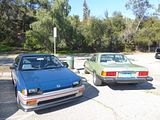

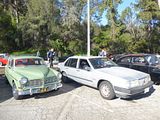
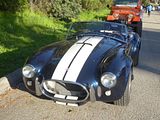
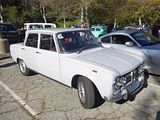
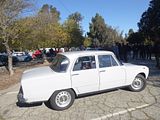
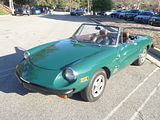
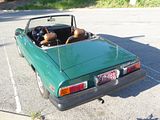

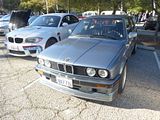
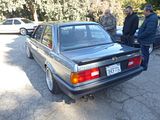

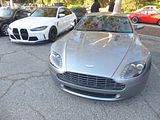
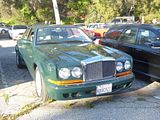
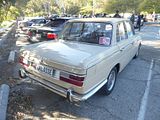
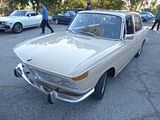
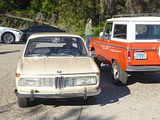
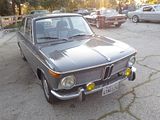
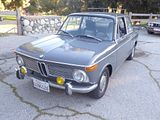

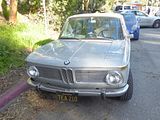
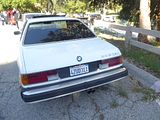

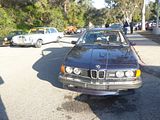
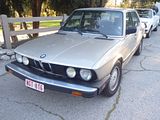
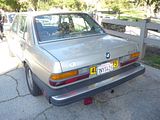
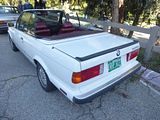
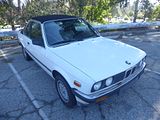


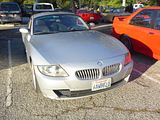
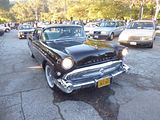
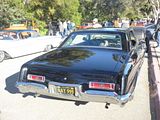
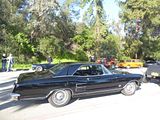

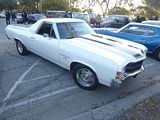
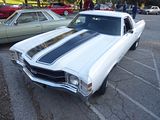

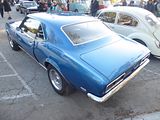
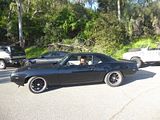
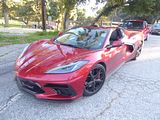

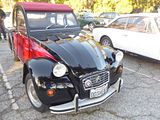
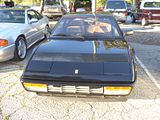
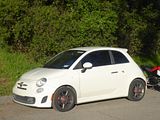

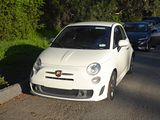

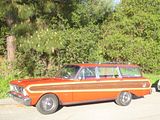
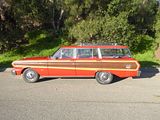
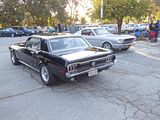
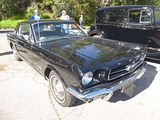
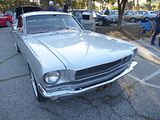
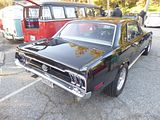
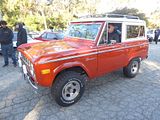
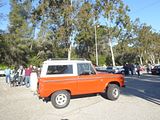

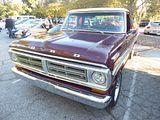
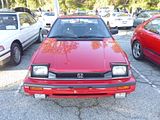
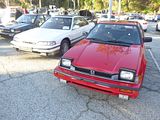
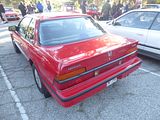
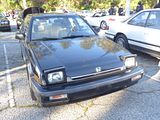
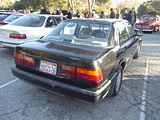
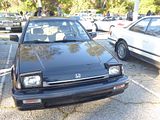
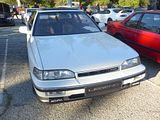
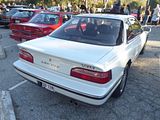
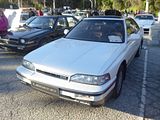
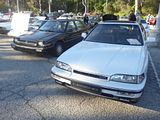


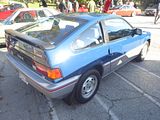
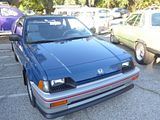
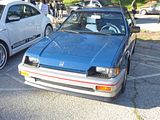

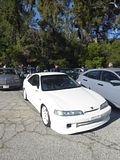
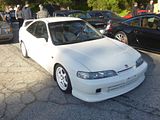
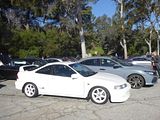
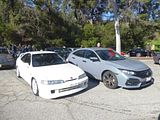
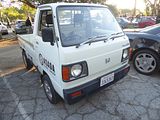
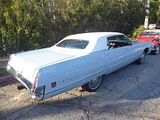
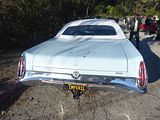
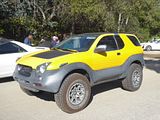
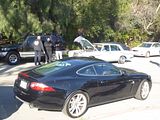
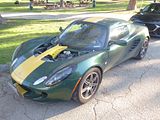
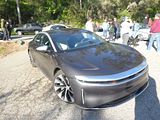
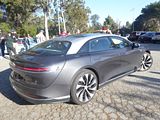
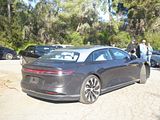
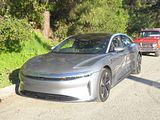

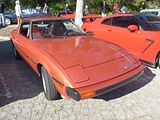
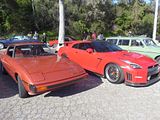
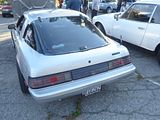
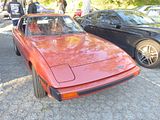
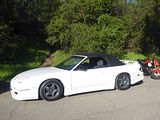
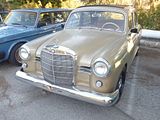
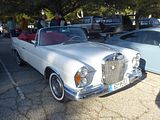
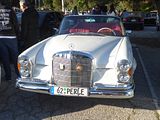
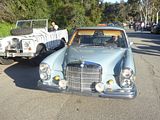
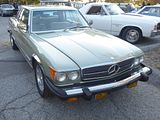
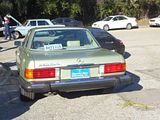
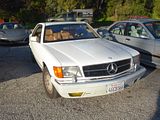
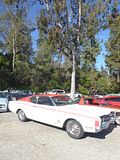
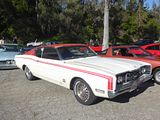
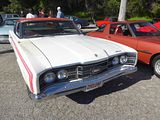
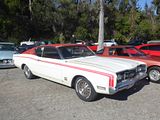
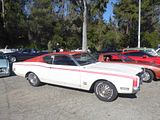

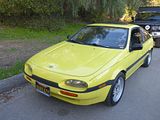


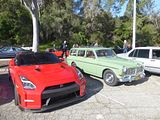
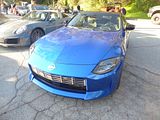
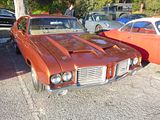
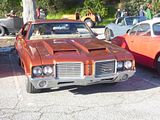
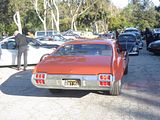
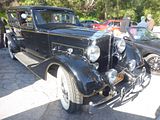
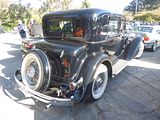
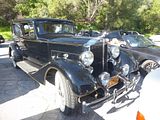
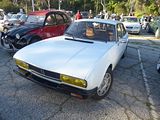


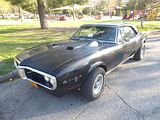

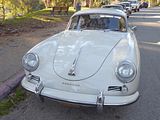
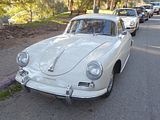
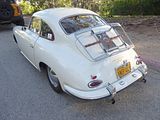

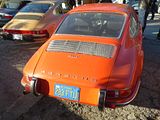


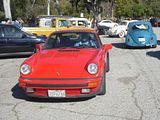
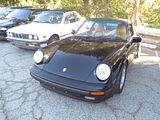

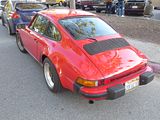


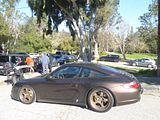
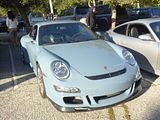
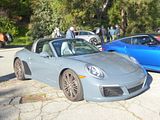


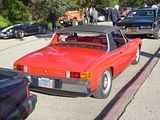
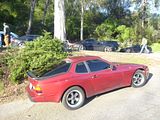
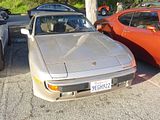
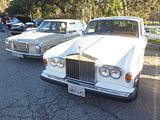
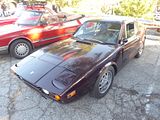

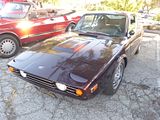
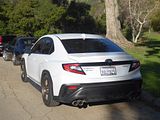
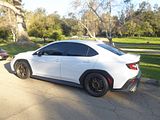
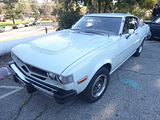
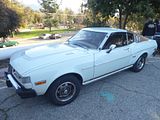
.jpg?width=180&height=120&fit=bounds)
